The best headphones for all budgets, real-world tested by our experts
The absolute best headphones for wired and wireless use, whatever you want to spend
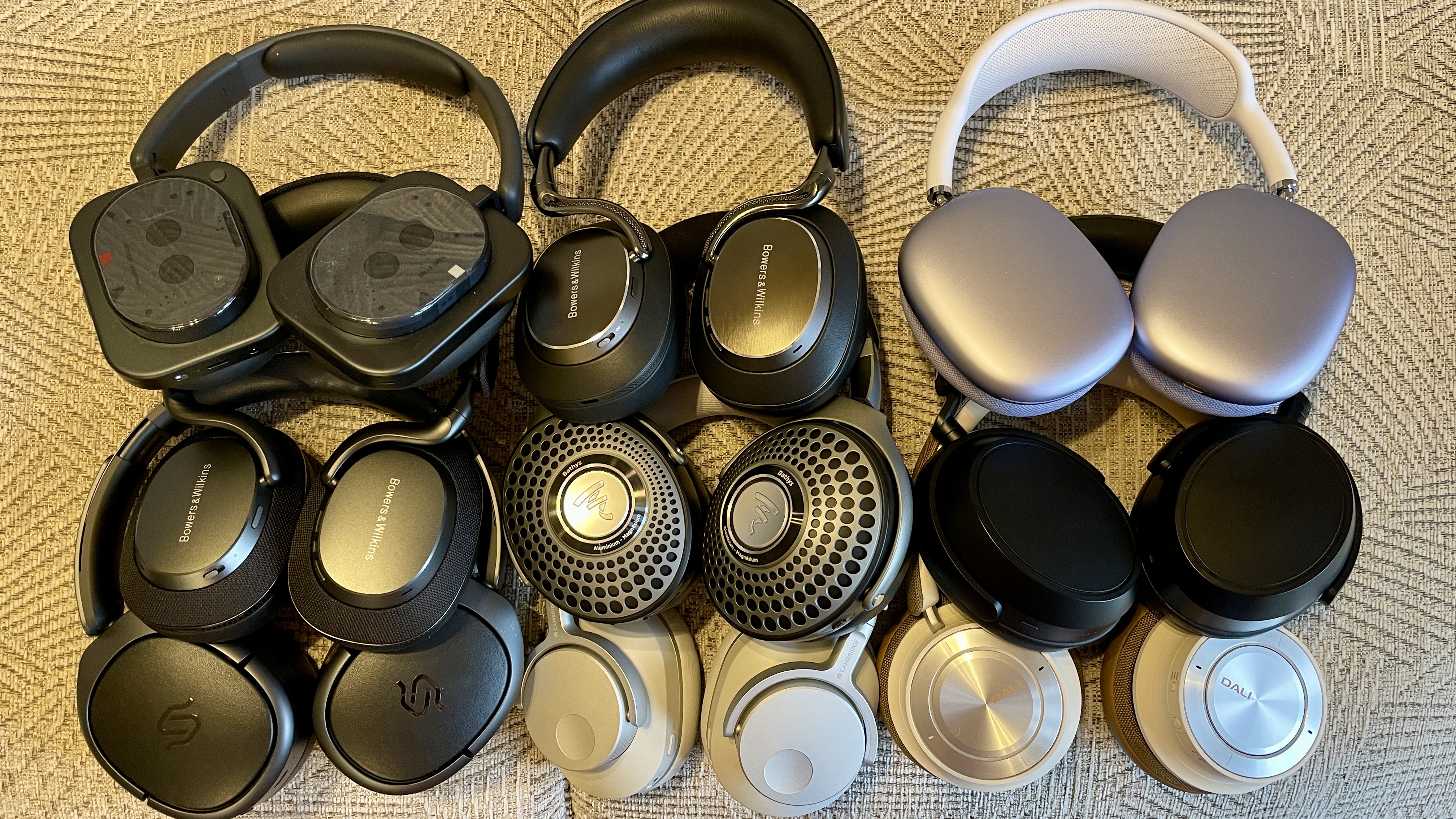
- Quick list
- Best overall
- Best budget headphones
- Best premium headphones
- Best ANC headphones
- Best for wireless sound
- Best for battery life
- Best affordable Sony
- Best budget wired
- Best mid-range wired
- Best audiophile wired
- Best looking budget buy
- More we tested
- Meet the team
- How to choose
- How we test
- Latest updates
With over 15 years of hands-on headphone testing, our expert team knows exactly what sets the best models apart. In this guide, every single pair we recommend here has been tested, compared and handpicked by us based on real-world performance.
Sound quality, comfort, smart features, value, we put it all to the test so you don’t have to. With so many models, brands and features out there, choosing headphones can feel overwhelming. So we’ve done the hard work for you and narrowed it down to the absolutely best headphones.
Looking for something specific? We’ve got guides to the best wireless headphones, best noise-cancelling headphones, or best cheap headphones if you're on a budget. For the hi-fi fans, read our guide to the best wired headphones. Need something smaller? Look at our picks for the best earbuds and best noise cancelling earbuds.
⭣ Read more
Every pair in this guide has been thoroughly tested in real-world conditions by the TechRadar audio team. We only recommend the models that truly impressed us, and we’ve whittled hundreds of options down to the bona-fide best buys in each category.
I lead TechRadar's audio reviews team, and I’ve pulled together the expertise of our entire group to create this guide. Combining deep testing experience with price, performance and everyday usability to help you find your perfect pair of headphones.

I've reviewed over 150 audio products since becoming a tech journalist, ranging from super-budget earbuds to high-end Hi-Res Audio music players. Before joining TechRadar, I spent three years at What Hi-Fi? testing everything the world of audio had to offer; before that, I was a professional dancer. My love of music ties it all together.
Our reviews are fully independent, and are written by people who've been steeped in the audio world for years – people who aren't wowed by marketing, and are focused on the results.
We test claims such as battery life by actually timing the headphones to see how long they last, we test music using both a standardized playlist (which you can see here if you want to try it for yourself) as well as whatever our reviewers want to listen to, and we test active noise cancellation in real conditions such as on public transport, in a café, and in an office.
Some elements of headphones are objective, but many are subjective, so we'll give you our honest opinion, and hopefully enough information for you decide if you think your views align with ours.
We review many more headphones than are featured here, so if a pair you're hoping to see are missing, you might find them in our list of other headphones we've tested. It doesn't mean we hate them, it might just mean that there's a pair a little bit better that we like more. Or it might mean we hate them, to be fair.
November 17, 2025
Added the CMF Headphone Pro as a new entry in at no. 11 as our 'best looking budget buy' based on recent testing.
The quick list
Get right to it with our easy-to-browse list of the best headphones for different needs. You can click to instantly jump to more full write-up of each model.
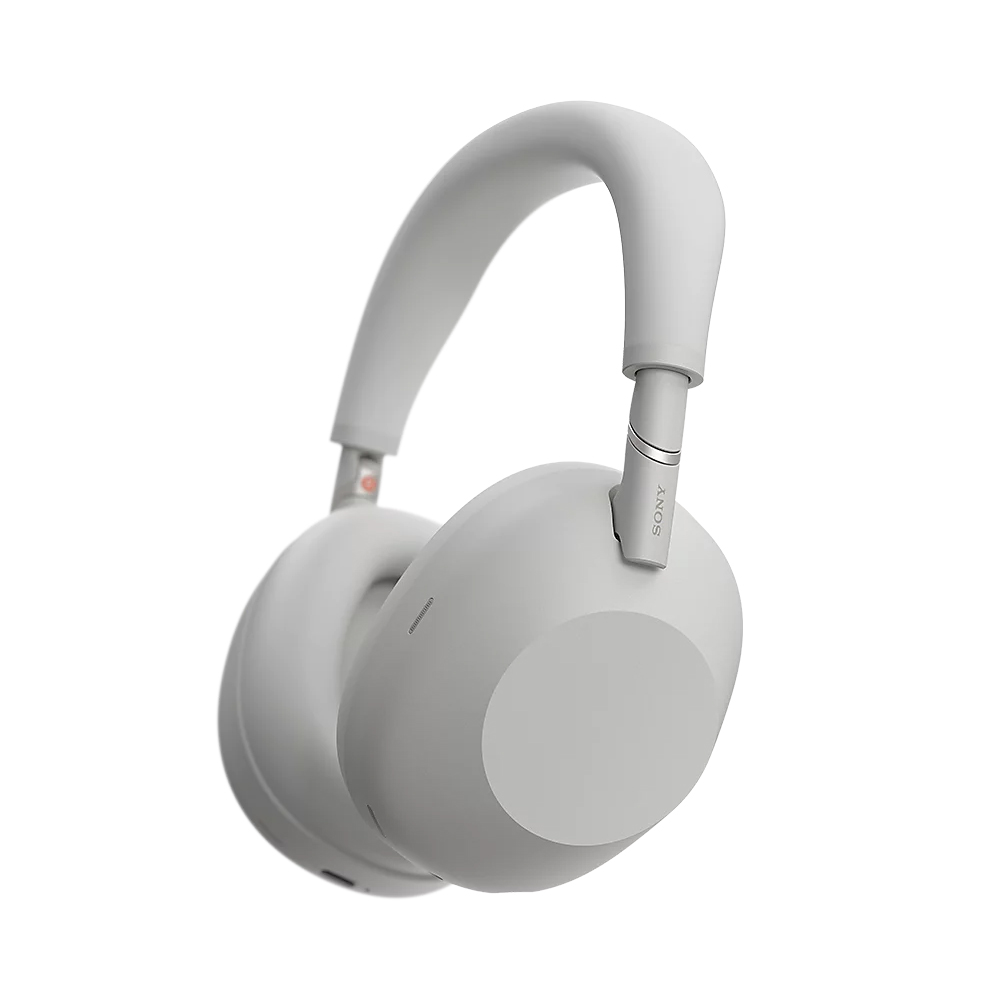
The best headphones for most people
Sony’s latest over-ears, the XM6s, now take the top spot on our list. Expect outstanding noise cancellation, excellent audio performance and a comfortable design. They are pricey, but if your budget stretches, they’re absolutely worth it.

The best low-price headphones
For under $100, these over-ears deliver a seriously impressive package. Customizable sound, strong ANC, and fantastic battery life. The build’s a bit basic, but for the price, they’re among the best we've tested.
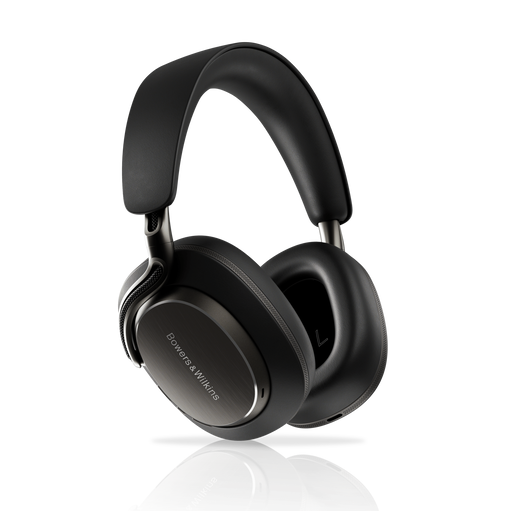
The best premium-priced headphones
Packed with excellent high-end features, a sophisticated design and stellar sound we truly cannot fault, these are top headphones for overall quality, and easily earn their premium price.
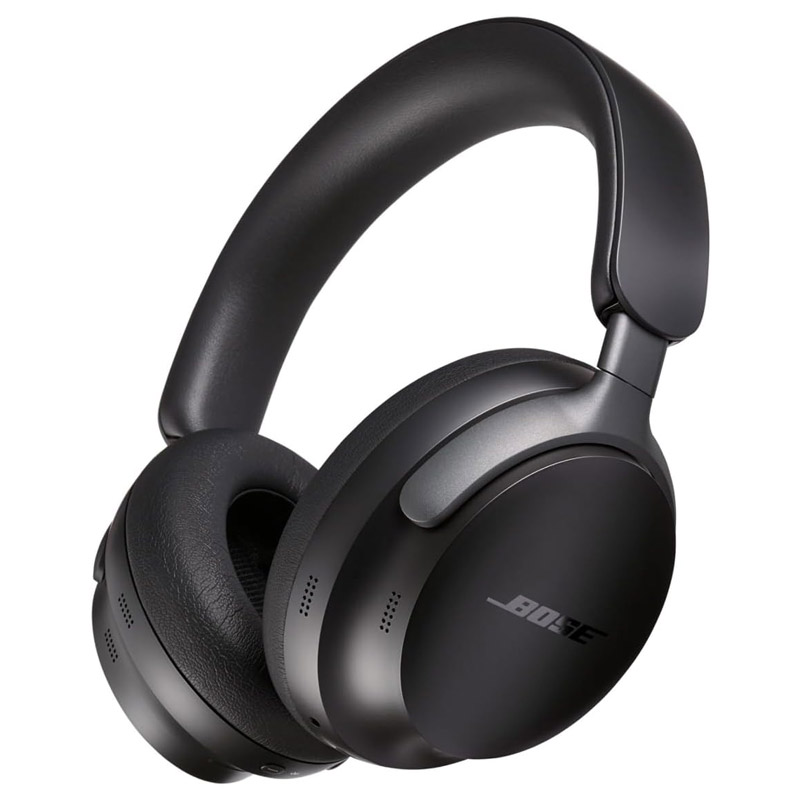
The best for ANC
The Sony XM6s are excellent at noise cancellation, but our top pick goes to Bose. They offer class-leading ANC, detailed sound and a comfortable fit. They’re not cheap, but worth it if blocking out the world is your priority.
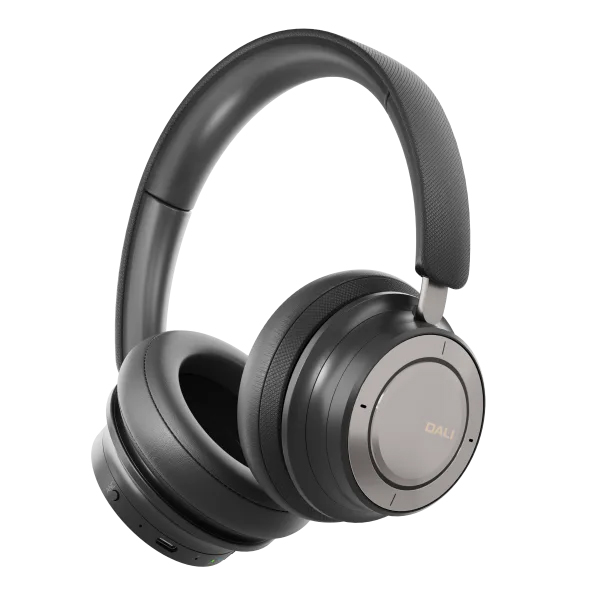
The best wireless headphones for sound
An excellent-sounding pair of wireless (but you can also use them wired) noise-cancelling headphones with a sleek-looking design and outstanding build and finish.
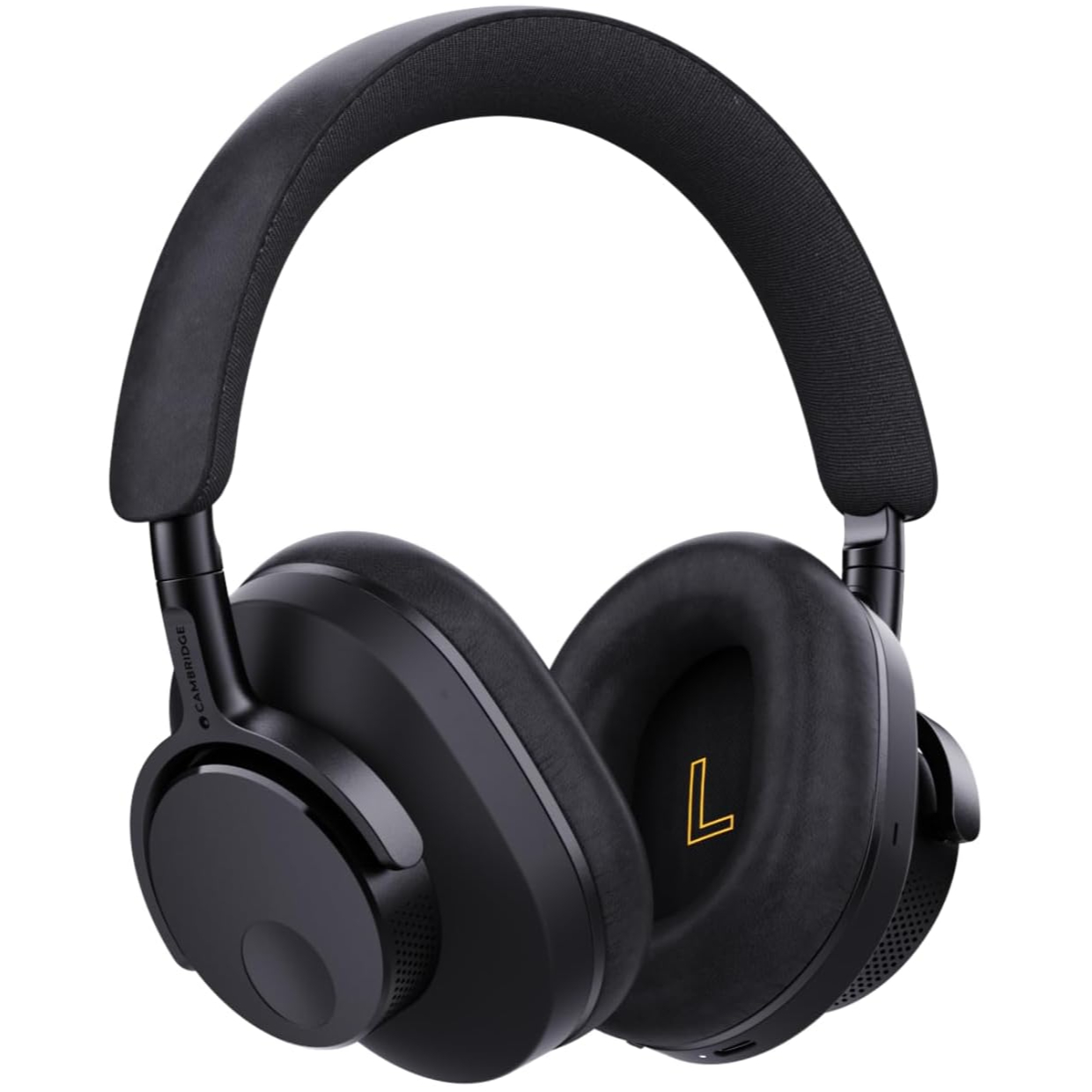
The best headphones for battery life
Packed with great features, stunningly natural sound and 60 hours of battery life (double what the Sony XM6 gets you), these are perfect if you want high-quality sound you rarely need to charge.
Load the next products...

The best affordable Sony buy
The WH-1000XM4 sat at the top of this list for years, but while they’ve now been replaced by the newer XM6s, they’re still a fantastic choice if you want Sony’s quality without paying top dollar.

The best budget wired headphones
An incredibly good-value pair of wired over-ears that bring you detailed, enjoyable sound in a package that's understated but comfortable enough for long listening sessions.
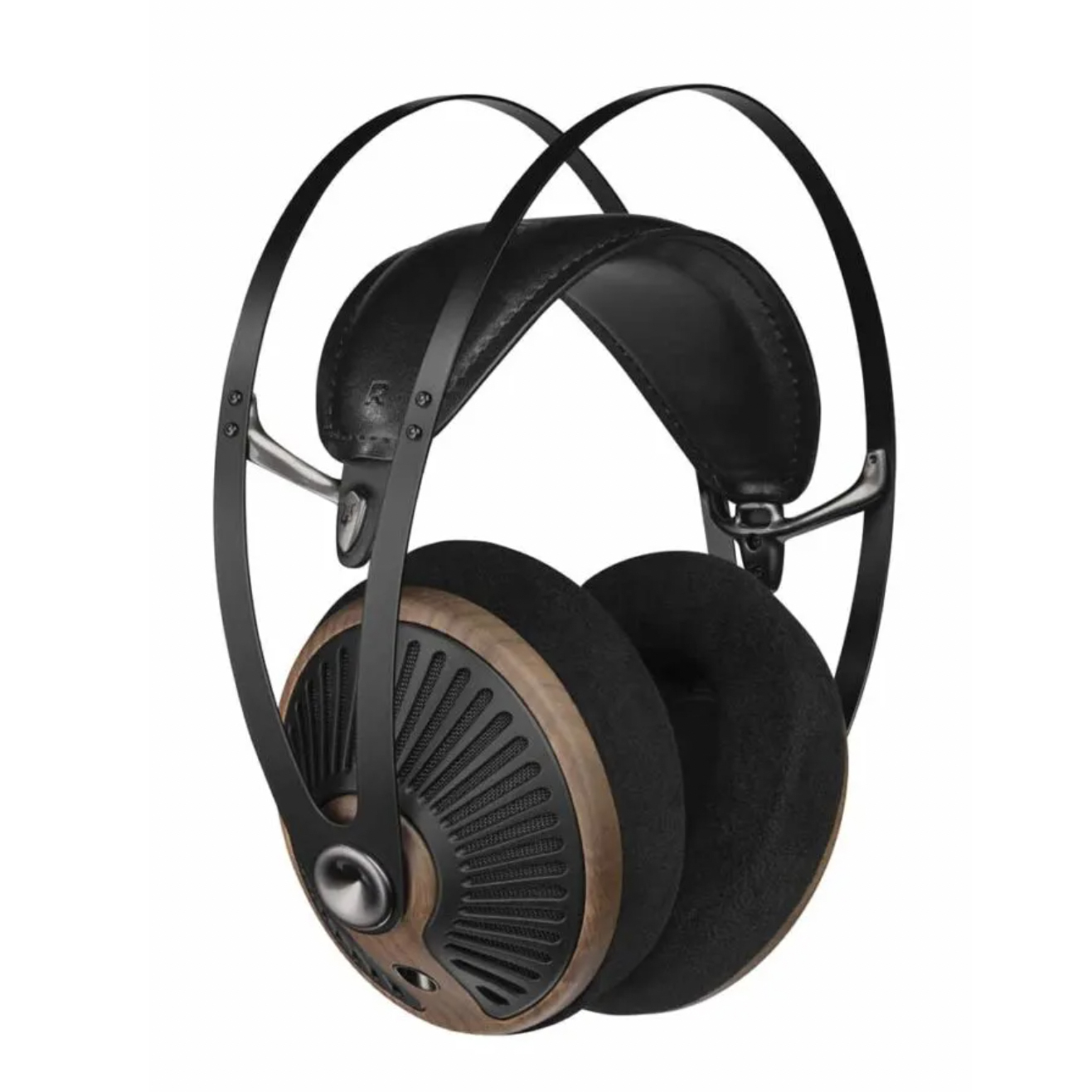
The best mid-range wired headphones
Exceptionally comfortable with immersive sound, the Meze Audio 105 Silva deliver a noticeable warmth in the low end while still handling high frequencies beautifully. At a surprisingly accessible mid-range price, they’re a rock-solid choice.
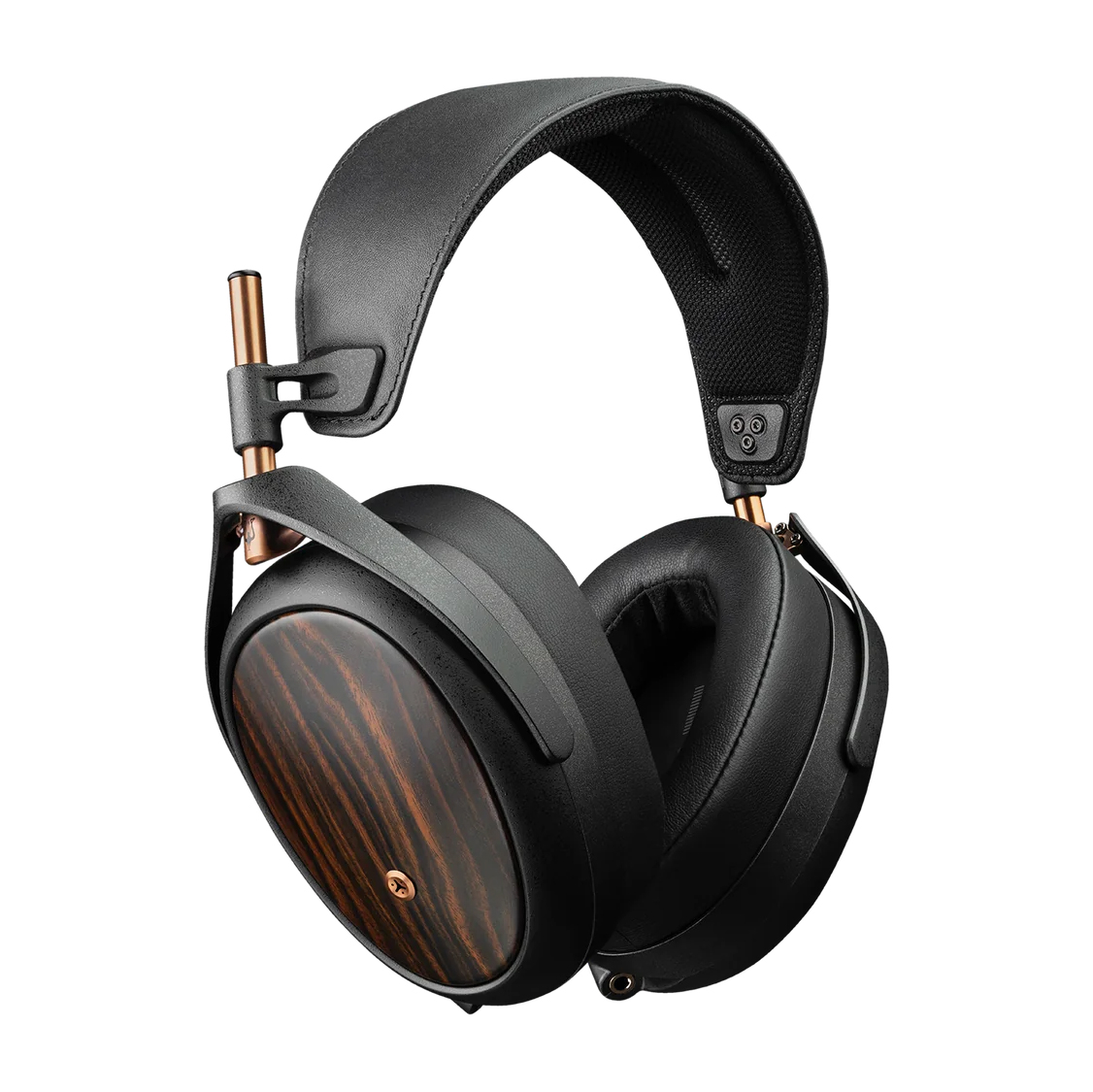
The best audiophile wired headphones
These wired over-ears are our top pick if you're looking for an incredibly detailed and revealing sound. Although they're incredibly expensive, for the most discerning of listeners, they're also absolutely worth it.
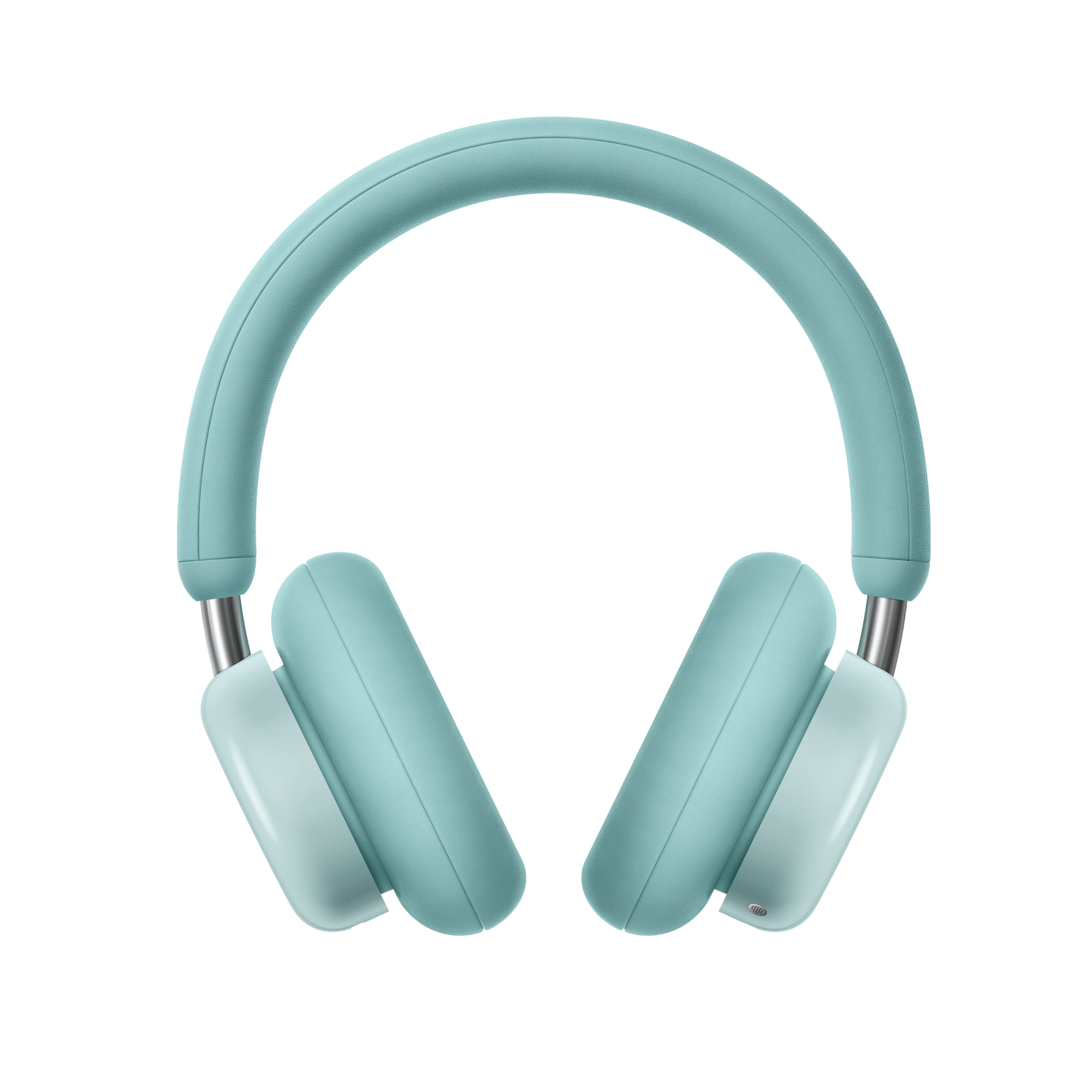
The best looking budget headphones
Our top pick if you care about style as much as sound – just look at that pistachio green. They're packed with features, like an 'energy slider' to dial up the bass – and we're already seeing tempting discounts.
The best headphones you can buy
Why you can trust TechRadar
Below you'll find full write-ups for each of the best headphones in our list. We've tested each one extensively, so these recommendations are based on real-world experience.
The best headphones for most people
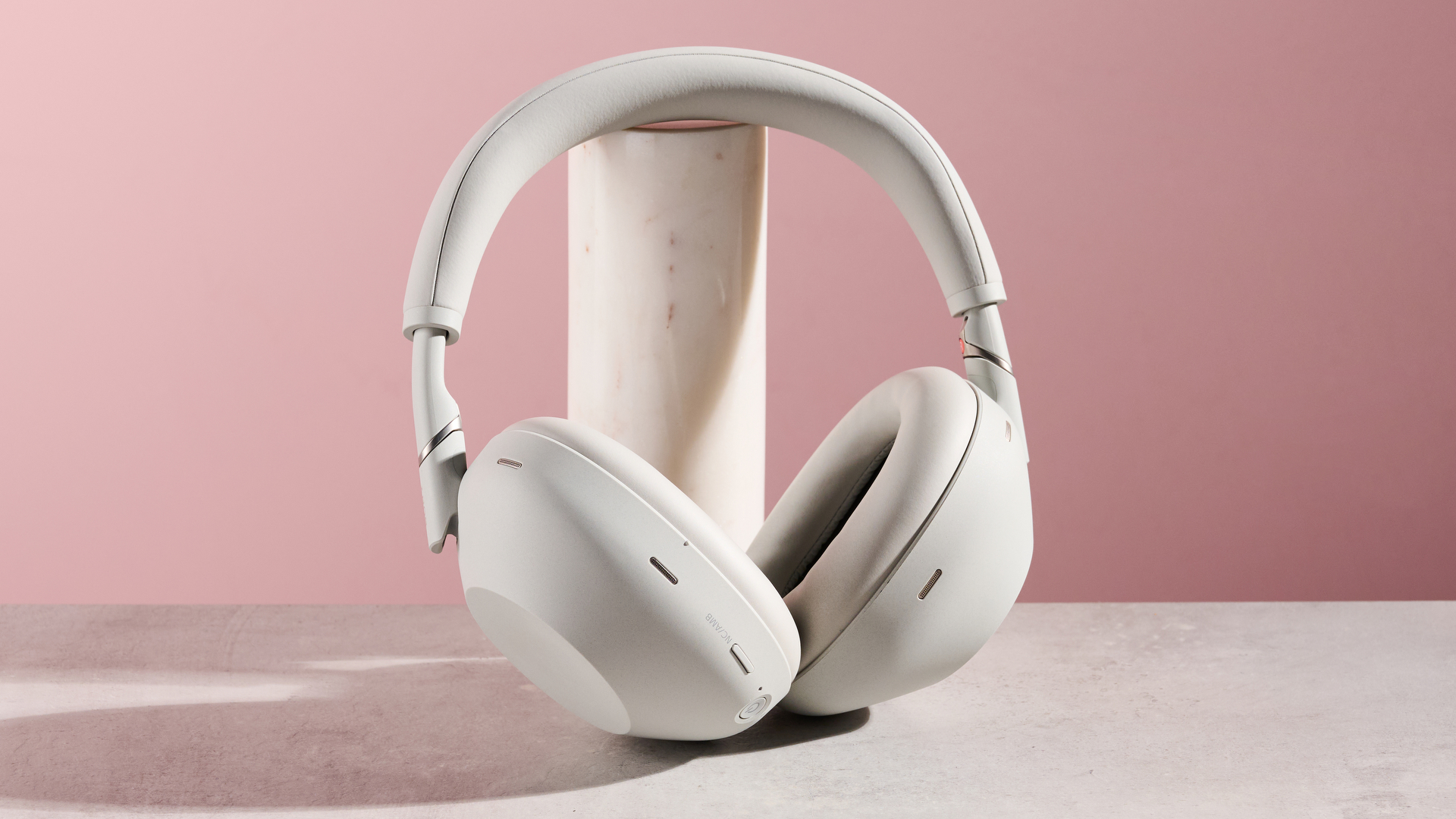
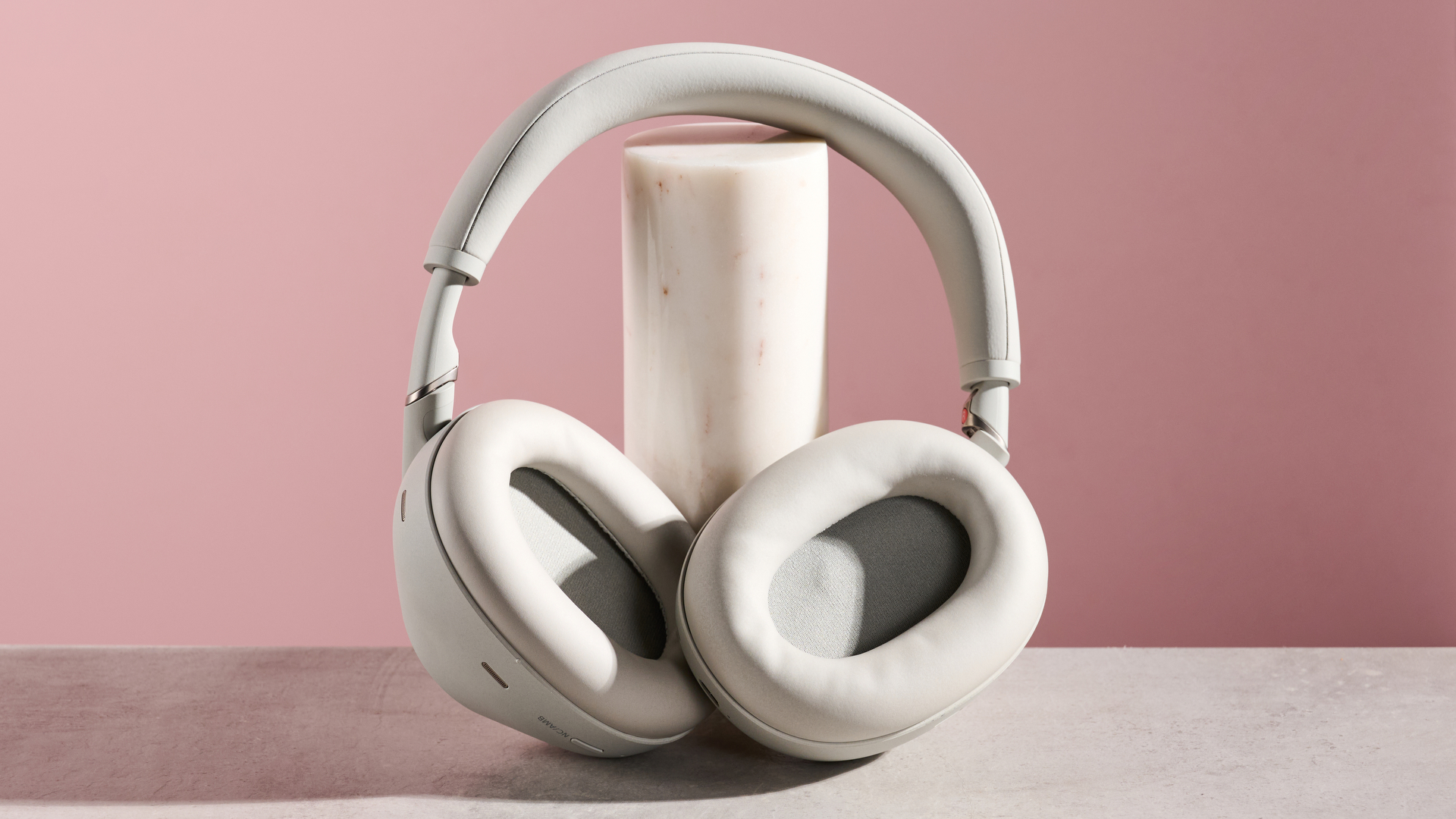
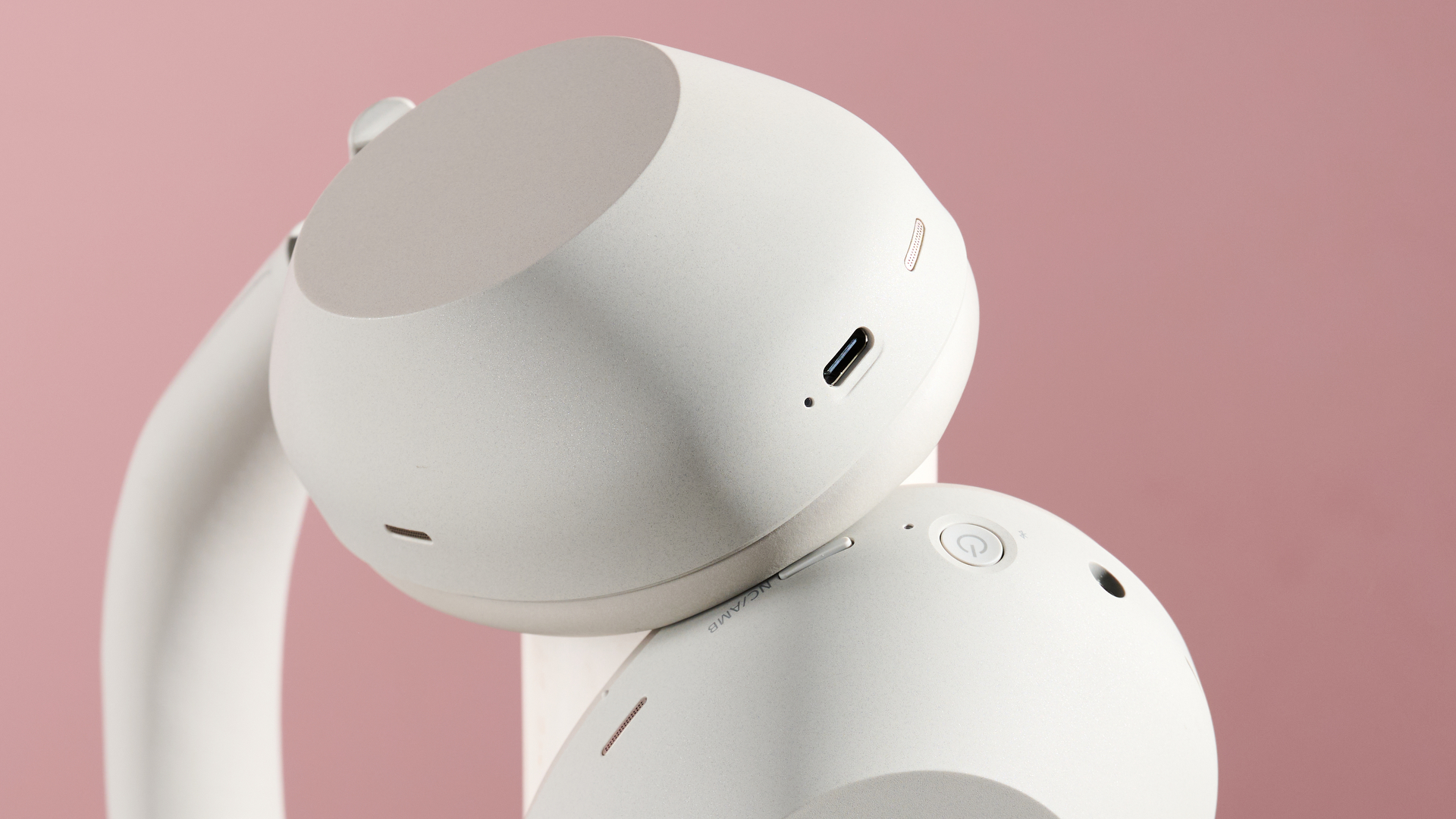


Specifications
Reasons to buy
Reasons to avoid
✅ You want industry-leading ANC: These headphones deliver best-in-class noise cancelling, rivalling even Bose’s top models. Whether it’s urban noise, appliances, or office chatter, they effectively mute the outside world.
✅ You value advanced features: With LDAC, DSEE Extreme, adaptive ANC, customizable EQ, and spatial audio support, these headphones are built for serious audio fans.
❌ You’re trying to keep costs down: These are premium headphones with a premium price. For something more affordable, look at Sony WH-1000XM4 at #7 on the list or the 1More Sonoflow Pro HQ51 at #2 on the list.
❌ You need extended battery life: 30 hours per charge is respectable, but not standout. Competing models like the Cambridge Audio Melomania P100 at #6 offer three times as much.
The Sony WH-1000XM6 headphones are the most advanced the brand has ever made. We loved how they blend the design strengths of the XM4 and XM5 that came before them, and build on everything Sony’s already done well with noticeably better ANC and more expressive sound. Sony promised “improvements in every single way,” and this time the marketing line holds up.
We found the touch controls to be sleek and intuitive, and the headphones are packed with features. But it's the ANC that stands out the most here, thanks to Sony’s new QN3 processor and a whopping 12 microphones, you get world-class noise cancelling that we think just about outperforms the Bose QuietComfort Ultra Headphones. Public transport becomes blissfully quiet.
Battery life is average at 30 hours, which is passable given the power behind the ANC. You can use them while charging, and a quick three-minute charge gives you three hours of playtime, which is a big win if you're on the go. The Sony Headphones Connect app is also excellent, with EQ settings, adaptive sound control, LDAC higher-res wireless, and a neat spatial mode for more immersive audio.
The 30mm drivers combined with that new QN3 chip deliver punchy bass, detailed mids, and sparkling treble. It’s a clean, balanced listen, whether you're tuning into a podcast or getting lost in an album. Those 12 mics don’t just help with ANC either, they make call quality crisp and reliable.
Design-wise, they’re incredibly comfy. Lightweight with a wider headband and snug fit. They fold, unlike the XM5s, which means they’re more portable again. The hinges feel sturdier, the case is more compact, and the overall finish is smoother and more refined. There's still no waterproofing, though, and some might find them a bit bulky on the head compared to a few alternatives.
They're not cheap at $449 / £399, and the price bump over the Sony WH-1000XM5 is notable. But if you're after class-leading ANC that also comes with all the best smart features, this is the all-rounder pair of headphones you're after.
Read our full Sony WH-1000XM6 headphones review
The best budget headphones
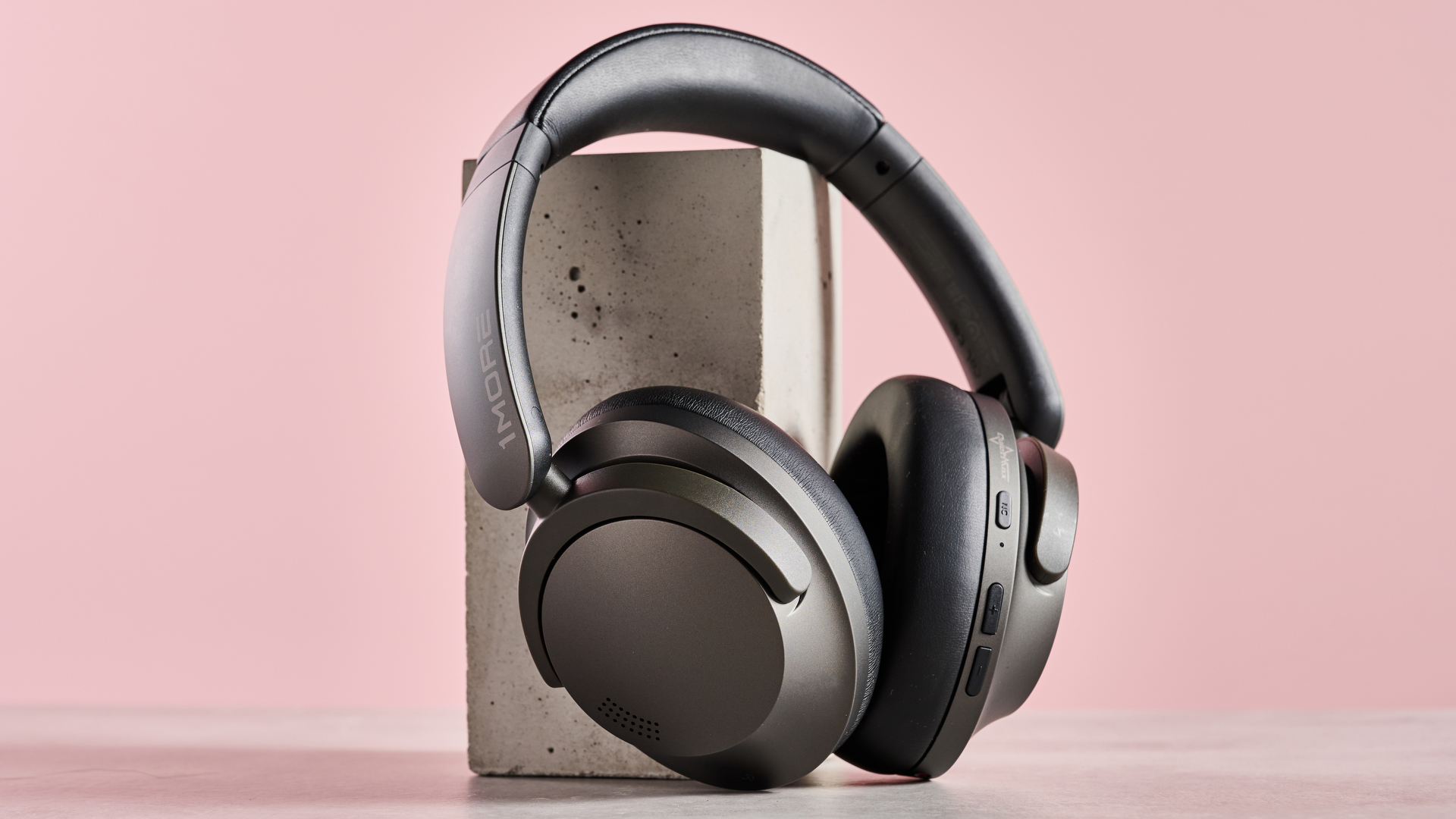
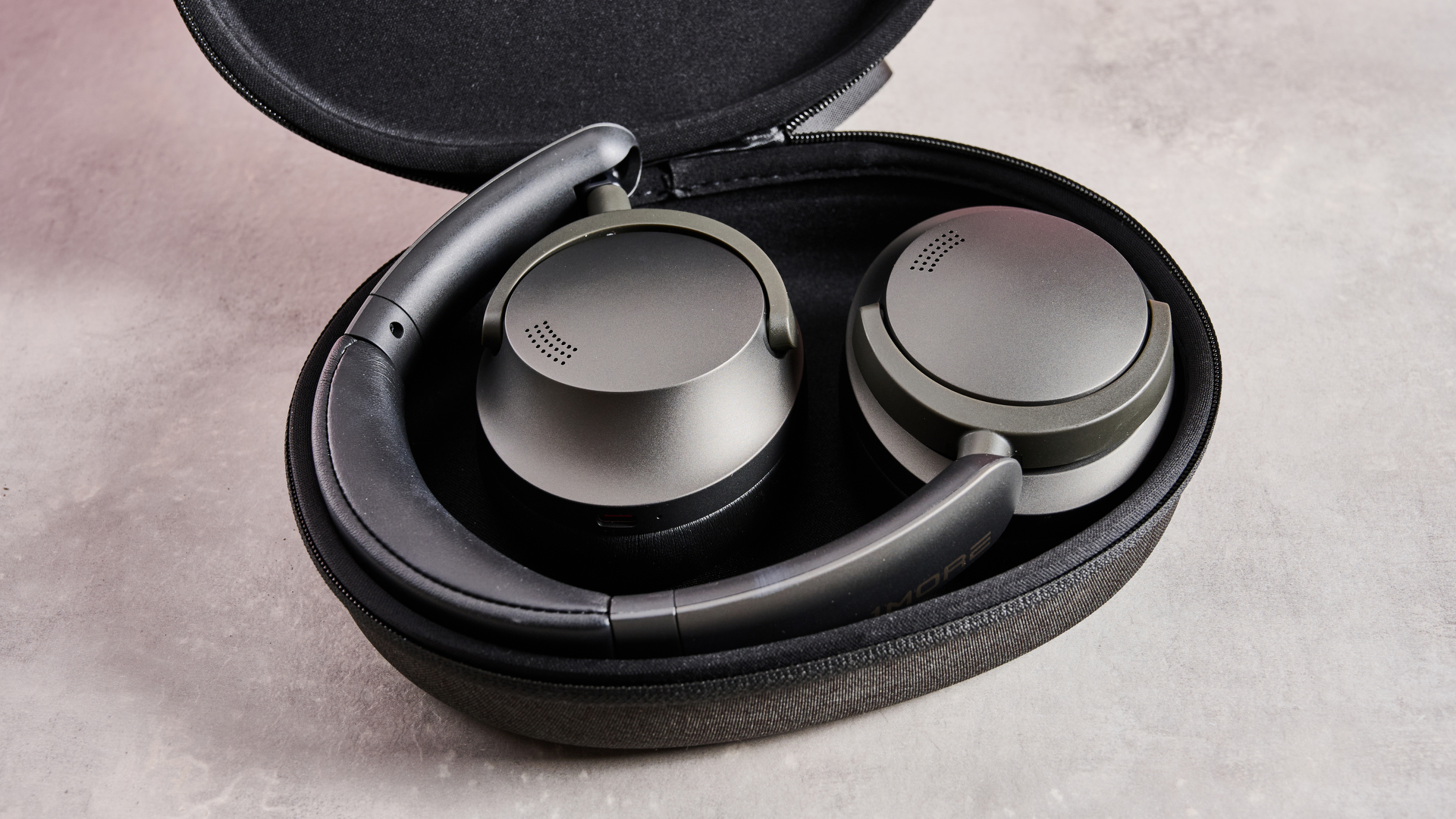
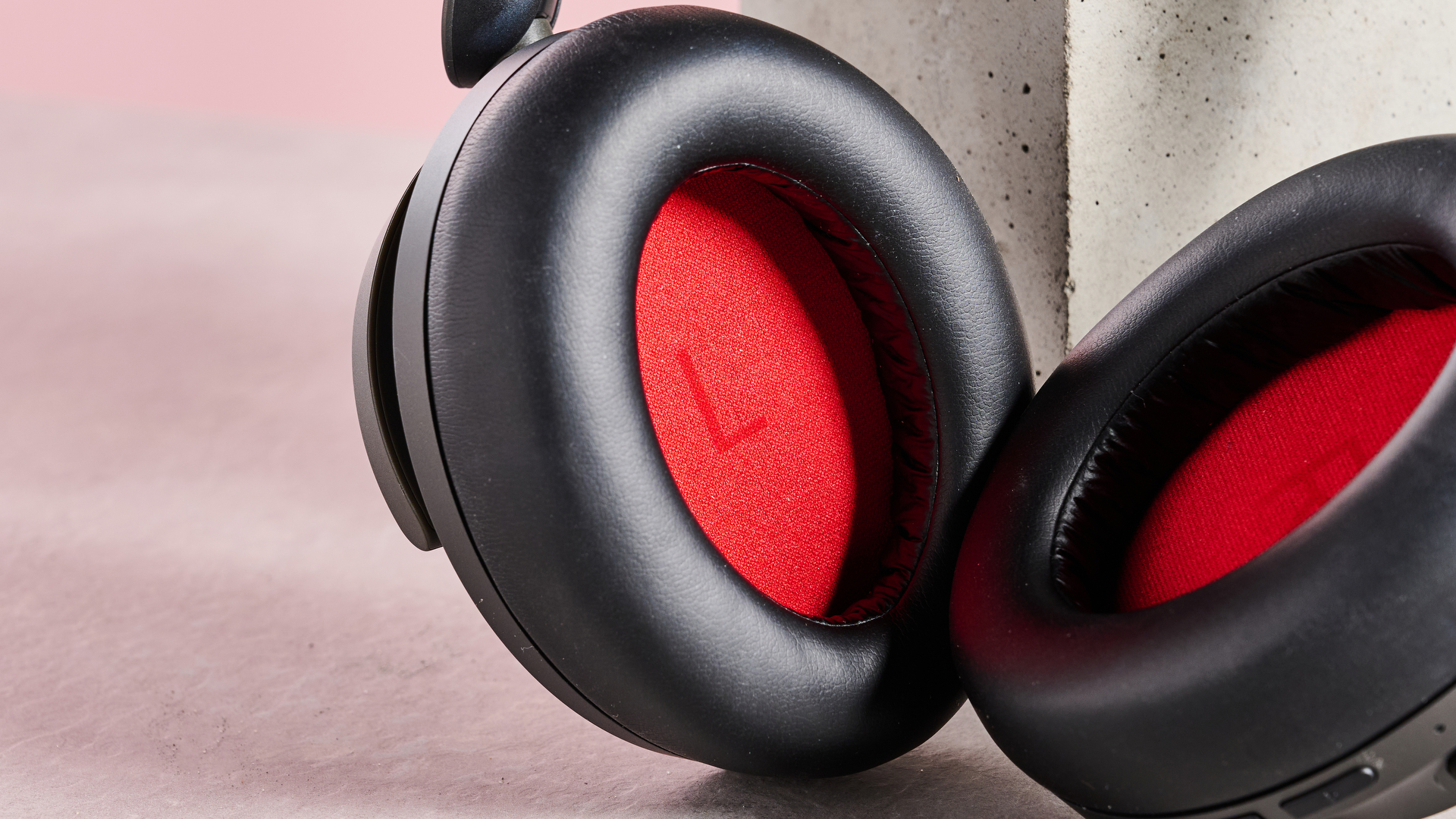
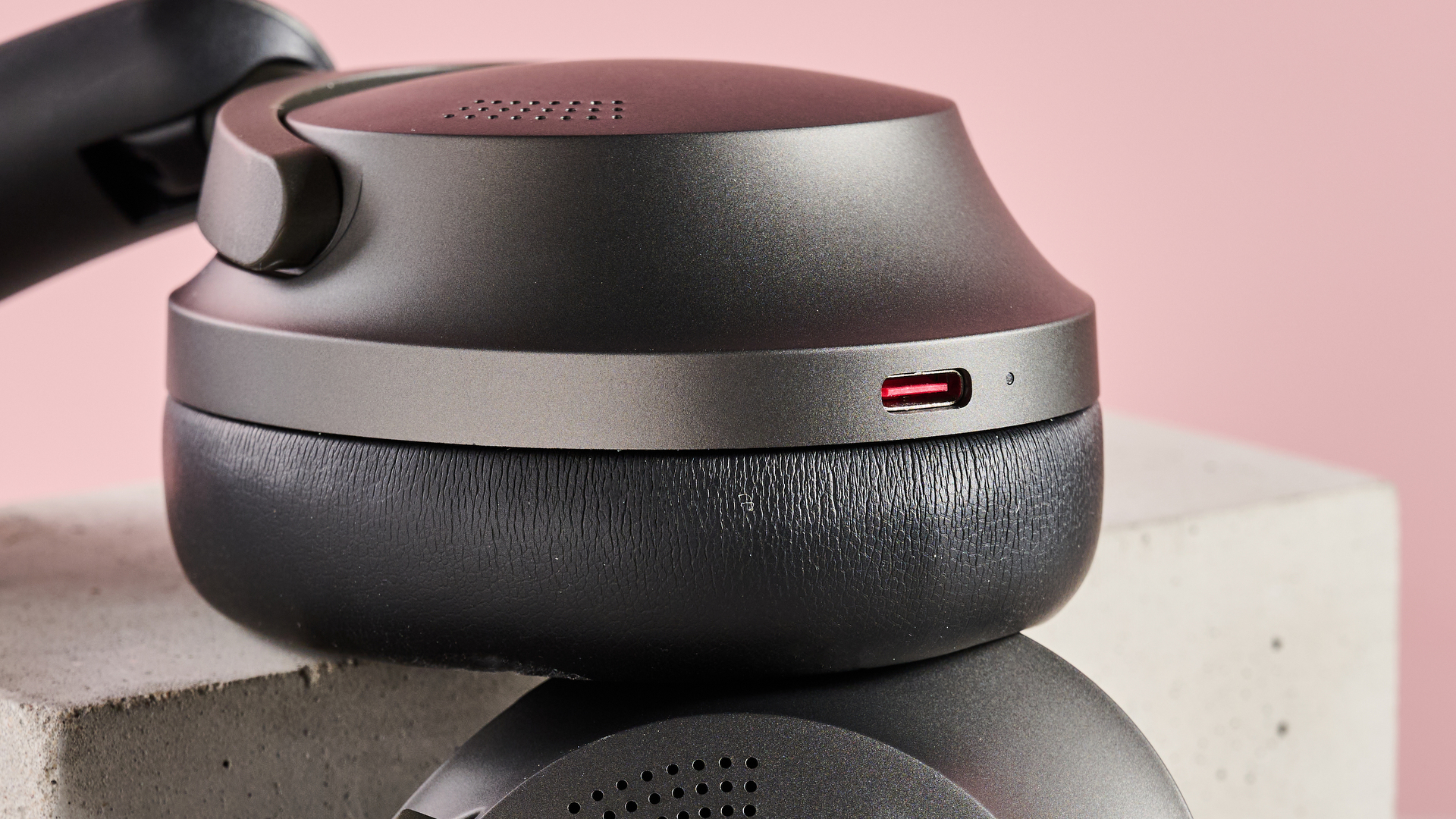
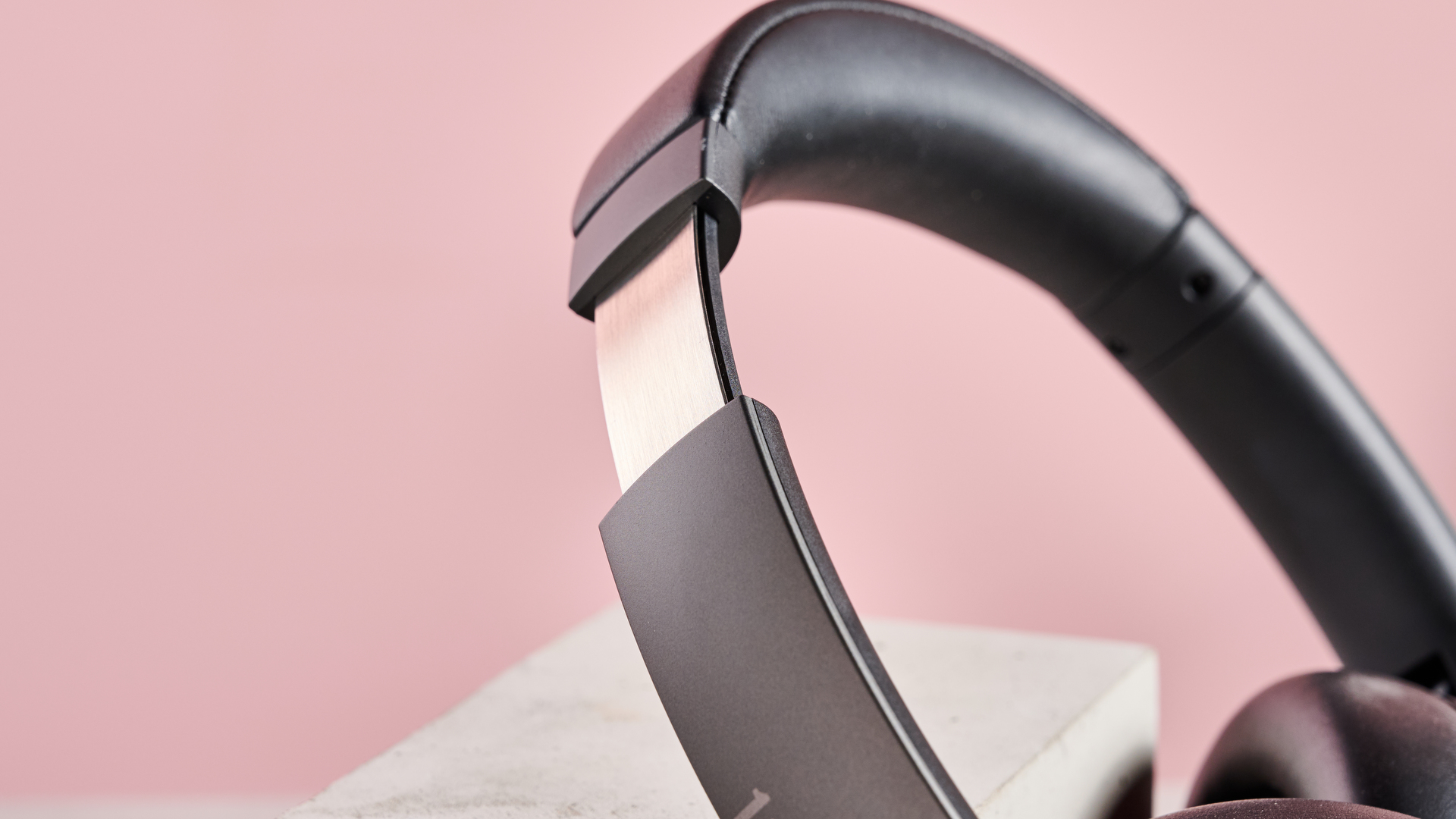
Specifications
Reasons to buy
Reasons to avoid
✅ You want surprisingly good ANC: They block out background noise better than you'd expect for the price, with a handy passthrough mode.
✅ You’re on a budget: At under $100, they pack in solid sound and features without draining your wallet.
❌ You want audiophile-level sound: Yes, they sound great for the price, but they don’t quite reach the rich, detailed heights of premium headphones.
❌ You want a luxury finish: They look sleek enough, but the build feels a bit plasticky – if you're after something ultra-sturdy or high-end, they might not hit the mark.
The 1More Sonoflow Pro HQ51s are a standout pick for budget over-ear headphones, packing in a seriously impressive spec list for the price. Here, you’ll find strong ANC, customizable sound, and a battery life that wipes the floor with many premium rivals. All in all, they’re a great option for anyone who wants feature-rich headphones without breaking the bank.
Feature-wise, you get support for LDAC for high-res Bluetooth streaming, multi-point connectivity, and a companion app with EQ controls and ANC modes. There’s also passthrough here, which means you can hear the outside world when you need to, and battery life is a real highlight – up to 100 hours with ANC off, or 65 with it on.
Audio performance is big and bold, leaning towards a bassier signature that's great for pop, hip-hop, and electronic music. Detail is solid, especially if you're using LDAC or the wired connection, and the app lets you tweak the EQ to suit your taste. You won’t get premium-tier sound, but at this price you wouldn’t expect it either, would you? Because what’s important is these headphones are seriously impressive for this price bracket.
The 1More Sonoflow Pro HQ51 also look the part, with a sleek matte finish and angled earcups that feel modern and stylish. They’re comfortable enough for long listening sessions too, with plush padding on the headband and earcups. Build quality does feel a bit plasticky at times, but again, that makes sense considering the asking price.
Add in a sturdy carry case, wired connection, and a solid mic for calls, and these over-ears deliver one of the best all-round budget headphone packages out there. If you're after long battery life, punchy sound and ANC on a budget, they’re hard to beat.
Read our full 1More Sonoflow Pro HQ51 review
The best premium headphones




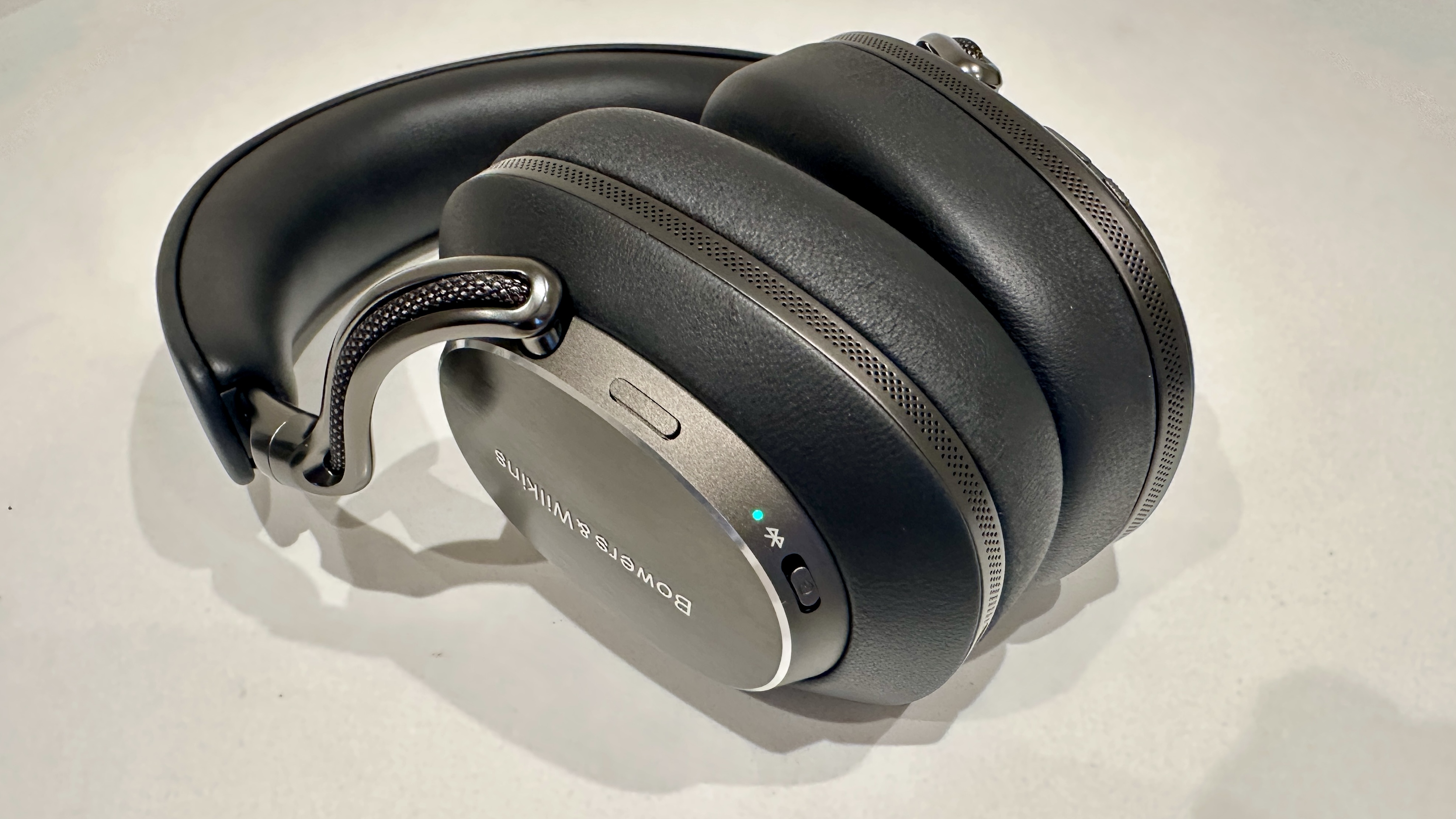
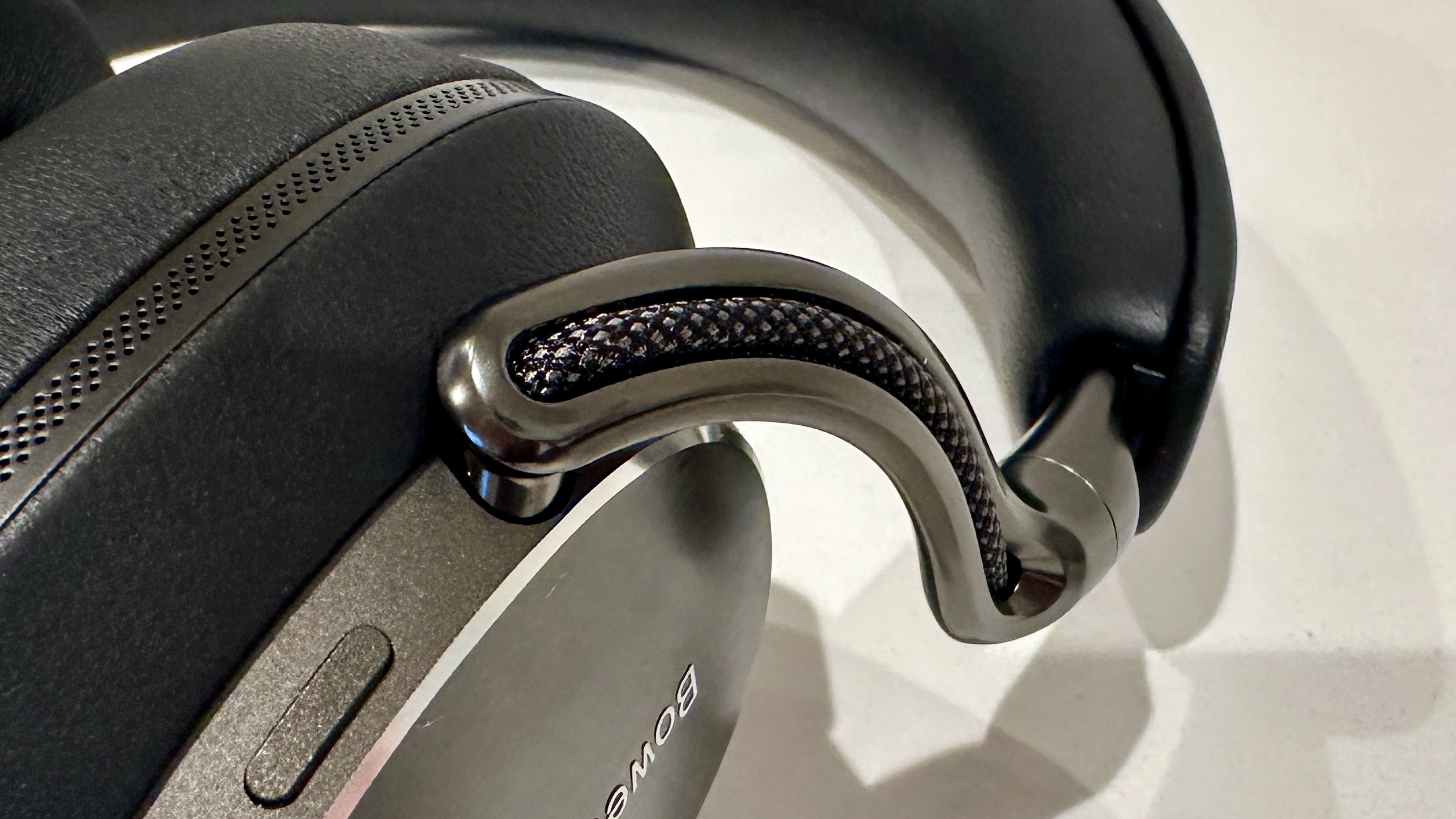
Specifications
Reasons to buy
Reasons to avoid
✅ You appreciate sophisticated industrial design: Thee aren’t flashy, but they’re beautifully made. They combine high-end materials with elegant, subtle design touches that make them feel refined without being loud.
✅ Sound quality is your top priority: If you’re in it for pure audio performance, these deliver in spades. The positives massively outweigh the negatives.
❌ You demand the very best ANC available: They handle noise well, but they’re not class-leading in this area. The ANC is “very good” rather than jaw-droppingly great.
❌ You like your luxury loud and proud: They ooze premium quality, but in a quiet, confident way. If you want big logos or a design that screams “I spent a lot on these,” the Px8 S2’s are more understated.
The Bowers & Wilkins Px8 S2 are luxurious over-ear, wireless ANC headphones that prioritize sound first and everything else second. If you want the most musically convincing noise-cancellers in their class, these are it – although if you demand the very strongest ANC above all else, look elsewhere.
B&W hasn’t reinvented the wheel with these headphones, just refined it. In the Px8 S2 you get 40mm carbon-cone drivers, Bluetooth 5.3 with SBC/AAC plus aptX Adaptive and aptX Lossless, USB-C audio, and around 30 hours of battery life with fast charging. The ‘Music’ control app is excellent too, with an EQ and wear-sensor controls.
The audio here is big, open and properly organized. The Px8 S2 build a spacious, coherent stage, dig out fine detail and swing through dynamic shifts easily. Bass is deep, textured and controlled. Mids are articulate and expressive for voices, and highs have bite. Tonality sits on the neutral side, so they flatter a wide range of genres and don’t fall apart with lower-quality streams – though they clearly do a better job with better sources.
Design and comfort levels match the sound. The aluminium and nappa leather look and feel expensive without shouting about it, the 310g frame is well balanced, and the fit is plush for long sessions. ANC is very good rather than Bose-level great, but the trade-off is worth it. If you value musicality, insight and elegant execution, the Px8 S2 are the best premium wireless headphones to beat.
Read our full Bowers & Wilkins Px8 S2 review
The best for ANC



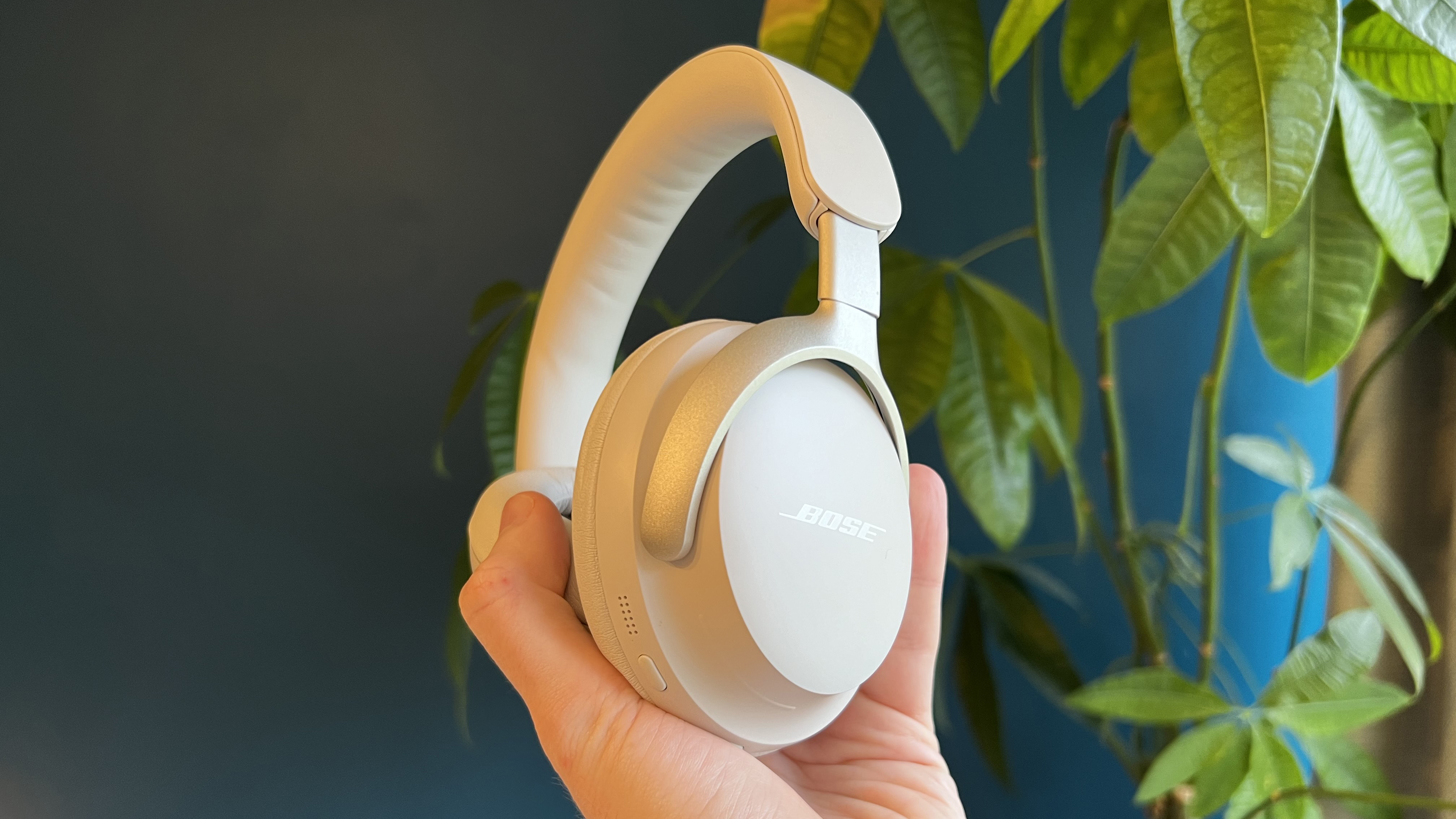
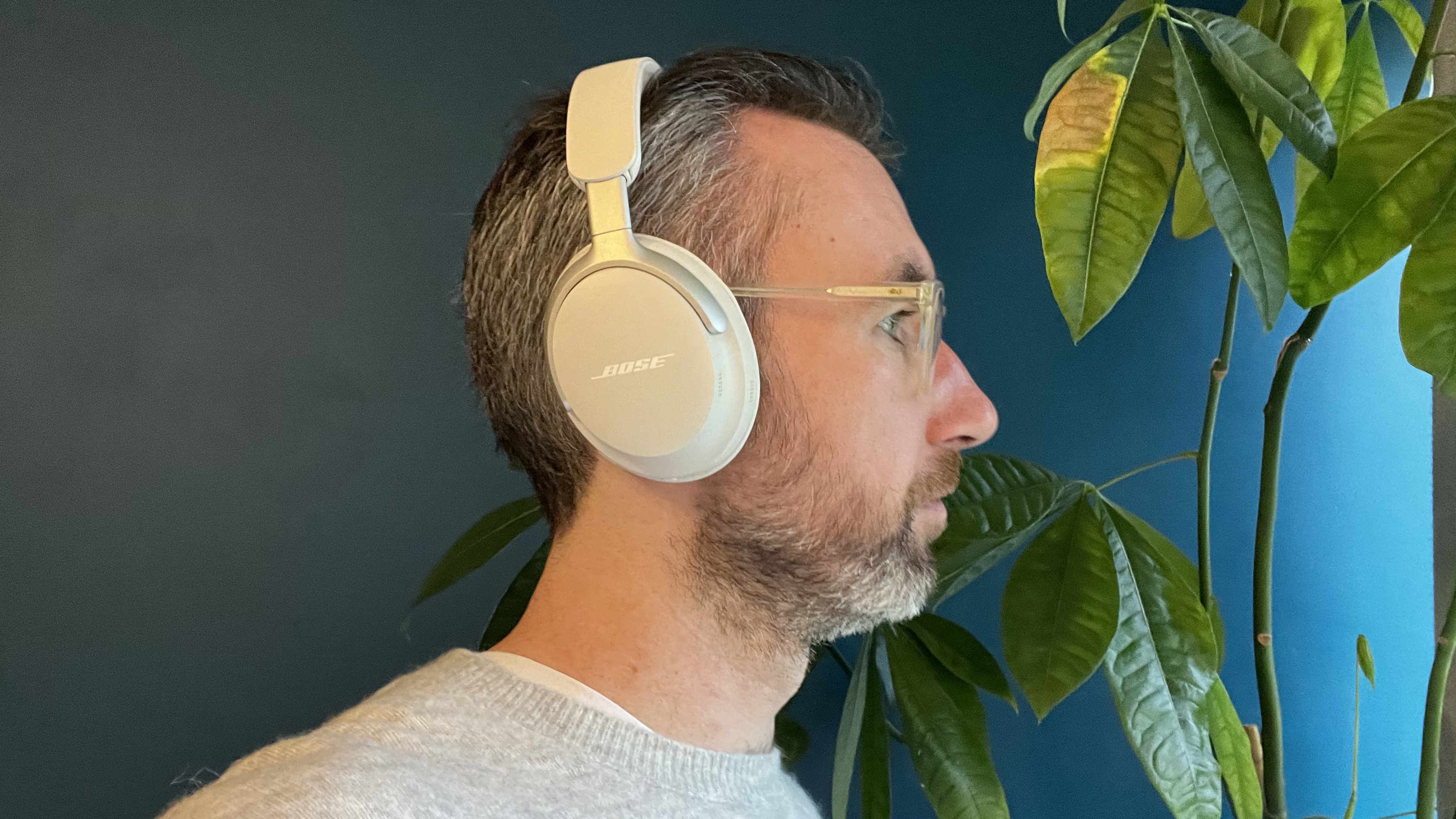
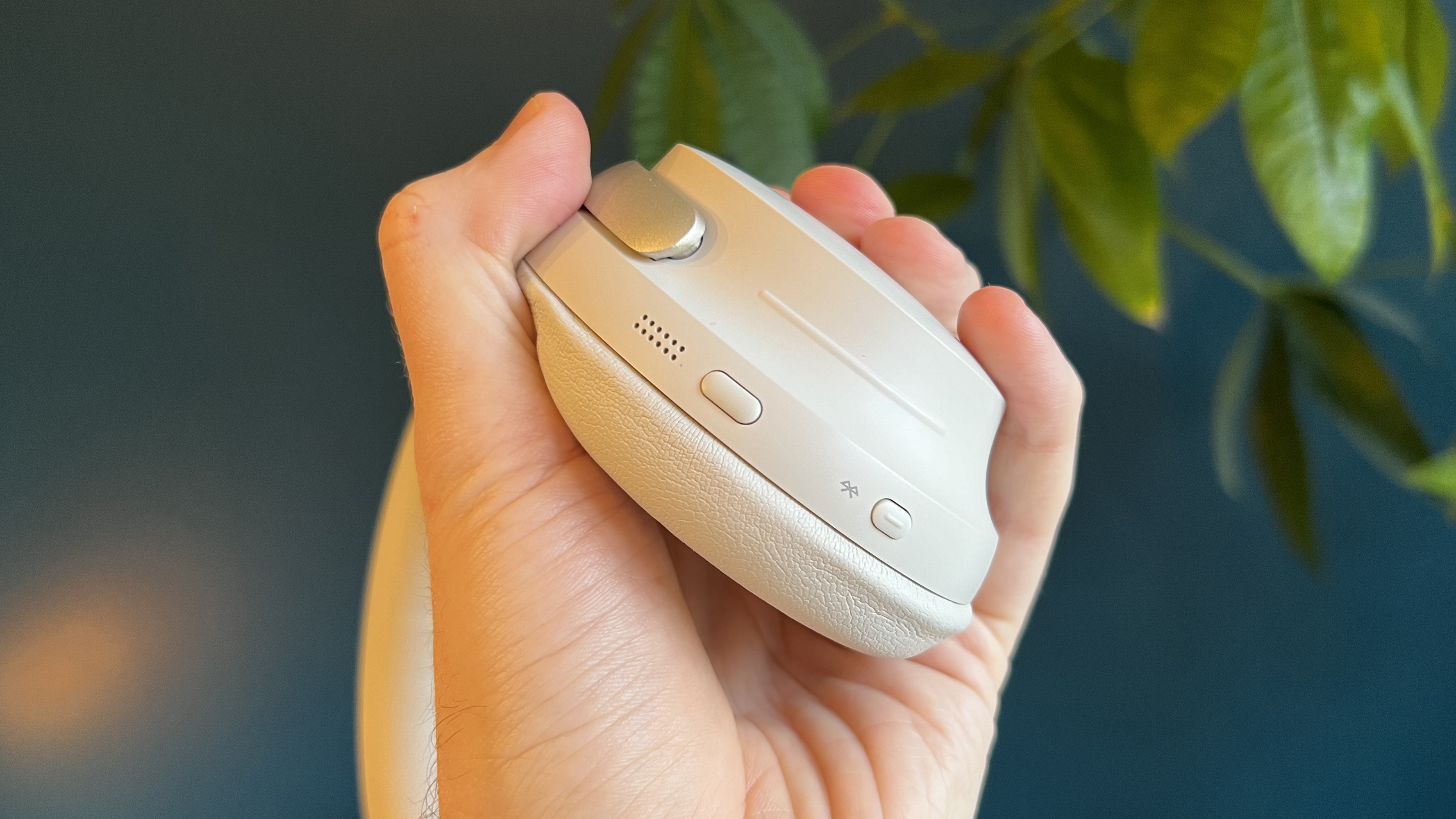
Specifications
Reasons to buy
Reasons to avoid
✅ You want class-leading ANC: Look, the XM6s at the top of this guide do ANC fantastically well too, but Bose has long been a leader in terms of noise-nixing and these headphones truly deliver.
✅ You want comfort and practicality: They're incredibly comfortable to wear, look slick and fold up, making them portable, too.
❌ You want hi-res audio support: You can use a wired connection for high-quality sound, but if you’re looking for aptX or USB digital Hi-Res Audio certification, the QuietComfort Ultra won’t deliver.
❌ You want marathon battery life: At 24 hours, battery life is decent. But it falls well short of rivals, which can offer more than double the time these days.
If quality audio and ultimate silence are your top priorities, then the Bose QuietComfort Ultra Headphones are our top pick. Bose pioneered active noise cancellation, and the ANC here is among the most effective we’ve ever experienced.
We tested them across as many noisy environments as possible, including long-haul flights and busy buses to crowded city streets, the TechRadar office, and at home. In every case, they shut out distractions with remarkable consistency. If what you want is silence and focus, these are hard to beat. That said, the cheaper Bose QuietComfort Headphones perform almost as well for ANC, though they can’t quite match the Ultras for audio quality.
Audio quality is a clear step up from Bose’s previous models. Even with ANC on, the sound is powerful and stunningly detailed. “Some of the most alive, exciting, textured, finely resolved, deeply engaging music I've ever heard from a pair of wireless headphones,” as we wrote in our review.
There are some drawbacks. Battery life is just 24 hours, which feels underwhelming when many rivals reach more than double that now. The Ultras also only support Snapdragon Sound for higher-quality audio, with no LDAC, aptX, or USB-C hi-res input. And no, they’re not cheap. But, as we said in our review: “From the moment you start using them, they feel worth every penny.” If those aren’t dealbreakers, though, the overall package more than lives up to the “Ultra” name and they provide the best noise-nixing around.
While we are recommending the Bose QC Headphones here as our top ANC pick, it is worth mentioning that a new 2nd gen set of has just landed. We're in the process of reviewing those and finalizing our verdict – we have high hopes given they’re expected to deliver even better ANC, USB-C audio and a much-needed battery bump.
Read our full Bose QuietComfort Ultra Headphones review
The best headphones for wireless sound
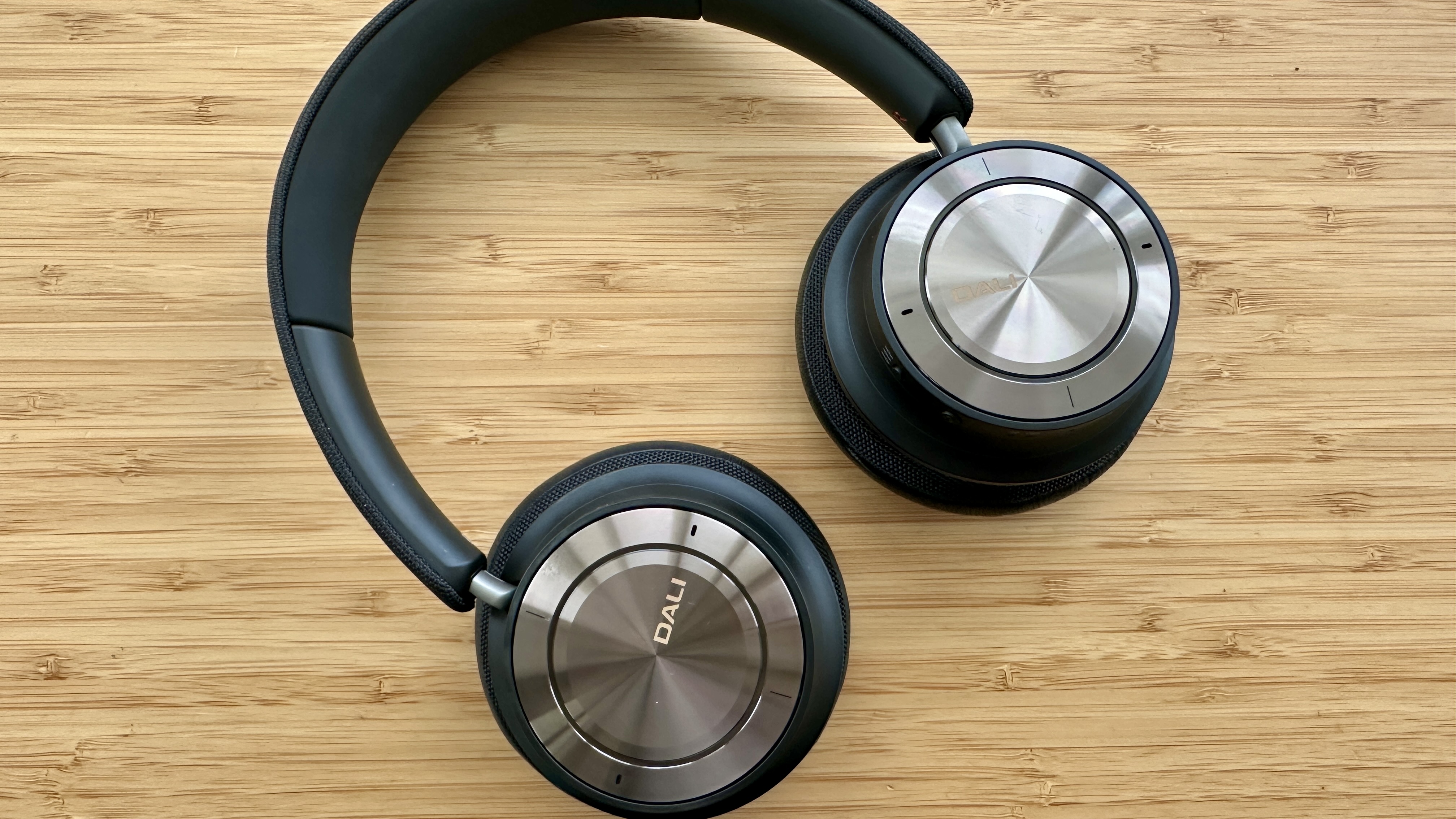


Specifications
Reasons to buy
Reasons to avoid
✅ You like your devices to be of a high standard: They look and feel premium, which is to be expected for their price, of course.
✅ You want clear, rich sound: We were incredibly impressed with the performance of these over-ears during our testing.
❌ You want a vegan option: Leather is used on the exterior of these headphones, which is a shame if you're don't want to buy animal products.
❌ You like to customize your listening: There are only two EQ settings for the Dali IO-8, the lack of an app will be a dealbreaker for some.
The Dali IO-8 over-ear headphones have been built to an exceptionally high standard, but they truly shine where audio quality is concerned. We genuinely couldn't pick fault with them during our testing, so it's easy to see why they're our top pick if sound is your top priority above all else.
Features-wise, these headphones are packed with most of the high-tech goodies you'd expect, including Bluetooth 5.2 with aptX Adaptive compatibility, 24bit/96kHz support and 50mm full-range drivers with 10Hz-43kHz frequency response. You'll also get a decent 30 hours of battery life with ANC on. The only thing missing is a control app, meaning you can't tweak sound profiles – then again, when they sound this good, why would you want to?
The Dali IO-8 deliver audio that we described as "detailed and expansive" in our review, stating that "no element of a recording is too fleeting to elude them." There's also wonderful richness and clarity across the whole range and a tonality we called "carefully neutral". ANC is here and it's good, but it's not best-in-class, look to Bose for that.
These headphones deliver in the looks department as well as sound, with a high level of build and finish quality. The design is also nice to look at, with perfectly circular ear cups. They're comfortable thanks to memory foam in the cups and an adjustable headband. We also like that, if you forget to charge them, you can listen to these headphones wired, too. A great option for ultimate convenience. The only drawback is leather has been used on the exterior of the cups, which means vegans should steer clear.
Of course, the Dali IO-8 are not cheap. But if high-quality sound and an equally impressive build are what you're after – and you're happy with no app and leather – they're well worth your money.
Read our full Dali IO-8 review
The best headphones for battery life
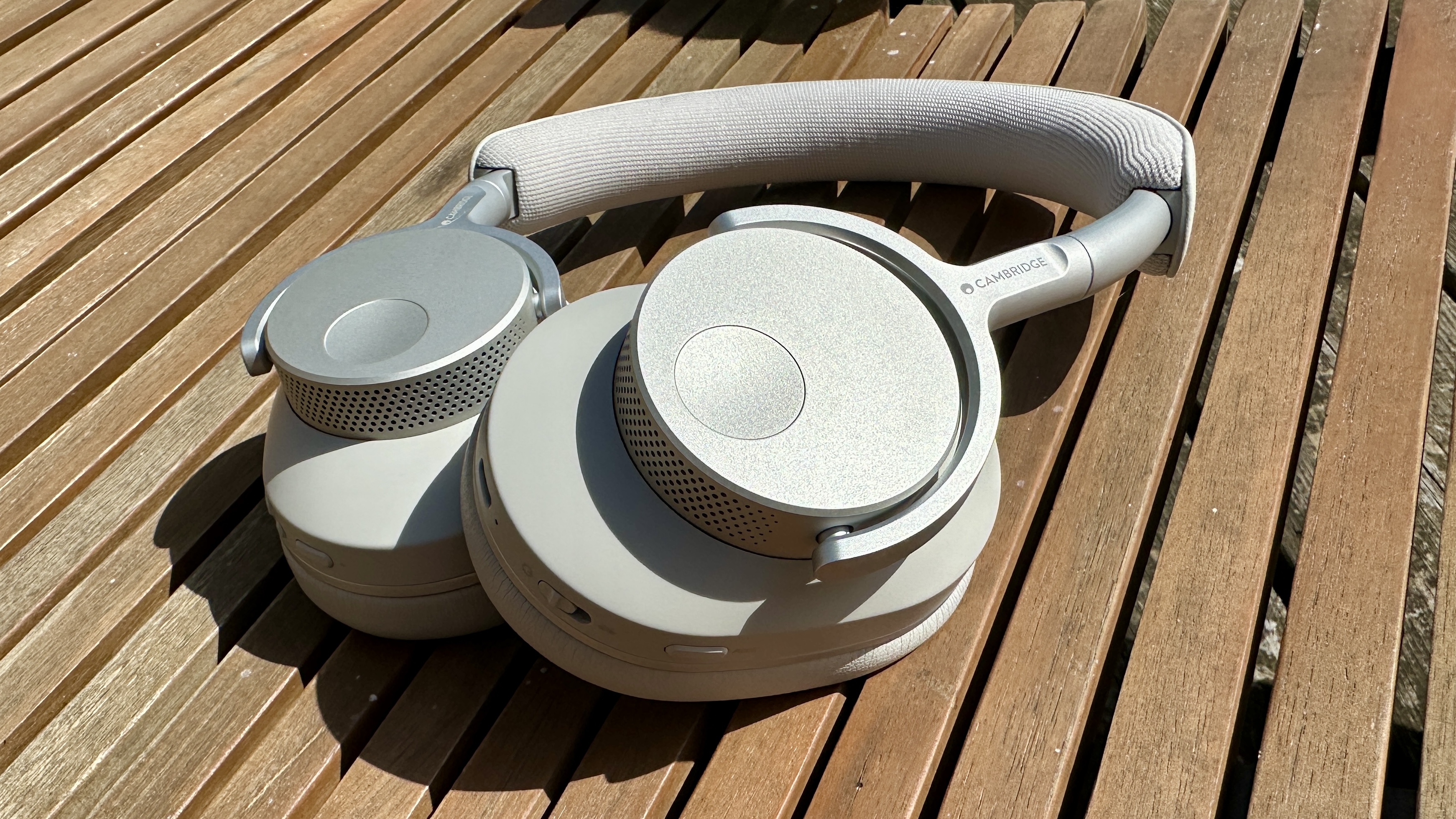

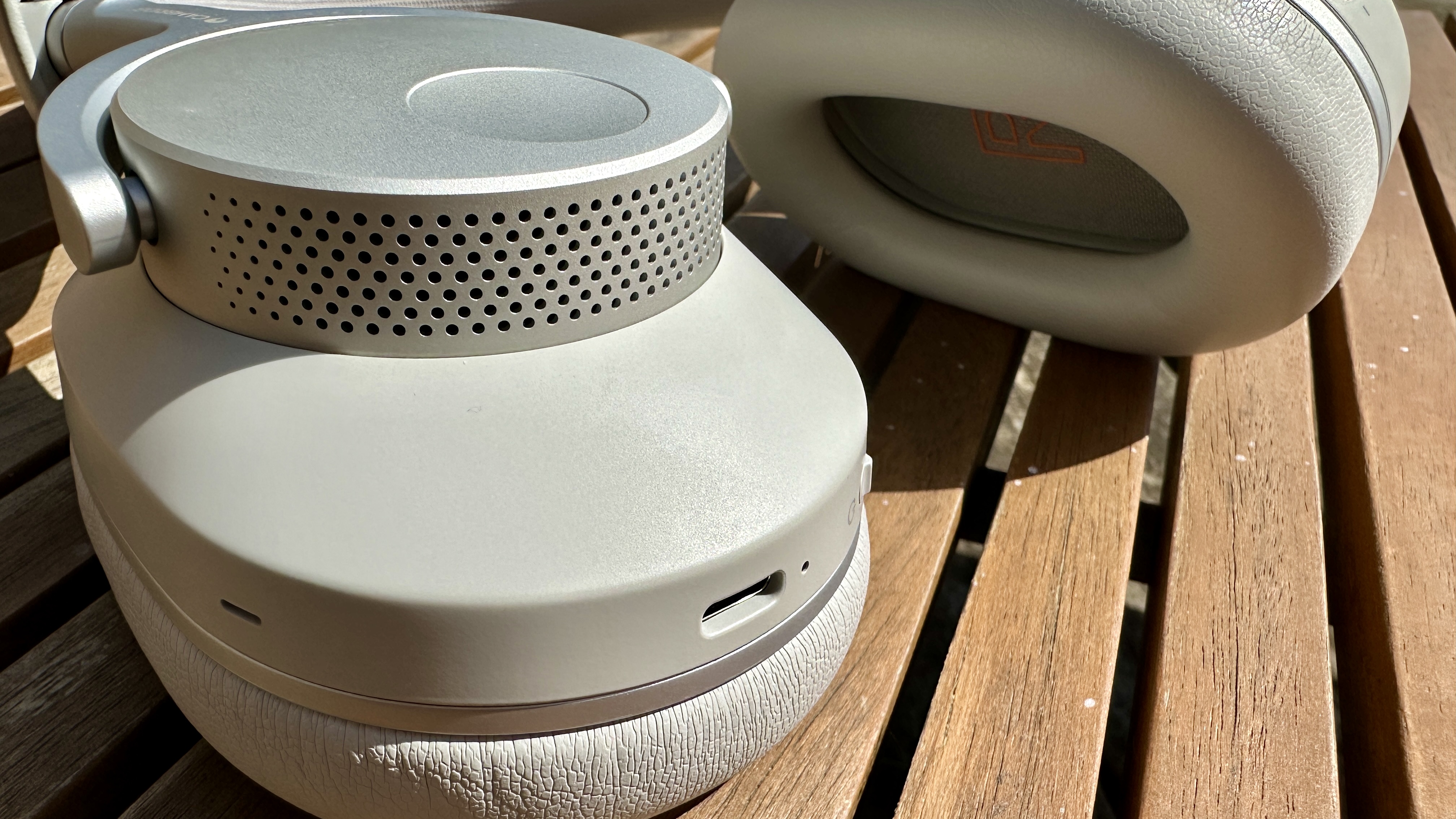
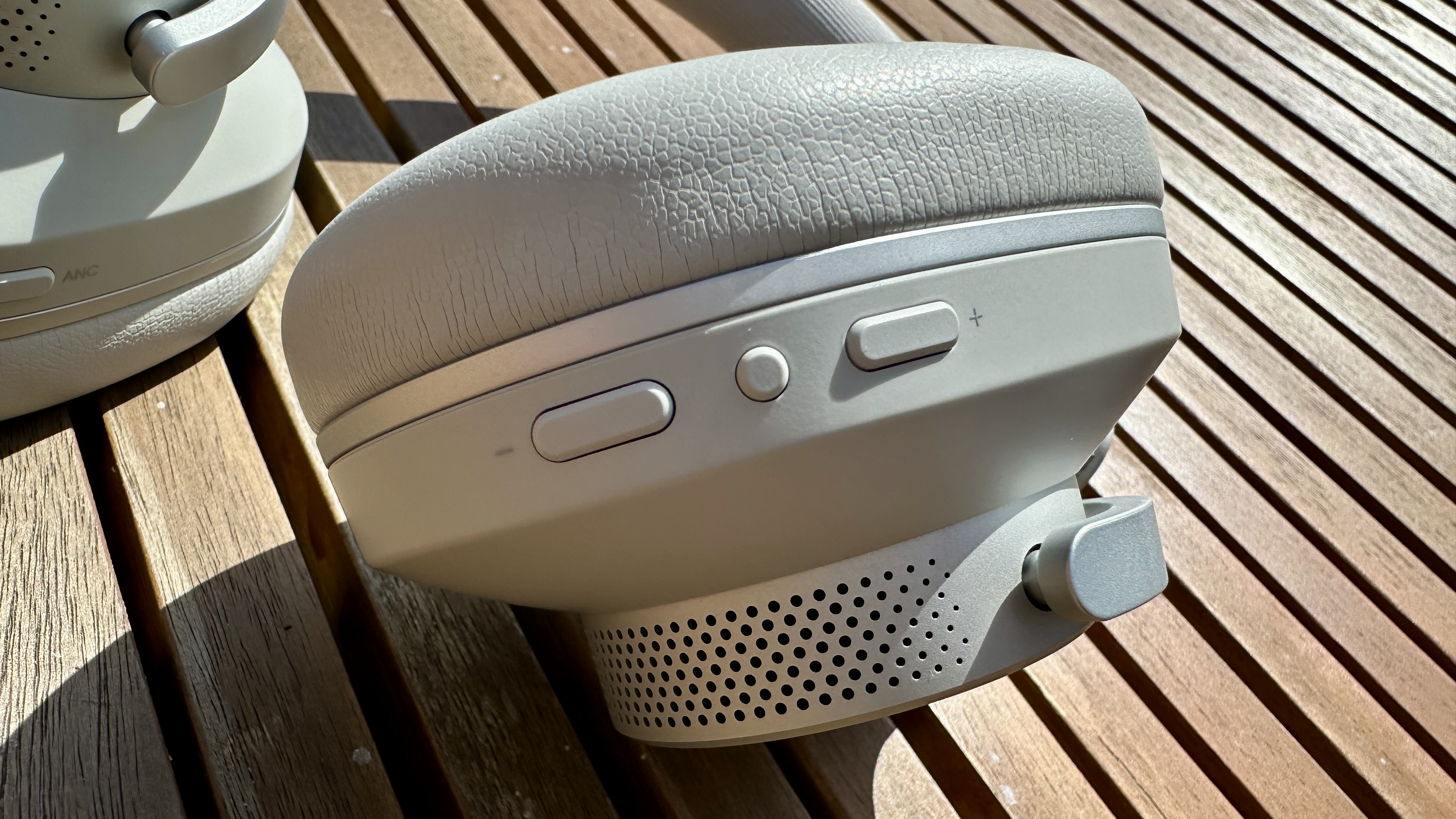
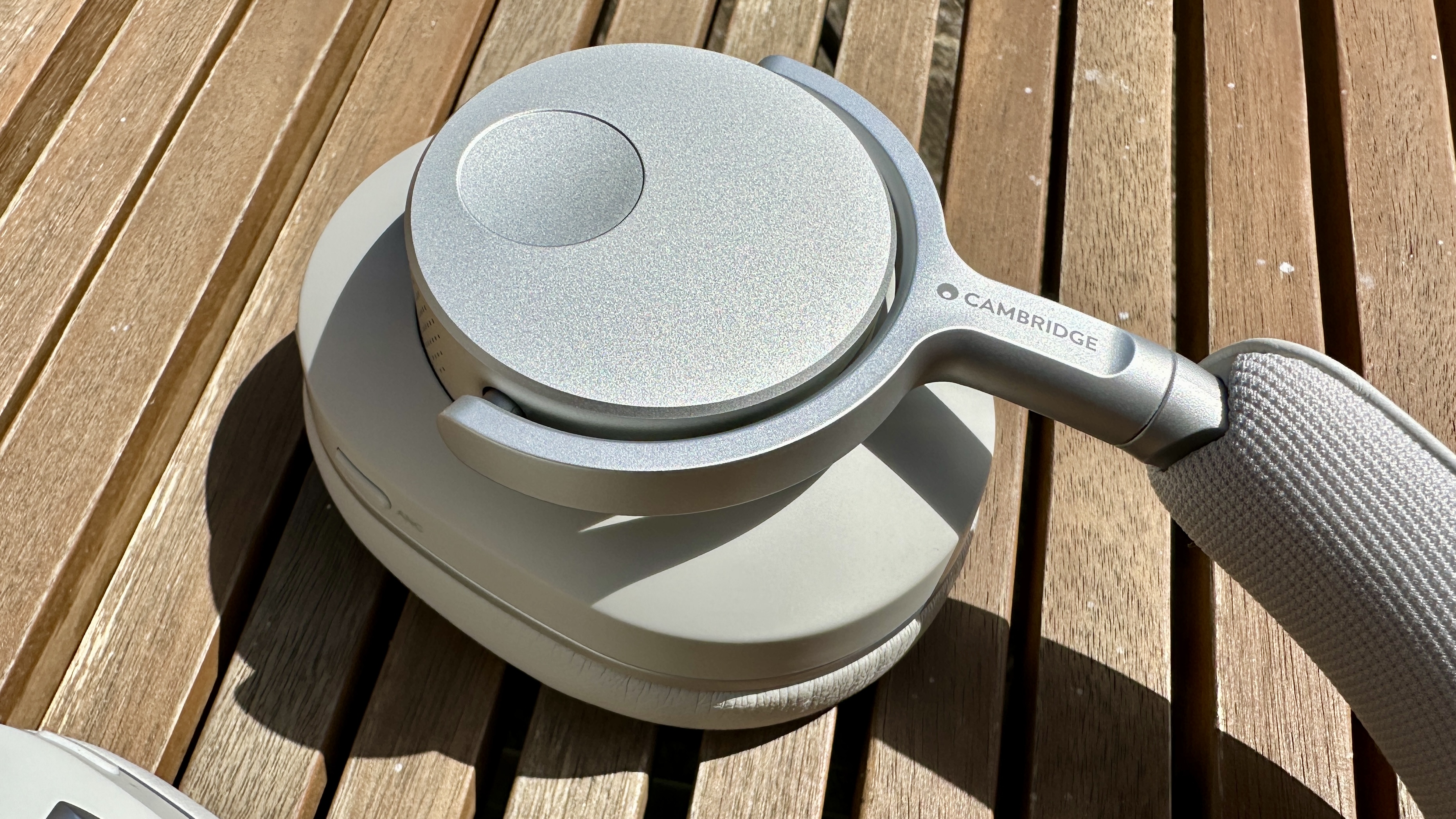
Specifications
Reasons to buy
Reasons to avoid
✅ You don't want to think about battery life: 60 hours of longevity per charge with ANC on and 100 hours without is truly exceptional.
✅ You like an app with lots of options: Everything you need is here to customize your experience, including EQ settings.
❌ You want best-in-class noise cancellation: The ANC here is very good, but the Bose QuietComfort Ultra Headphones do it better.
❌ You want light and portable: They're not big or heavy, but they don't fold up as much as they could and the accompanying case is a bit big.
Expect enjoyable and highly engaging sound from the Cambridge Audio Melomania P100 headphones, which we couldn’t fault for the price during our testing. In our review, we wrote: “There’s a stack of detail, a wide-open soundstaging, vaulting dynamic potency and an engaging, lively overall attitude that will keep you coming back for more.” You can also tweak the sound via the app, where you’ll find a seven-band equaliser with several presets.
But they're our top recommendation for battery, so let's get to that, because it's seriously impressive. You'll get 100 hours of battery life here, which is incredible. Admittedly, that’s without ANC, but with ANC on, you’ll get 60 hours, which is still as good as it gets – it's double what the Sony WH-1000XM6 or the B&W Px7 S3 offer.
There's plenty more to like. There’s multipoint connectivity onboard, Bluetooth 5.3, six mics to handle ANC, and an app packed with everything you’ll ever need. You’ll also find aptX Adaptive and aptX Lossless codec compatibility. One rather unexpected but hilarious feature is that actor Matt Berry is one of the options for your ‘audible feedback’, which, in our review, we referred to as a “stroke of genius” – seriously, name a better voice actor for this role!
A pair of premium headphones like these will sound their absolute best with 16-bit/44.1kHz FLAC file action from Qobuz or Tidal, but that doesn’t mean they won’t also do a great job at making any music you throw at them sound incredible. As we wrote in our review: “They don’t judge – give them what you’ve got, and they’ll do their best with it.”
The active noise cancellation isn’t the best, but it does a good job at nixing most noises – unless you’re looking for exceptional ANC, this will suit most people.
Things are just as positive when it comes to their design. In our review, we wrote that these headphones are “flawlessly built and finished” with a combination of memory foam and vegan leather on the earpads and a padded headband.
We also found them comfortable to wear. The only minor downside is that their travel case is a bit bigger than it needs to be. But really, we’re nit-picking.
The Cambridge Audio Melomania P100 are priced at $279 / £229 / AU$479, which means they’re a top choice if you can stretch your budget to the premium end of the spectrum – and if longevity is what's most important to you, you absolutely should.
We awarded them five out of five stars in our review, which is a testament to how great these wonderfully-specced headphones sound and the wealth of features on offer.
Since the original P100 launched, Cambridge Audio has released the P100 SE. So why aren’t we recommending the newer pair instead? Well, the update is minimal and, in all honesty, they're basically the same headphones. It includes a cushier headband, a new blue finish and Cambridge’s DynamEQ software for boosted bass and treble. While the SE is excellent, it’s also $20 more and the original P100 delivers the same great performance for less. That’s why it remains our top pick here.
Read our full Cambridge Audio Melomania P100 review
The best affordable Sony buy
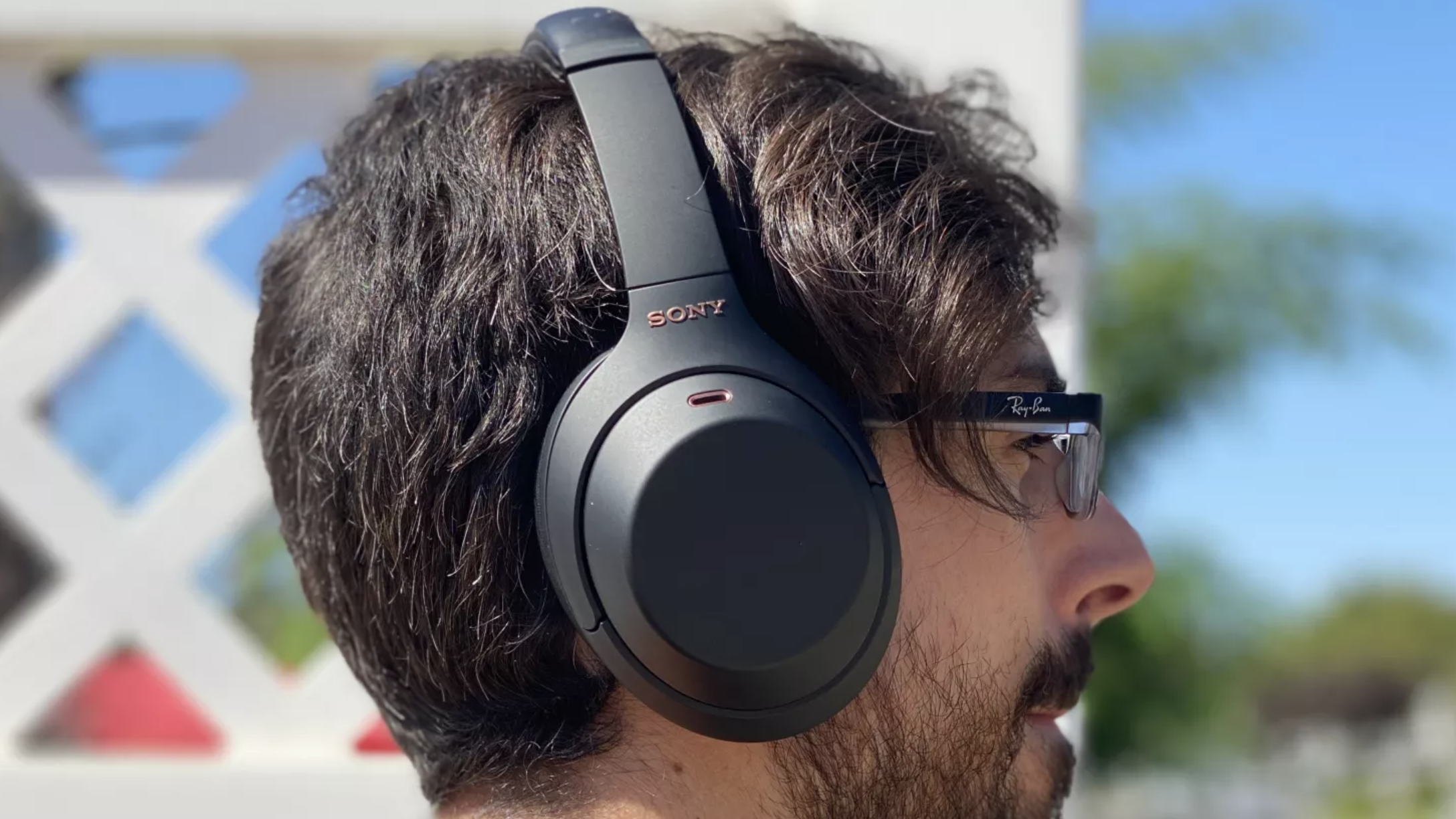
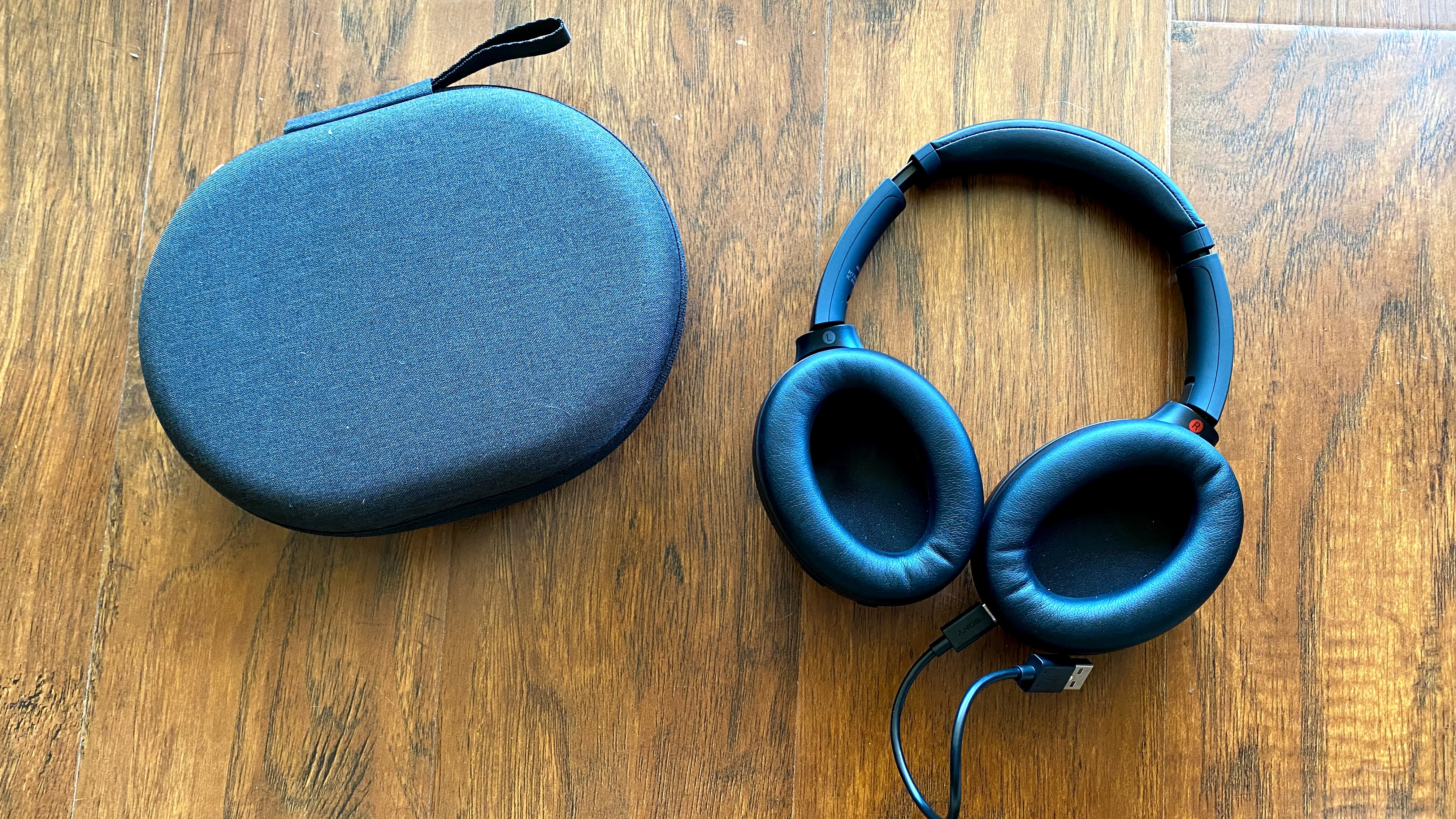
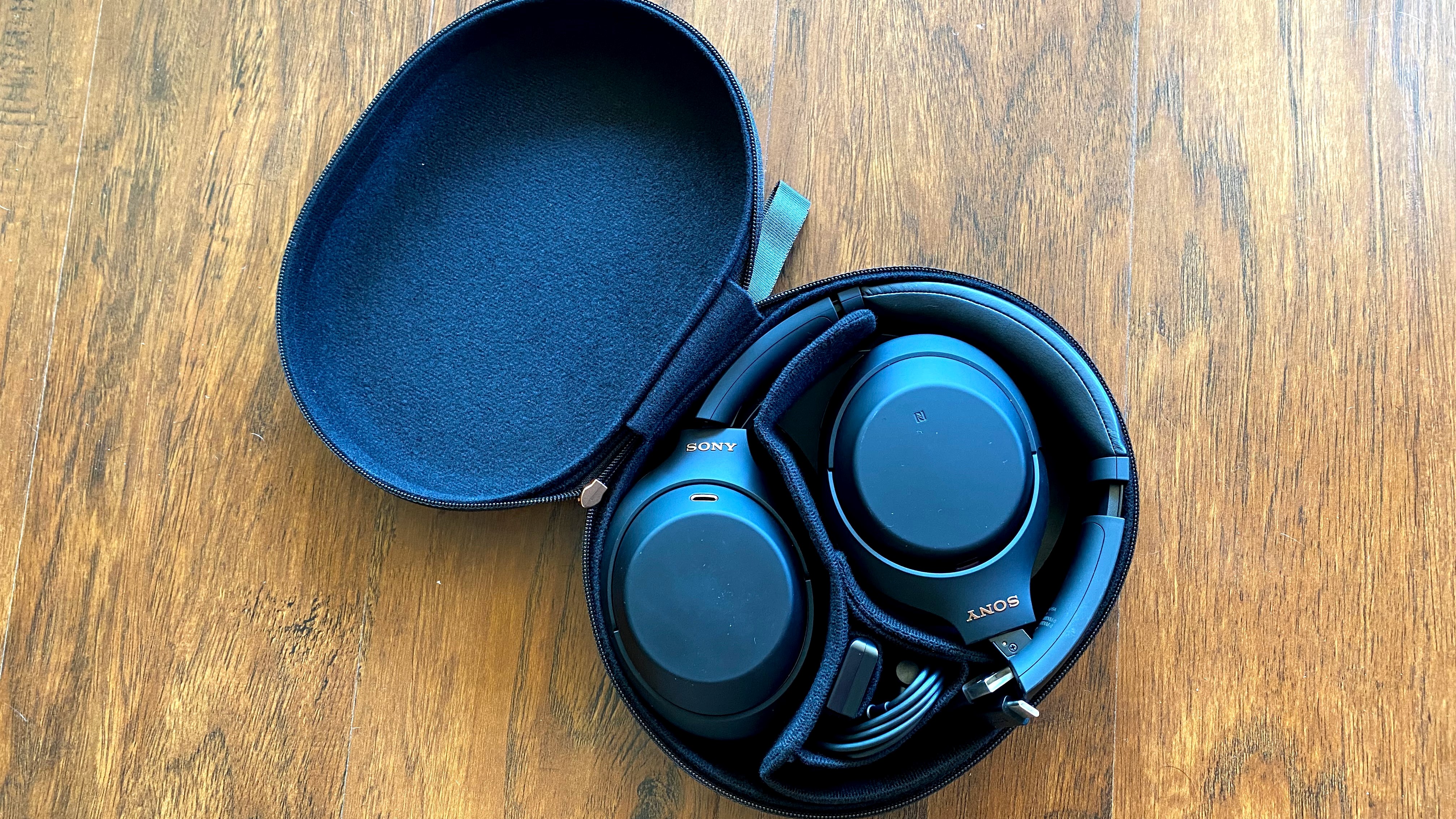
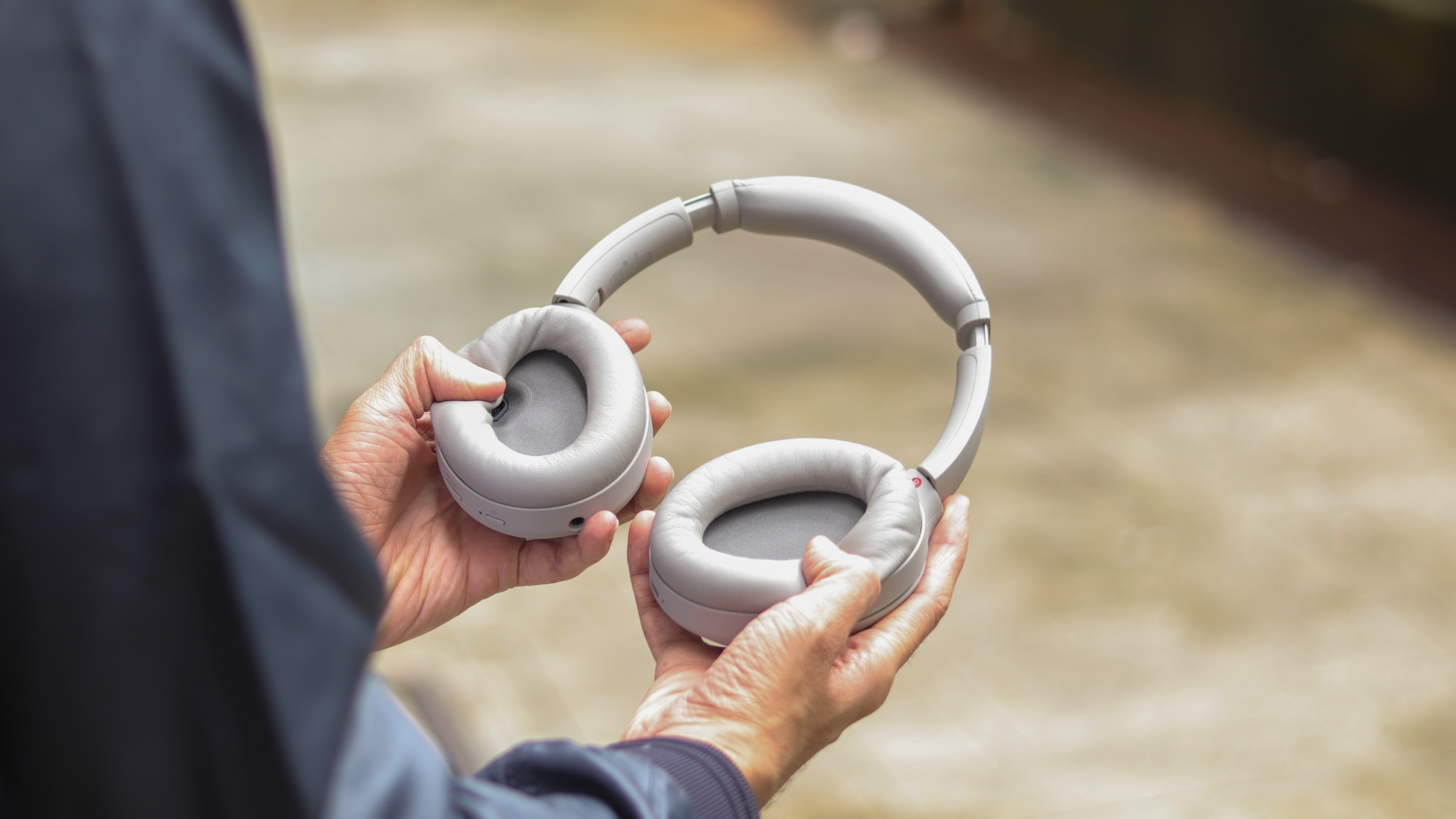
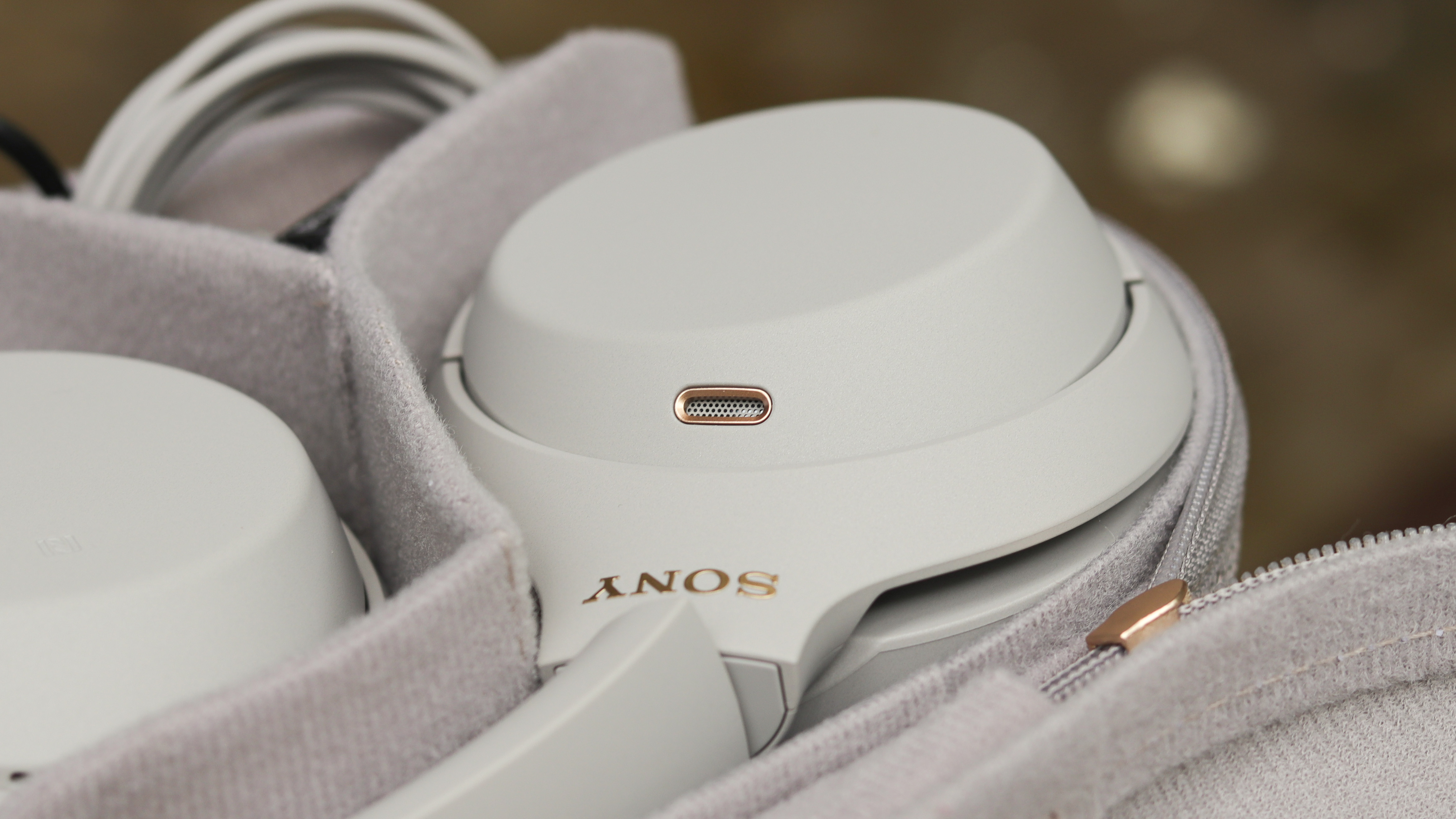
Specifications
Reasons to buy
Reasons to avoid
✅ You want versatile headphones that sound good: The Sony WH-1000XM4 deliver high-quality sound in a lightweight folding design that's good for travel.
✅ You want strong noise cancellation: With the volume up and the noise cancelling on, the WH-1000XM4 can block out a lot.
❌ You plan on bringing them to the gym or beach: A looser fit and lack of water-resistance should make you think twice before putting them inside your gym bag.
❌ You take tons of conference calls: While these are great for travel, their call quality isn't that strong.
The Sony WH-1000XM4 headphones sat at the top of this guide – and were our top pick for most people – for a very long time. They’ve now been outdone by the Sony WH-1000XM6s, which are an upgrade in almost every way. But we’re still recommending the XM4s here as our best choice if you want Sony quality at a lower price.
We think the XM4s will still suit a lot of readers. Especially since they've had a permanent price drop and they’re often discounted during sales events. They make a lot of sense if you can find them for less than other premium headphones, while still delivering excellent all-round performance.
These over-ear headphones sound weighty yet well-balanced, with a warm and inviting tone. They're generous with the bass, but not overly so. The active noise cancellation is very strong too, and though it's been notably bettered by the Sony XM6, again, it's great for the price.
They're bursting with features too, including Sony's DSEE Extreme upscaling for lower-quality music from sources such as Spotify, multipoint pairing for easy switching between devices, auto play/pause when you take them off, Sony's 360 Reality Audio spatial audio, and LDAC wireless support for CD-quality wire-free sound from compatible phones. It's a shame there's no aptX, but it's not a deal-breaker.
They're very comfortable thanks to a lightweight design, and wearing them for long periods is no strain at all. A 3.5mm jack means you can connect them to a wired source easily, though there's no USB-C audio input (the USB-C port is for charging only).
The 30-hour battery life is pretty typical, though is smashed by the 60 hours of the Cambridge Audio Melomania P100 at #6 on the list, which also clearly beat these on sound quality when comparing the two. Though as mentioned above, we still think the Sony are great value at their reduced price.
That’s the story for these headphones now. You can find models that do any individual thing better, but few that do so much, so well, at this lower price. Just make sure you’re paying $200/£200 or under.
Read our full Sony WH-1000XM4 review
The best budget wired headphones
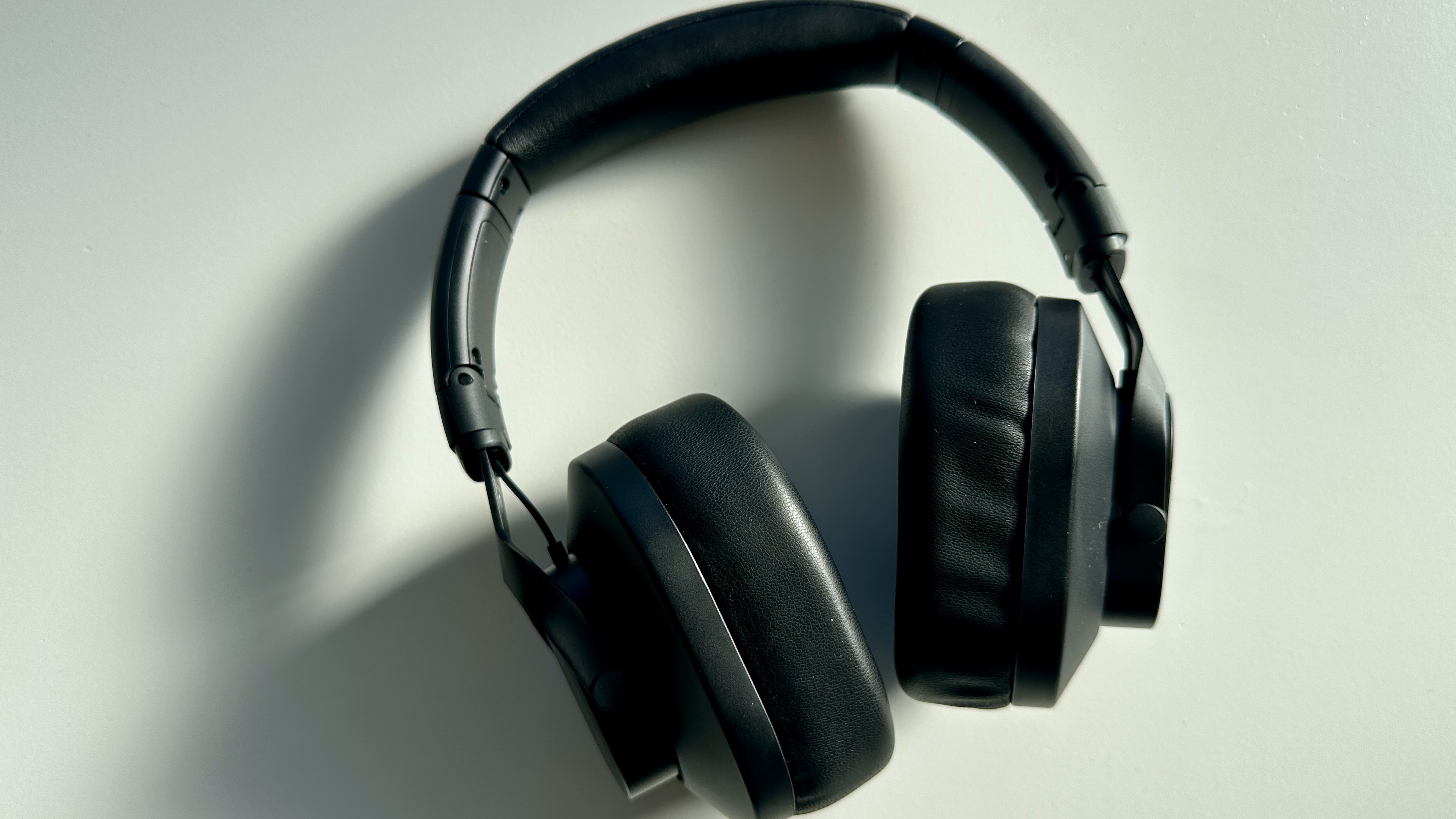
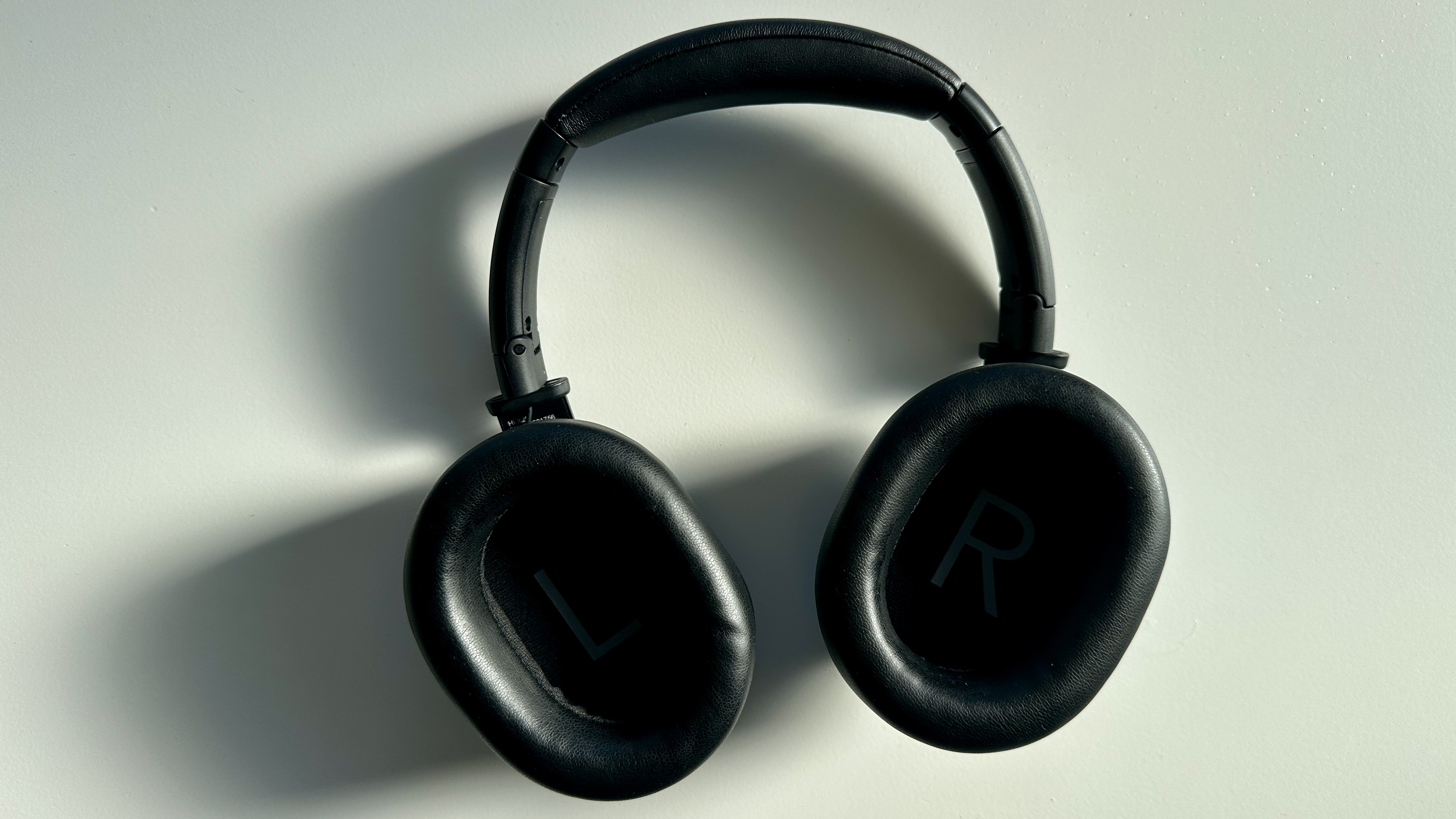
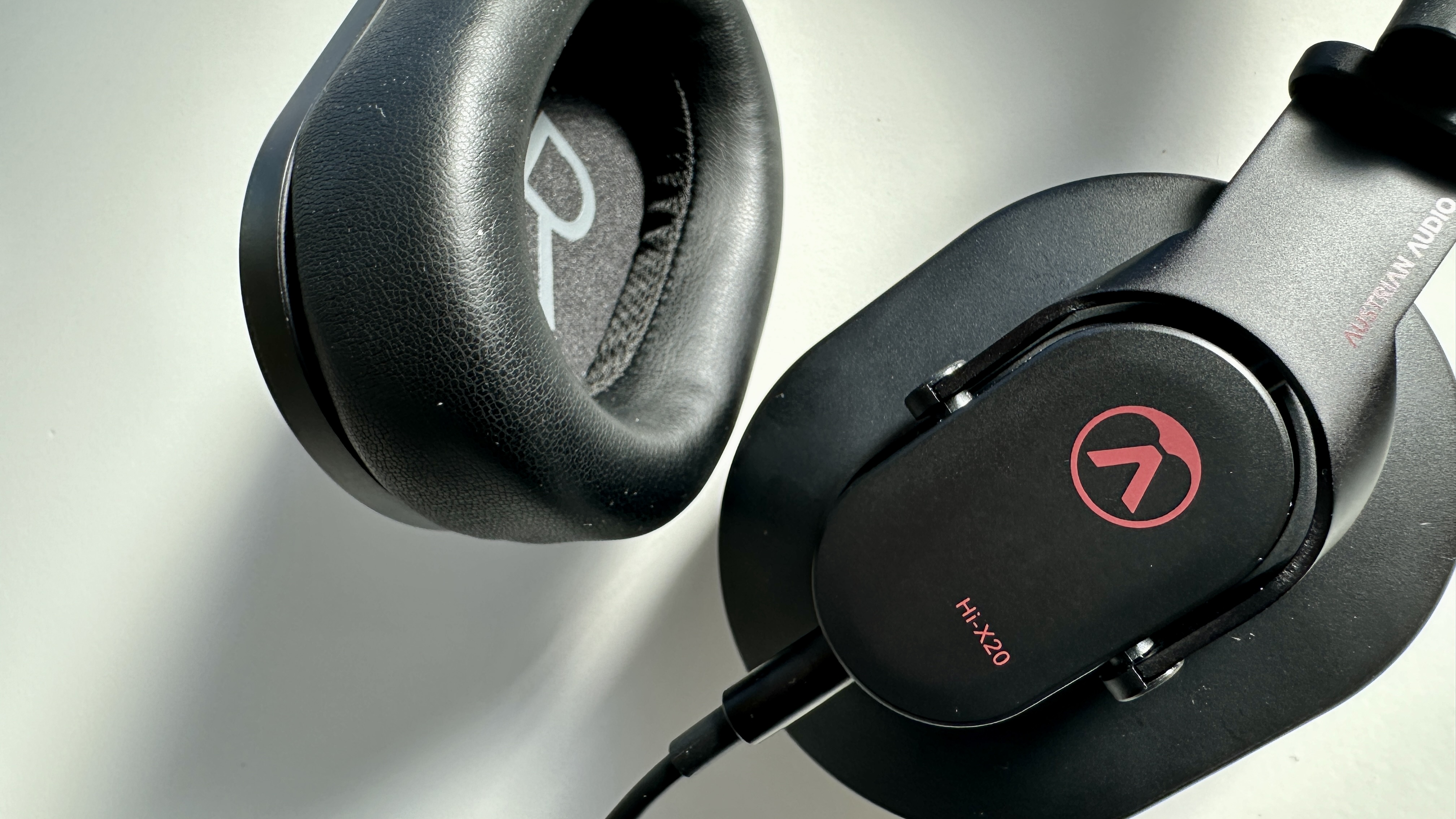
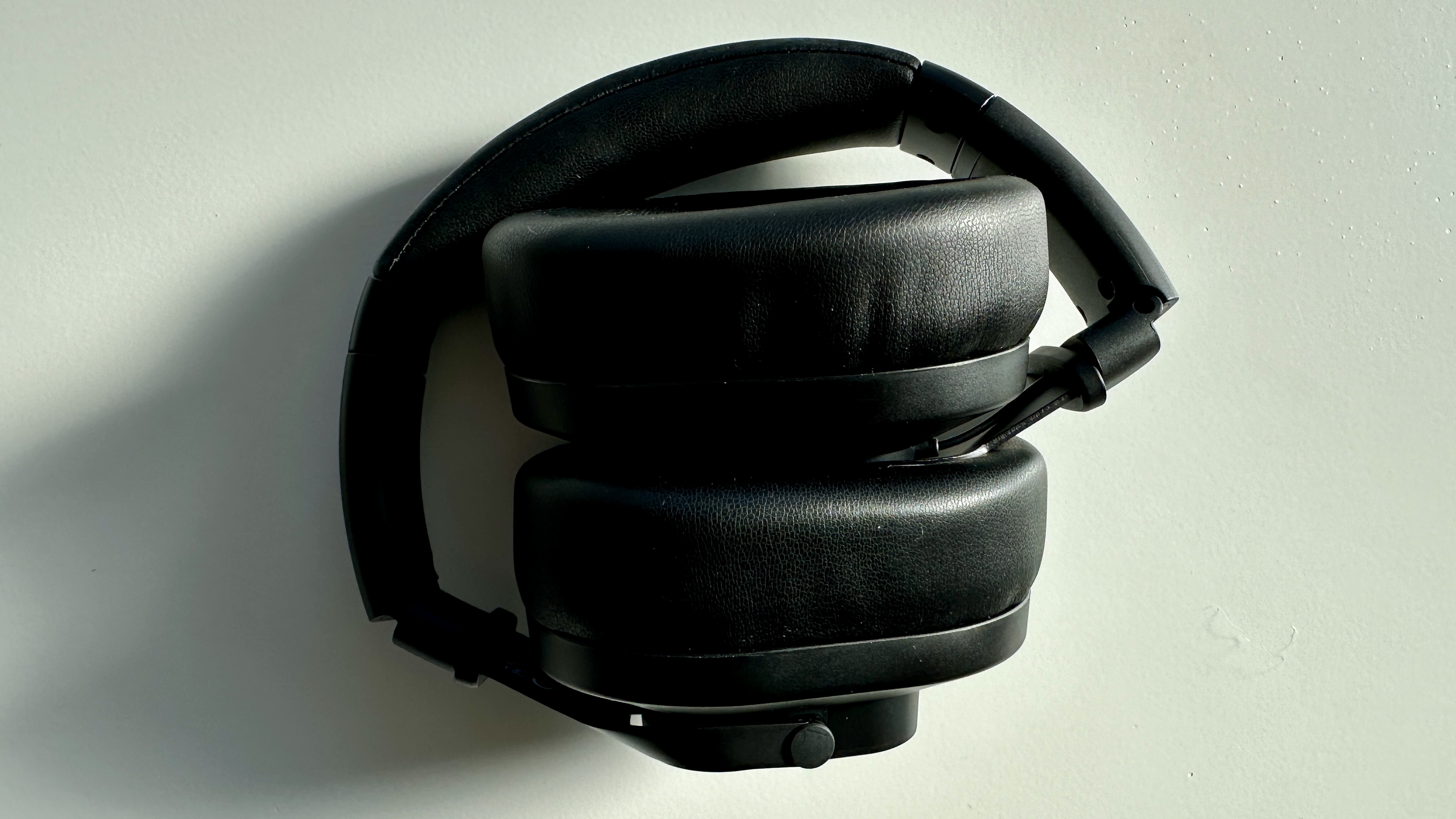
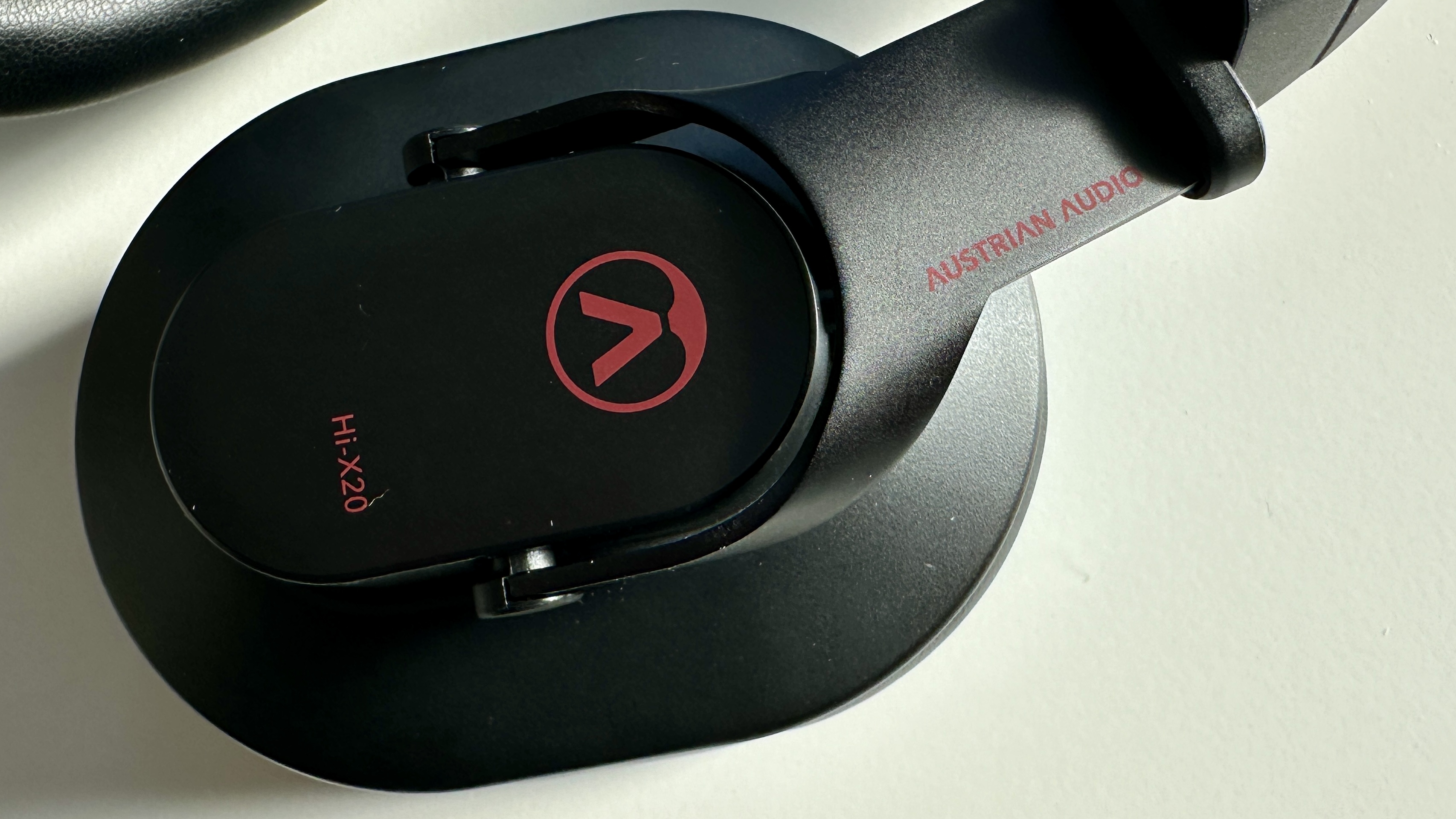
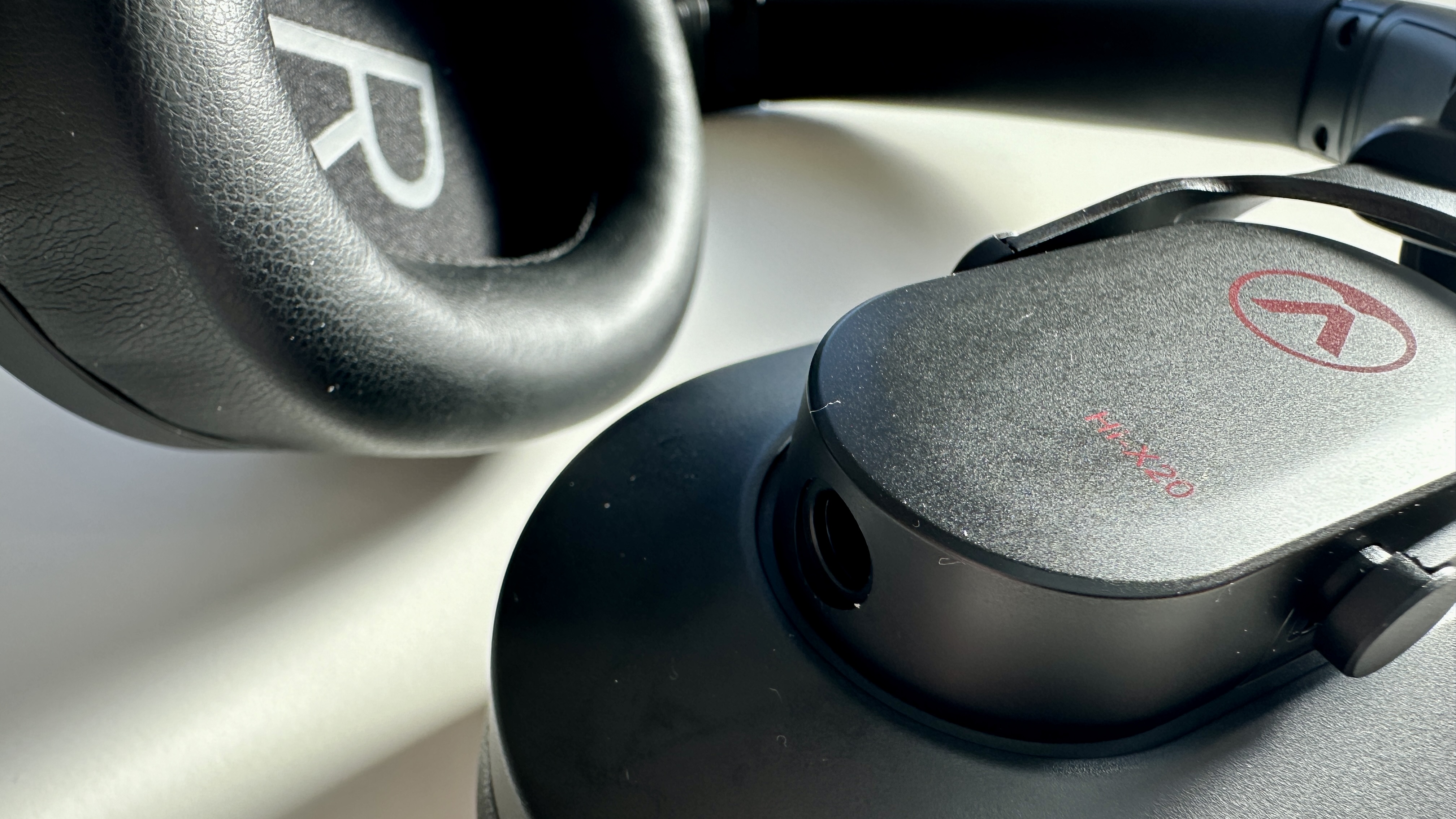
Specifications
Reasons to buy
Reasons to avoid
✅ You want clear, precise sound: The Hi-X20 are impressively detailed and insightful. But more than that, they’re genuinely fun to listen to.
✅ You wear headphones for long stretches: Lightweight and well-padded, the Hi-X20 stay comfy even after hours of use.
❌ You’re all about that heavy bass: These headphones favor speed and detail over thumping low end.
❌ You hate long cables: That 3m cable might be perfect for studio setups, but at home it could just get in the way.
Austrian Audio has an impressive track record for creating affordable headphones, and the Austrian Audio Hi-X20 are no exception. This pair of wired over-ear headphones deliver truly impressive sound for what is a very modest price. They’re detailed and dynamic with a level of sonic clarity that easily rivals more expensive options, especially if you’re not chasing booming bass.
The Austrian Audio Hi-X20 headphones have the brand’s trusted 44mm high-excursion drivers on board. They come with a three-meter long cable that connects to your audio source. Click one end into a 2.5mm socket on the left ear cup and the other has a 3.5mm termination, as well as a 6.3mm adapter. It’s long, which is good news for some – but might be a bit much for others. While there’s no active noise cancelling here or wireless support, that’s because this is a set of wired headphones focused purely on performance.
In our testing, we said that the Hi-X20 over-ears sound rapid and revealing, with great rhythmic control and cohesion. Highs are crisp without harshness, mids are expressive and bass is clean and textured. Though some listeners may want a little more low-end punch. We described them as “a confident and very accomplished listen” in our full review.
Design is understated and functional. They’re mostly matte black with minimal branding. The build feels solid thanks to a metal headband and replaceable ear pads. Comfort is excellent, even during long sessions, helped by soft memory foam and a reasonable 255g weight.
At just £120 / $150, these headphones are at the affordable end of the spectrum and feel like excellent value. If you’re after a wired pair of over-ears with a revealing sound and don’t mind the long cable, you’re getting incredible bang for your buck here.
Read our full Austrian Audio Hi-X20 review
The best mid-range wired headphones
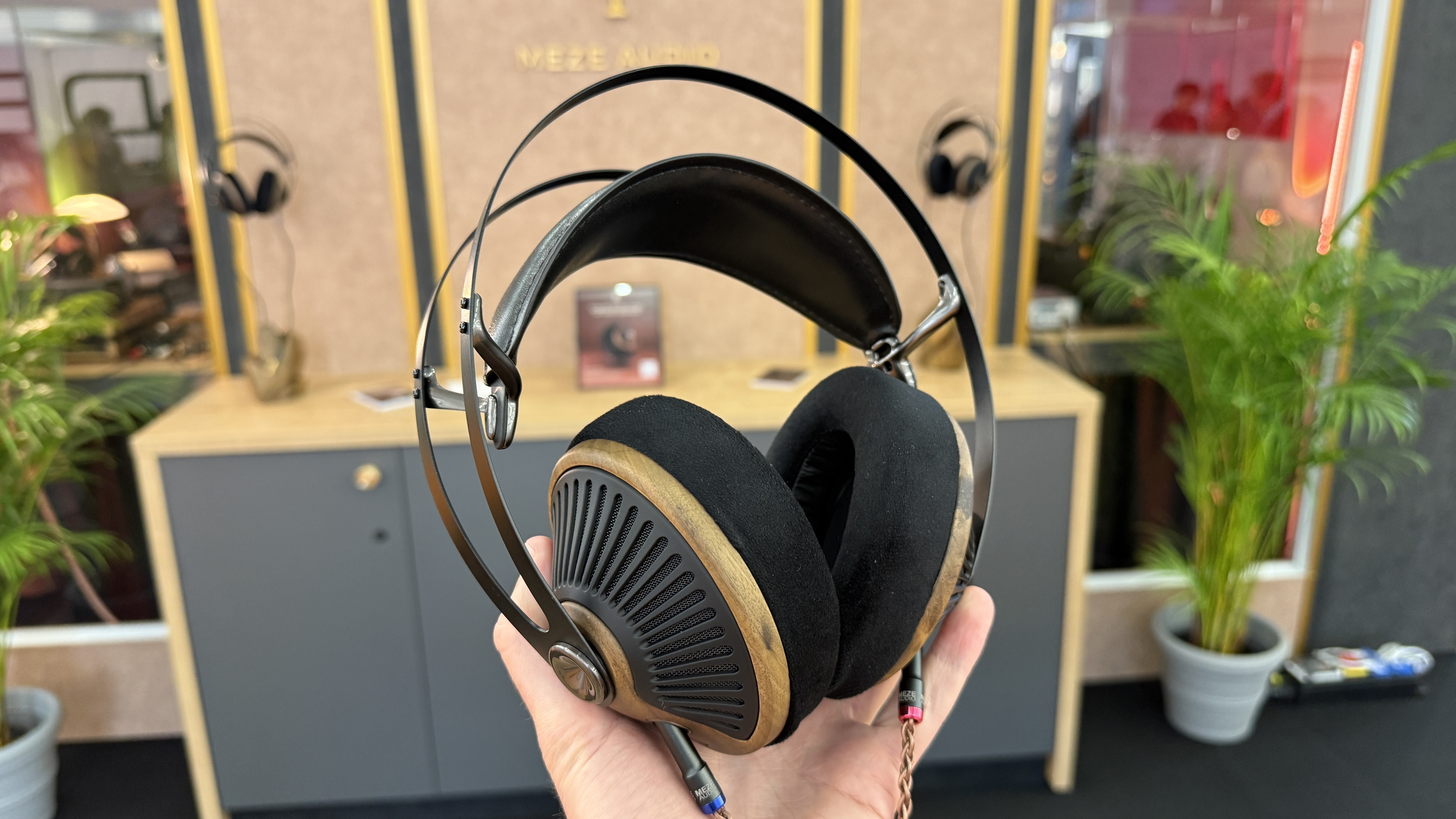
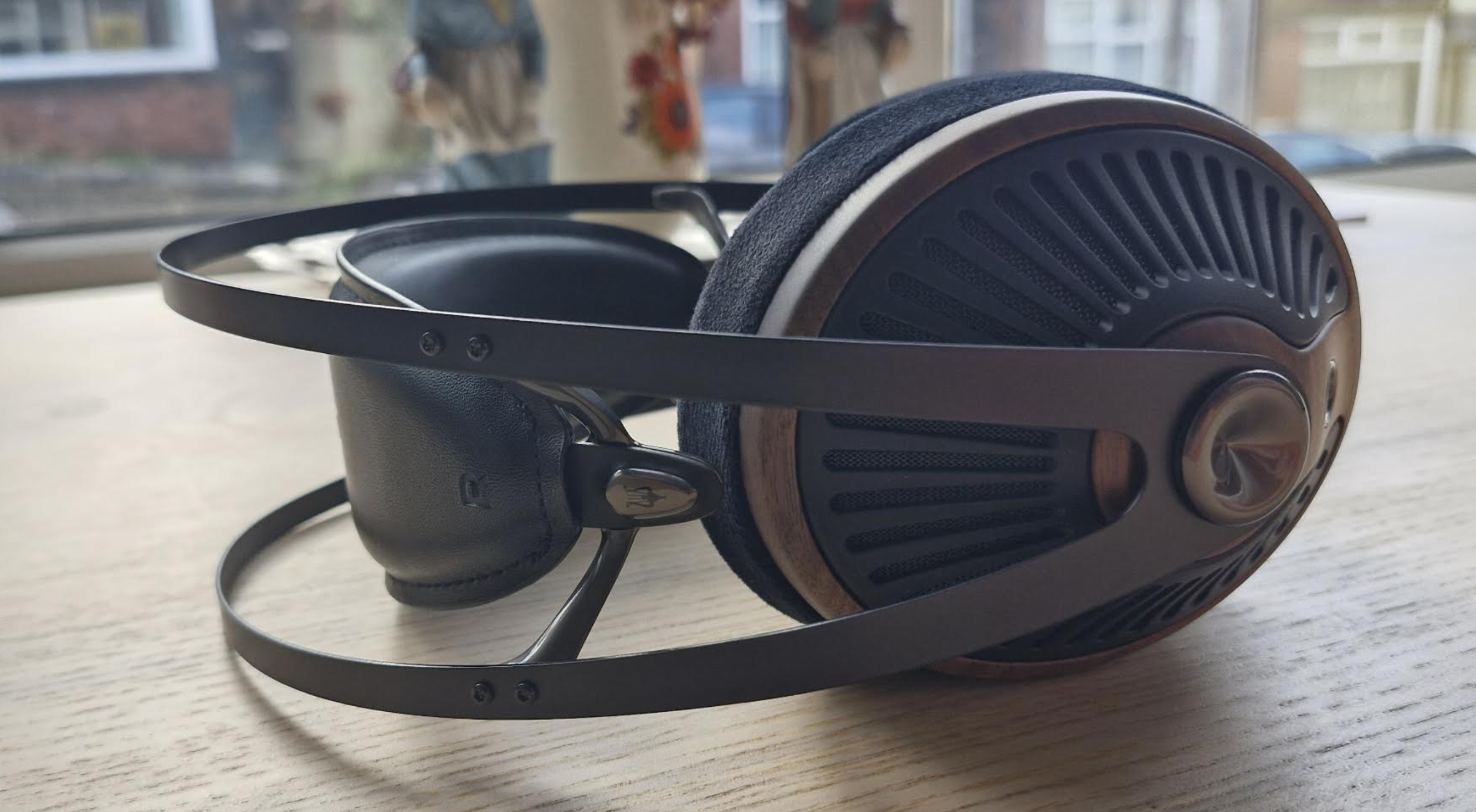



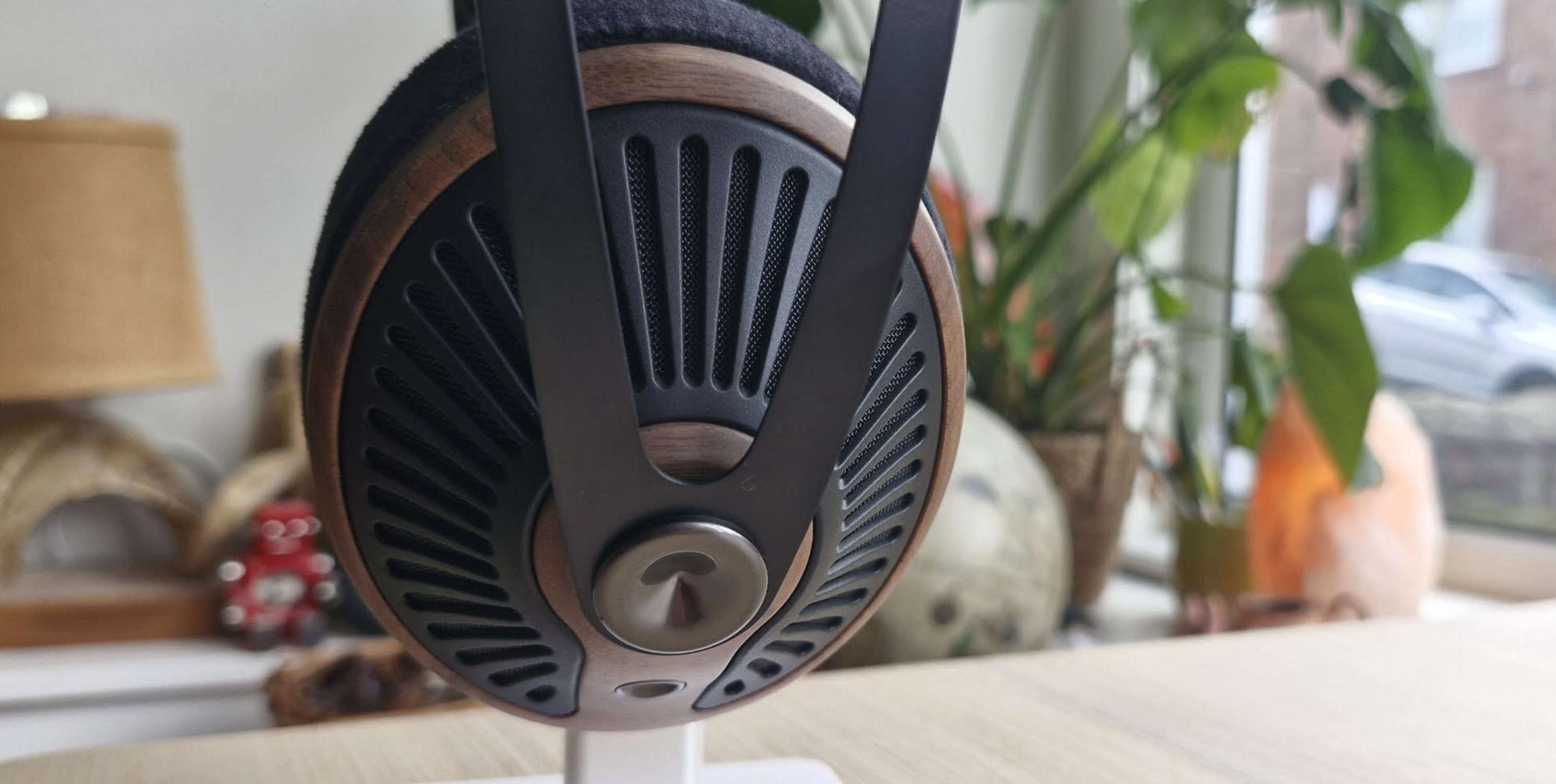
Specifications
Reasons to buy
Reasons to avoid
✅ Comfort is your priority: Few headphones at this price feel this good, with plush velour pads and a gentle self-adjusting fit.
✅ You love acoustic or jazz: They come alive with dynamic, instrument-led music.
❌ You want open-backs for a huge, airy soundstage: They don't deliver that expansive, “out of your head” width that some rivals offer.
❌ You want to hear more punch from the low end: There's a lot of warmth from the bass here, but the low end can be a little reminiscent of closed-backs, for better or worse.
The Meze Audio 105 Silva are open-back, wired over-ear headphones that we think are built for at-home, eyes-closed listening. They’re a superb mid-range pick if you want supreme comfort and a refined, cosy tuning that flatters acoustic, jazz and live recordings the most. If you crave a huge, immersive soundstage or thumping, clubby bass, you’ll want to look elsewhere.
Meze keeps the specs here focused on both impeccable sound and feel. There are 50mm dynamic drivers under the hood and a wide 5Hz–30kHz range. These over-ears are fully passive and use dual detachable cables. Meze even includes a USB-C DAC adapter so you can run them straight from a phone or laptop if you don’t have a dedicated amp.
Sound-wise, the 105 Silvas deliver on treble finesse and texture. Highs are airy, mids are clean and expressive and bass packs more energy than most open-backs. It’s softly “pillowy” rather than punchy, which suits double-bass and drums but can feel a bit too much on compressed electro-pop. The soundstage is organized and stable, just not the widest we’ve tested. Feed these headphones dynamic, well-recorded material and they’ll truly sing.
These headphones are designed well, which means they look and feel fantastic. With walnut cups, velour pads and Meze’s self-adjusting headband that make them easy to recommend for all-day wear. For listeners who value detail and long-listening comfort, the 105 Silvas earn their spot as our best mid-range wired headphones.
Read our full Meze Audio 105 Silva review
The best audiophile wired headphones
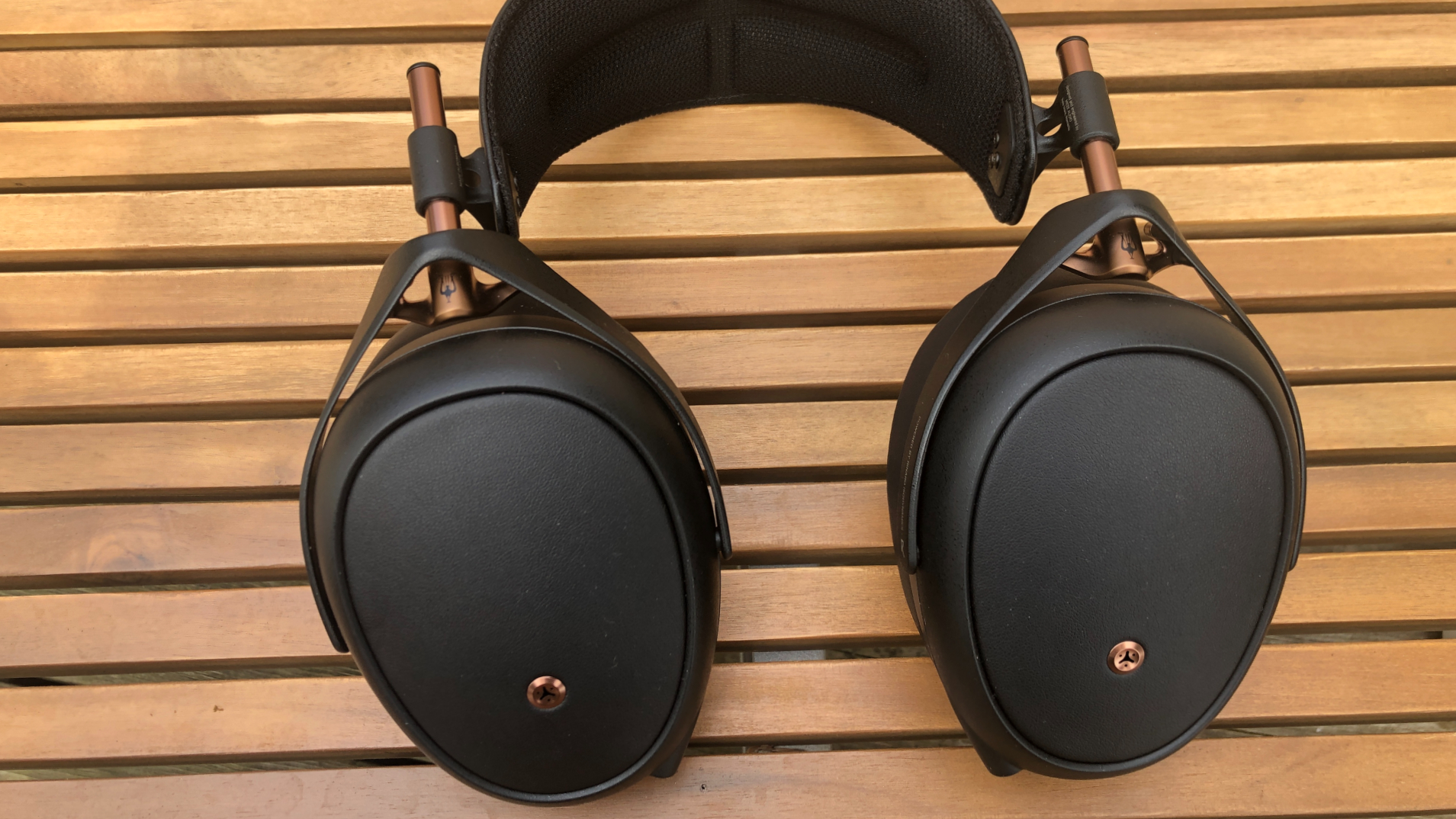

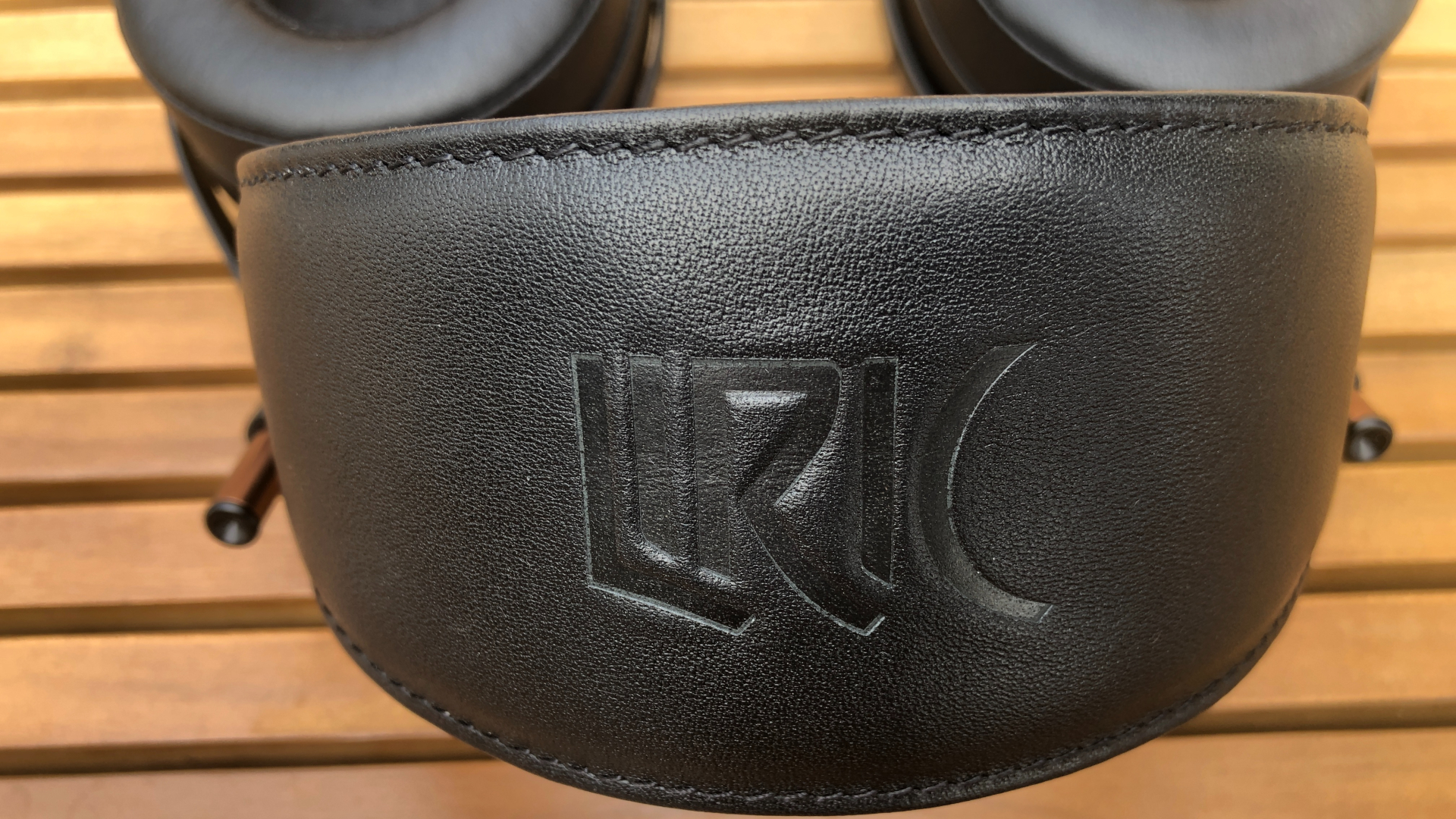
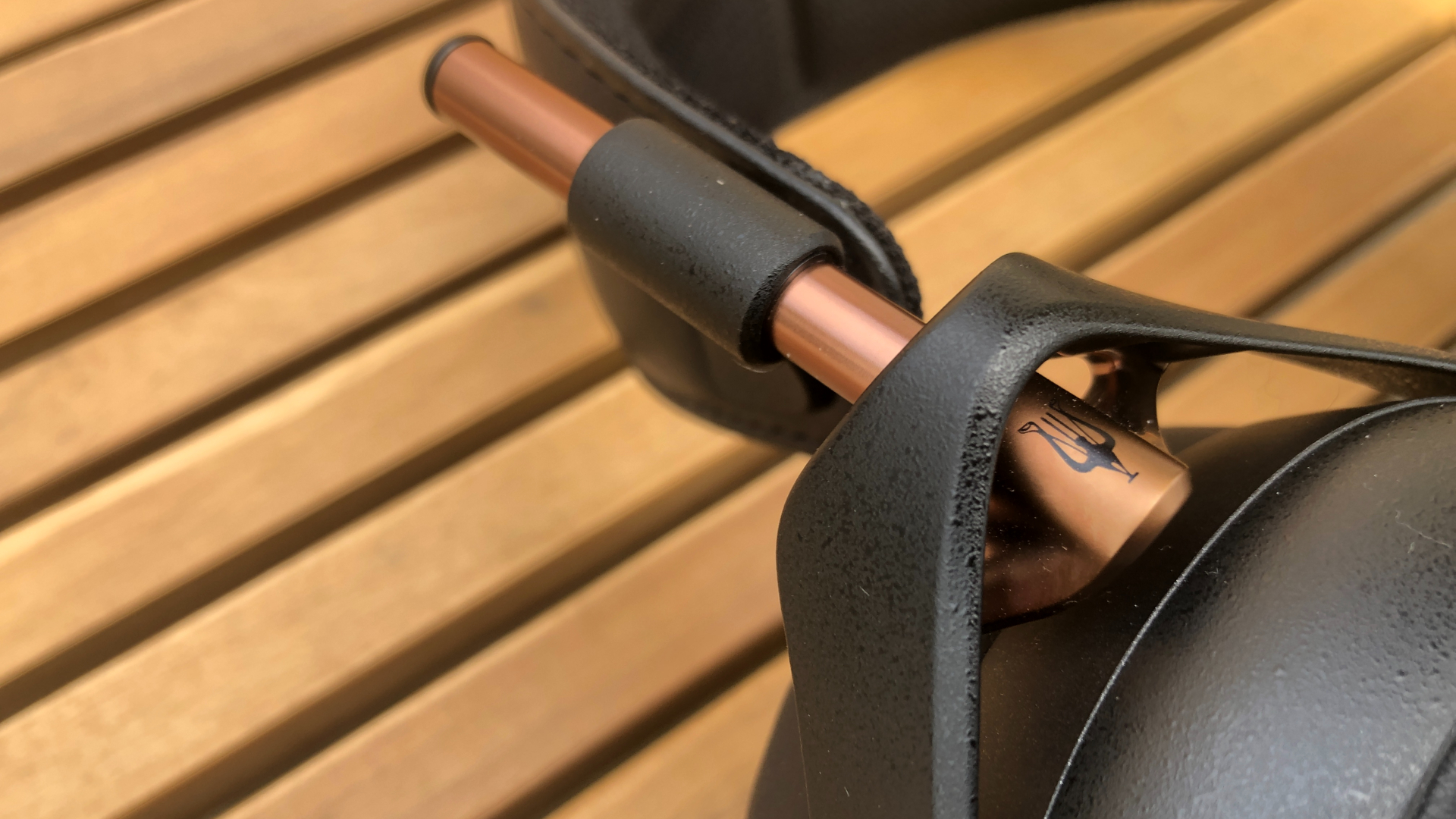
Specifications
Reasons to buy
Reasons to avoid
✅ You want your music laid bare: If you love dissecting tracks or want to hear production choices you’ve never noticed, these headphones deliver an exceptional level of precision.
✅ You’ve invested in a high-quality source: They can only do so much. Plug them into a phone or average laptop and you’ll get a polite version of what they’re capable of.
❌ You’re already stretching your budget: Yes, the headphones themselves are incredibly expensive but if you also need the high-quality gear to go with them, it's a huge upfront cost.
❌ You like a spacious fit around the ears: Despite the large external dimensions, the Liric’s earpads run surprisingly narrow on the inside.
The Meze Audio Liric are luxurious closed-back, wired headphones built for serious listening. They’re easily our top pick for audiophiles shopping for a pair of wired headphones that are up to their high-end standards. But, crucially, you need the high-end gear to go with them – at nearly £1,800 / $2,000, they’re unapologetically premium and their precise, detailed sound rewards high-quality sources and only the most attentive ears.
They feature custom planar magnetic drivers co-developed with Rinaro Isodynamics and come with two cables (1.5m and 3m) plus a 6.3mm adapter. You won’t find wireless connectivity, ANC or smart features here. The Liric are strictly about pure, high-fidelity audio and high-quality materials, like leather and aluminium.
As you’d expect, they deliver remarkable sonic clarity. From PJ Harvey to Nils Frahm, during our testing the Liric headphones revealed layers, textures and the smallest of details. The midrange is expressive, highs are crisp and the overall tonality stays consistent across the range. The only slight shortfall is the bass: while it is controlled, some may find it lacks a little in weight and punch, but that will be a matter of taste.
Design-wise, they’re gorgeously built and more refined than some other Meze models. But they don’t fold up, and the included case is pretty big. Comfort is generally excellent, though we should point out that listeners with larger ears may find the earpads a little snug.
The Liric won’t flatter bad sources, but if you’ve got a high-end player or DAC and want sonic insight, elegance and craftsmanship, these are a standout listen for only the most discernible listeners.
Read our full Meze Audio Liric review
The best looking budget headphones
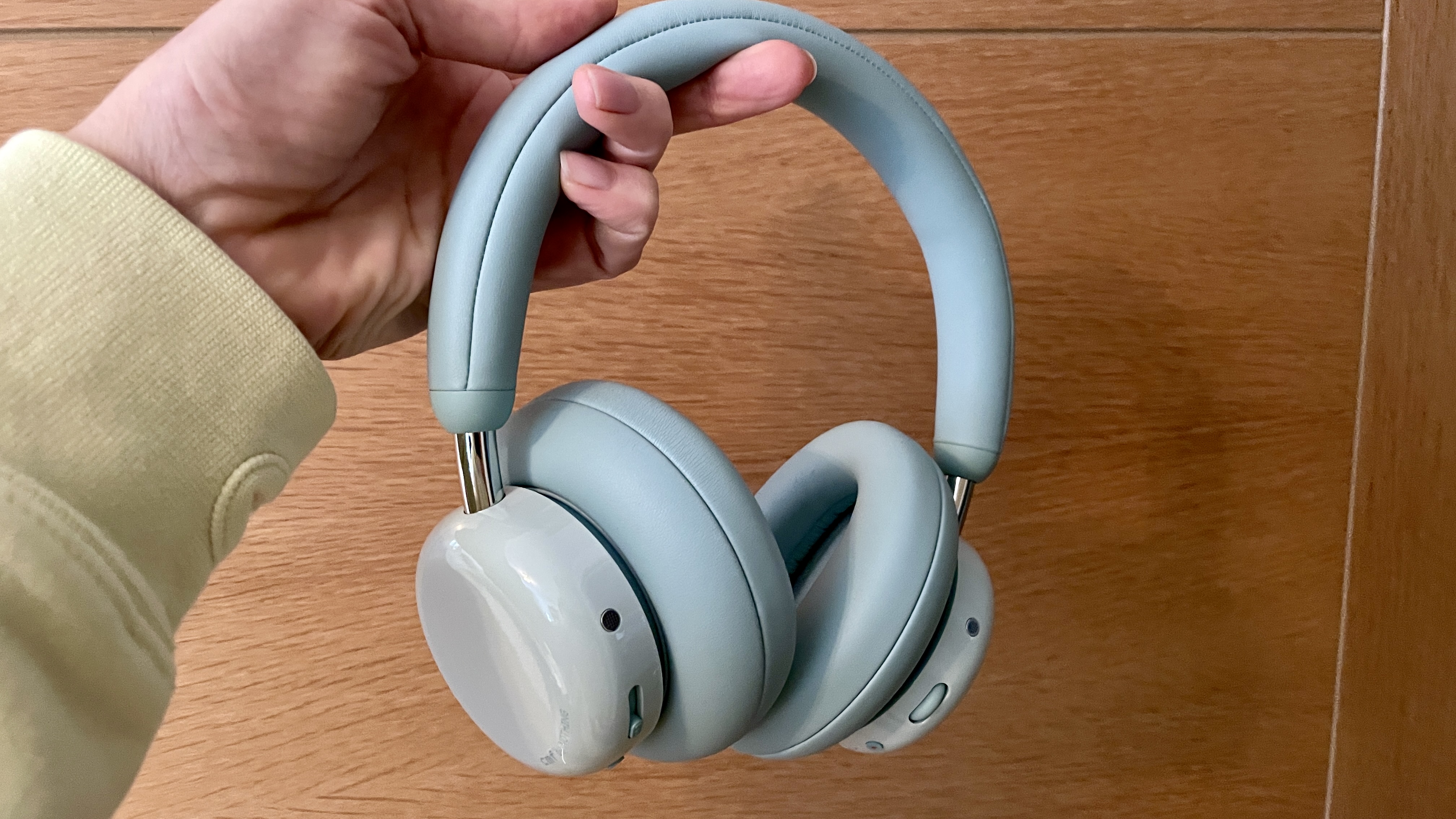
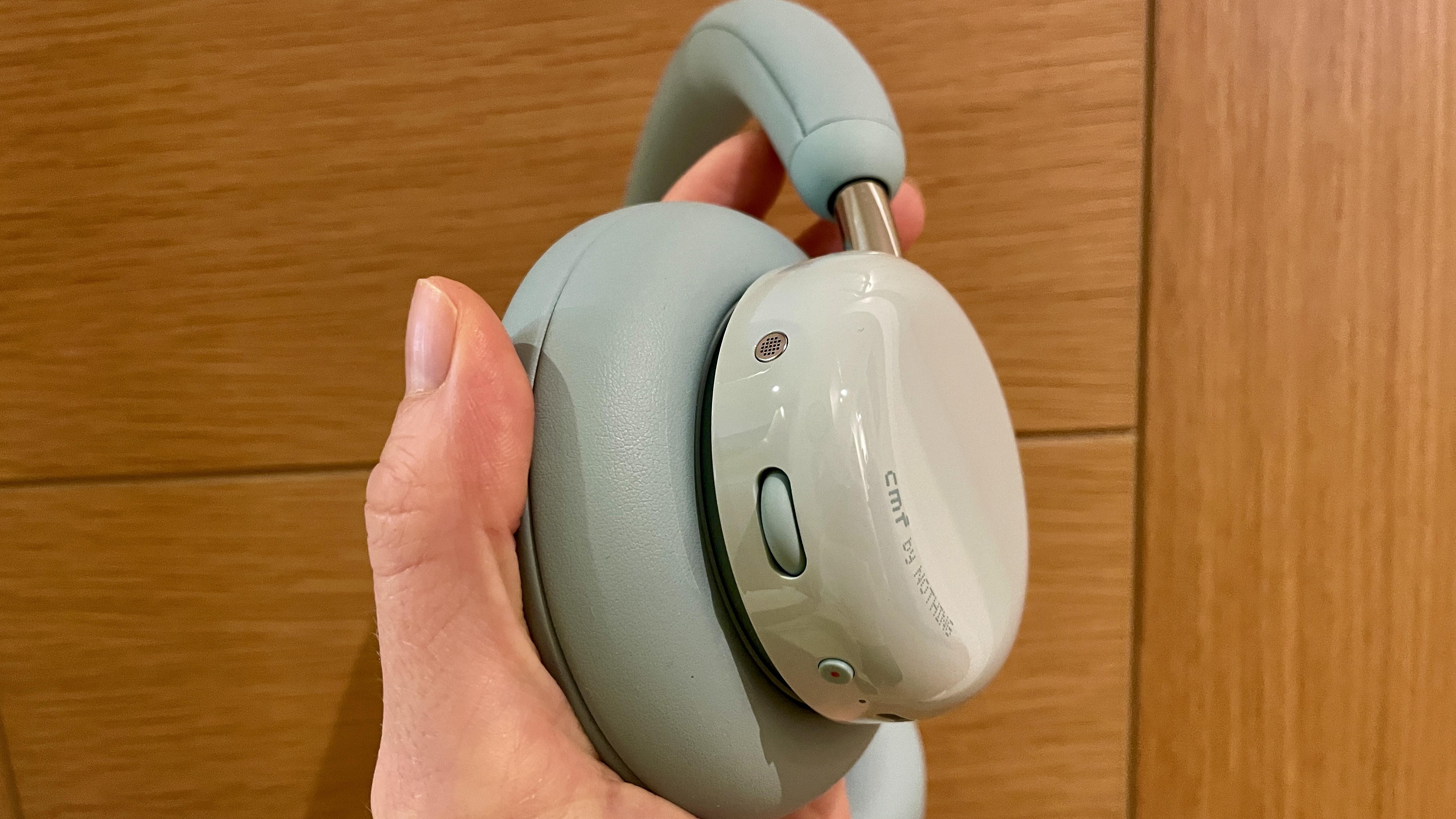




Specifications
Reasons to buy
Reasons to avoid
✅ You want budget but without the compromise: They're incredibly affordable and already discounted, but the great news is they perform way about the level.
✅ You like on-ear extras: You can tweak the bass, play with the settings and turn up the volume all from the sliders on the cups.
❌ You want bubble of silence ANC: Look, the noise nixing here is fine for the money, but it's certainly not best-in-class.
❌ You want auto-off when you remove them: It's not a dealbreaker, but you do notice it's missing if you're used to it in other models.
The CMF Headphone Pro really are the sort of rare budget pair of headphones that look incredible (if you like a quirky aesthetic), sound far better than you'd expect and still manage to undercut almost every rival on price. At just $99 / £79 / AU$179 (and already seeing discounts), they're nothing short of a steal in our books.
Design is the first thing that grabs you. CMF by Nothing has a reputation for playful, distinctive hardware, and these over-ears absolutely lean into that. The pistachio green shade is the standout for us but you can also for for orange or more understated gray finishes. Comfort is also impressive for the price with plush synthetic leather, memory foam and extension arms that give them a more premium feel.
Sound quality is where the Headphone Pro really over deliver. In our testing we found the audio surprisingly zealous and bass hungry, but also more detailed and energetic than almost anything else in this bracket. They won't beat flagship models on neutrality or ANC, but you still get hi-res wired listening, LDAC support when sticking with wireless sound and two types of spatial audio.
Features are another surprise win. Battery life is very good: CMF claims up to 50 hours with ANC on and with playback at 50% volume, and we managed 49.5 hours in real-world testing. It's genuinely class-leading at this level. The app includes one of the most detailed hearing tests we've seen, too. On-ear controls are excellent as well, a fun (and maybe slightly gimmicky) "Energy Slider" lets you dial up the bass and there's also a multi-function volume wheel and even an action button.
There are drawbacks, but none of them are dealbreakers for the price. ANC is decent rather than best-in-class, there's no hard carry case or USB-C charger and we'd love an auto-off feature when you remove them. But for this price, you're getting a great design, strong performance and loads of power. If you want affordable cans that don't look or act budget, they're a brilliant buy.
Read our full CMF Headphone Pro
More headphones we tested
Apple AirPods Max: Refined and detailed sounds, superb active noise cancellation, amazing spatial audio for movies, and a load of useful smart features when used with Apple devices. So what's the catch? Well, the high price, for one – these cost a lot, and you can get similar audio performance for less. We also noted in our AirPods Max review that they're heavy and have quite a clamping fit. Plus you need to be all-in on Apple for them to be worthwhile value. They're very good, but in terms of total value, we prefer what's in the list above.
Bose QuietComfort Headphones: Love the idea of the Bose QuietComfort Ultra headphones above but can't quite justify the price? Read our Bose QuietComfort Headphones review. These older over-ears aren't as good as the Ultras, but they're still comfortable, ANC is excellent and sound is very good indeed. If you can afford the Ultras, have at it. Otherwise, they're a solid alternative – and still have the Bose stamp of approval.
Bowers & Wilkins Px8: Absolutely magnificent headphones with a sleek design and phenomenal sound quality… but we think the Dali iO8 in the list do it a little better. But the Px8 look cooler, so aesthete's with audiophile ears should definitely read our full Bowers & Wilkins Px8 review.
Earfun Tune Pro: You'll get a long battery life and a solid set of features packed into these over-ears for a very good price. But there's not much else to rave about here. As you'll see from our Earfun Tune Pro review, audio quality is lacking and they were uncomfortable to wear for long periods of time, arguably the two most important factors when you're comparing over-ear headphones.
Earfun Wave Life: Let's start with the negatives, these over-ears have underwhelming ANC and look boring. But, read our Earfun Wave Life review and you'll see we still enjoyed testing them because battery life is very impressive and they're supremely comfortable to wear.
Focal Bathys MG: Now, these are a very, very good pair of headphones. You've got a premium build and premium sound here. But there's no Auracast support or LC3 codec, which is a shame given the price. If that's not a dealbreaker, do read our full Focal Bathys MG review.
Happy Plugs Play Pro: These over-ear headphones are nice enough. They're lovely to wear with a strong battery life. But unfortunately ANC doesn't quite cut it. If that's not your priority, have at them and read our full Happy Plugs Play Pro review.
Meze Audio Poet: Read our Meze Audio Poet review and you'll see that we thoroughly enjoyed testing these open-back headphones from the word go. Expect true audiophile-grade listening, excellent separation and a thoughtful design. However, it's hard to recommend them for most people as they're eye-wateringly expensive. Only consider them if you need only the best, top tier sound.
Nothing Headphone (1): It's unfortunate that sound quality lets these headphones down, because otherwise they're technically impressive and have a very interesting and bold design. Take a look at our full Nothing Headphone (1) review to find out more. And fingers crossed for what Nothing does next with its over-ears, as the update might be great.
Panasonic RB-M600: Read our Panasonic RB-M600 review to find out why we enjoyed reviewing this pair of over-ears. They're affordable with a decent battery and light build. The problem? There are a few too many downsides to include them in this list, like a so-so ambient mode and a design that won't suit everyone.
Sony WH-1000MX5: We really like these headphones, as you can see in our five-star Sony WH-1000MX5 review – but they're beaten in key areas by other products that are keeping them out of this guide, essentially. The Cambridge Audio Melomania P100, for example, are more detailed and offer twice the battery life, while also being less expensive. It's a cut-throat world of headphones.
Meet the team
Our team of reviewers has collectively amassed years of audio tech experience and testing, rigorously putting all of the latest and greatest headphones through their paces.

Matt is TechRadar's Managing Editor for Entertainment. He oversees our movie and TV show coverage, as well as our reviews and news of the latest televisions, soundbars, headphones and speakers. Matt managed TV and audio content for T3.com, and before that he was the Editor of T3 magazine. He's also written for other tech titles, including Creative Bloq, PC Gamer, Digital Camera World, Edge, Official PlayStation Magazine, PC Plus, MacFormat and many more.

Becky is TechRadar's Audio Editor. She joined TechRadar in 2022 as Senior Staff Writer, focusing on all things audio and hi-fi. Becky spent three years at What Hi-Fi? where she tested and reviewed everything from wallet-friendly wireless earbuds to huge, multi-product high-end sound systems.

Harry is a Reviews Staff Writer for TechRadar. He reviews everything from headphones to wall chargers and has a particular interest in the worlds of audio and gaming. Prior to joining TechRadar, Harry was a journalist covering stories from the telecoms industry, drilling into areas such as innovation, acquisitions, and sustainability.

Nick Pino is the Managing Editor, TV and AV for TechRadar's sister site, Tom's Guide. He was previously the Senior Editor of Home Entertainment at TechRadar, covering TVs, headphones, speakers, video games, VR and streaming devices. Nick has also written for GamesRadar+, Official Xbox Magazine, PC Gamer and other outlets over the last decade, and has a degree in computer science.

Simon Lucas is a freelance tech journalist focusing on the audio/video aspects of home entertainment. Simon was editor of What Hi-Fi? magazine and whathifi.com. He's also written for titles including Wired, Metro, the Guardian, HiFi+ and GQ. He's also worked as an audio consultant for some of the world's most high-profile consumer electronics brands.

Tom was previously the deputy phones editor at TechRadar until late 2022 reviewing all sorts of tech, including phones and tablets. He now works for the entertainment site What To Watch. He has spent years freelancing in tech, gaming and entertainment journalism.

Sharmishta is Managing Editor for TechRadar's APAC region. This means she looks after Australian, New Zealand and Singaporean editions of the site. She manages news, reviews and features, as well as ecommerce content. She has knowledge in all sorts of tech, including e-readers, smart home devices and headphones.
How to choose the best headphones for you
One of the key parts of being able to choose the best headphones for you is knowing what you're talking/reading about. There's a lot of jargon around headphones, so here's an explanation of all the key terms you'll need to know when buying headphones today.
Active noise cancellation (ANC): A way of processing audio to counteract extraneous sounds around you and remove them from what you’re hearing. Microphones on the outside of the headphones listen for ambient external sounds, then create an ‘antiphase’ (often called ‘anti-noise’) soundwave, which is mixed into your music to ‘cancel out’ the ambient noise. This means you can listen to music at lower volume levels, or can hear podcasts more clearly.
aptX: A higher-quality audio streaming system from compatible devices, that works over Bluetooth, but is capable of streaming higher-resolution files. There are multiple versions of aptX, but in new headphones you are mostly likely to see aptX Adaptive, which can work at different quality levels depending on connection strength. You may also see a reference to aptX Lossless, which is part of aptX Adaptive, and is the highest-quality connection the tech currently offers. There is also aptX Voice, which is designed to make your voice clearer on calls, and is also part of aptX Adaptive.
Auracast: A new Bluetooth connection system, still in its early stages. It enables you to connect Auracast-ready headphones to any Auracast transmission source without needing to ‘pair’ your headphones in the usual Bluetooth method, meaning that you could connect to a TV in a bar to hear a sports game, or connect to your airport gate to hear announcements. It was developed for hearing-aid use, but will be supported by a large number of headphones due to its convenience.
3.5mm jack: The classic wired connection for headphones – not all of today’s wireless headphones support this, though, so we make sure to highlight it, for when only wired use will do.
Bluetooth: The technology that effectively all headphones rely on for a wireless connection. It is capable of supporting many different music streaming technologies, including aptX, LDAC and LHDC. The two standard and most common streaming technologies are called SBC and AAC, and are supported on the vast majority of earbuds. There are many different versions of Bluetooth, and higher versions enable newer features such as Bluetooth LE Audio or Auracast – however, supporting a new version of Bluetooth doesn’t guarantee that these technologies are supported, so always check the specs. Bluetooth 5.4 is the latest version at the time of writing, though Bluetooth 5.3 is more common, and supports every major Bluetooth feature.
Bluetooth LE Audio: The next-gen version of Bluetooth’s standard music streaming technology, which is technically called LC3. LC3 is capable of delivering higher-quality music than SBC or AAC while using less power – or much higher quality at the same level of power use. There are limited models that currently support LE Audio, and even fewer phones that support it. We hope that will change in the future.
Dolby Atmos: A spatial audio format used in both music and movies. Instead of music being encoded into ‘channels’, different parts of the audio are encoded as ‘objects’ that can be positioned in 3D space, meaning that they can be heard in specific and realistic positions.
Drivers: The part of the headphones that make the sound – often called speakers. The type used on almost all headphones and earbuds are ‘dynamic’ drivers, which are the traditional cone-shaped speakers you see on loudspeakers, just smaller (usually between 5mm and 13mm on earbuds, and between 20mm and 50mm on headphones). However, some headphones use ‘planar magnetic’ drivers, which are more precise and favored by audiophiles, but are typically more expensive and harder to produce.
EQ: This is the short term for ‘equalizer’, which is a way to adjust the sound balance of a pair of headphones, to enable you to increase or decrease the bass tones, mid-range and treble. Many wireless headphones these days come with an app that enables you to control the EQ, either by choosing presents for different genres (such as rock, classical or pop), or by giving you a series of sliders to adjust these frequencies yourself. EQs are split into ‘bands’, so a three-band EQ has three sliders: one for bass, one for mid, one for treble. A nine-band EQ has nine sliders, giving you finer control across the sound range.
Hi-Res Audio: High-resolution audio is music that has been digitally stored with much more information in the file than the more compressed versions you get if you use MP3 files, or stream from Spotify. We have a whole guide on what Hi-Res Audio is, but the idea is that you can hear more detail in your music, so they’re closer to the original recordings. Hi-Res files also tend to offer more dynamic range, and expansiveness, so they sound more natural. This all depends on the headphones being good enough to express this extra quality level, of course – you will find that many headphones are ‘Hi-Res Certified’, but this is just on a technical level, not a quality level. Most of the best streaming services support some kind of Hi-Res Audio files now, though they’re a lot larger than the lower-quality files we’re used to before, so some services won’t default to playing these files unless you’re on a Wi-Fi network.
In-ear: This means that a pair of earbuds has tips that fit into your ear canal. You may see the term ‘IEM’ used, which means ‘In-ear monitor’ – this is a particular kind of in-ear bud favored by professionals, and it’s often used even in consumer wired earbuds to say that a pair of earbuds is very high-quality and will have a very noise-isolating fit.
Find My: Both Apple and Android phones have a system that enables them to find lost devices, and some headphones support this. On iPhones, it’s simply called Find My. On Android, it’s called Find My Device. Some headphones have a custom version of this feature based on their app, rather than the version built into the phone software. The built-in version is strongly preferable.
Head tracking: On headphones that support spatial audio, head tracking is an additional piece of processing whereby the headphones can detect the movement of your head from the source device, and use it to make the 3D sound of Dolby Atmos or other spatial formats feel more true to life. It means that the sound you’re listening to doesn’t have to move with you when you move your head – it can sound more like you’re sitting in a room of speakers, even when you’re wearing headphones.
LDAC: This is a higher-quality music streaming technology that works over Bluetooth, much like aptX. It was developed by Sony, and is heavily supported by the company’s products, and support is possible on Android phones, and many of the best portable music players.
LHDC: This is another higher-quality music streaming technology, and a rival to aptX and LDAC: It is also possible for Android phones to support it.
Lossless: Lossless music is essentially music that has been streamed/transmitted using technology that doesn’t lose detail from the original file. The original files of a music recording are very large, and must be reduced for efficient streaming or download. MP3 is a ‘lossy’ technology, which means it removes information from the track in order to make it much smaller. Other file types, such as FLAC (used by Tidal) and ALAC (used by Apple Music) are lossless, which means that the files are larger than MP3, but they retain all the original audio information. Read more in our dedicated audio file format explainer.
Multi-point Bluetooth: A newer Bluetooth feature that enables your headphones to be paired with two (or even three, in rare cases) devices at the same time, so you can switch between them instantly, without needing to disconnect and reconnect, or re-pair, your headphones each time.
Noise isolation: This refers to the passive ability of a pair of headphones or earbuds to isolate you from ambient sounds, without using the processing of active noise cancellation. So it refers to the way that earbuds also act like earplugs to block outside sound, or the way that over-ear headphones provide a seal around your ears to do the same thing.
On-ear: An on-ear fit refers to headphones with a small earpad that sits directly on your auricle (the part of the ear that’s outside the head). This tends to provide a less-perfect seal for noise isolation than over-ear headphones, and some find it less comfortable – but some prefer it.
Over-ear: An over-ear fit means the earpads of the headphones are larger, and sit around your auricle, so your whole ear is encompassed within their seal. This is the fit of choice for the best noise-cancelling headphones, because it provides the best passive noise isolation, which they can then enhance with active noise cancellation.
Planar magnetic: This type of speaker driver can be more precise and dynamic than the dynamic drivers used in most headphones, and is a favorite of audiophiles. However, it’s expensive and hard to power, meaning that headphones that use it tend to be heavy and pricey.
Snapdragon Sound: This is a combination of wireless technologies designed to provide a better experience if you have both a phone and pair of headphones that support it. It combines the higher-quality streaming of aptX with other features designed to reduce the latency of the Bluetooth connection (ie, how long it takes to transmit the sound), to improve the quality of voice calls, and to improve the overall reliability of the connection. ‘Snapdragon’ is a series of chips made by Qualcomm, and are used in many Android phones. Read more in our in-depth Snapdragon Sound explainer.
Spatial audio: A generic term used to describe various types of 3D sound technologies used in headphones. Apple uses it to refer to its own particular mix of Dolby Atmos support with head tracking. Other brands may use it for equivalent features, but there’s no rule as to exactly what it means, other than that the idea is to make the sound feel like it’s coming from all around you, not right in your ears – think Dirac Virtuo, DTS:X, THX and of course Dolby Atmos. It’s especially good with movies, where it can recreate the home theater experience in headphones.
Transparency mode: A variation of active noise cancellation. Instead of blocking the outside noise, the processing actually mixes ambient noise into your music intelligently, so you can hear what’s going on around you without overwhelming your music. That way, you can hear a train announcement, have a conversation, or be aware of traffic. Different manufacturers call this mode different things – it may be something like ‘Aware mode’, “HearThru’ or ‘Ambient mode’. We tend to call it ‘Transparency mode’ as a rule, to make it easy to compare products in our guide.
USB-C Audio: Some headphones offer the ability to play digital audio from a computer or phone when connected by a USB-C cable, and the advantage of this is that it can support extremely high-quality resolution tracks – far beyond what any version of Bluetooth currently supports. For audiophiles, a pair of headphones that can do both wireless for convenience and USB-C Audio for wired Hi-Res Audio playback, can be preferential.
What different types of headphones are there?
There's a lot to consider when you're buying a new pair of headphones. But the most important is the design. This doesn't just dictate how they look, but the features on offer, how they feel when you wear them and how you'll use them day-to-day.
We've founds on over-ear headphones here, though we have separate guides to just the best wireless headphones of the on-head style, or the best wireless earbuds, if you want a smaller form factor.
In-ear headphones, also called earbuds or earphones, are usually the cheapest and easiest way to pump audio into your ears. They rest in or just outside the ear canal, creating a tight seal to keep air out and sound in. These are the most discreet designs you'll find, making them excellent for portability and the prime choice for athletes.
Over-ear headphones generally provide fantastic richness and depth of sound, which allows listeners to pick apart the instruments and sounds much easier. Additionally, over-ear, or circumaural headphones, go around the ear and offer a generous amount of padding.
Instead of enveloping your ears, on-ear headphones create a light, breathable seal around your ear. The noise isolation is less effective than in-ear or over-ear options.
Some headphones don't go anywhere near your ears at all. Bone-conducting headphones send vibrations through your cheekbones and jaw up towards your inner ear, leaving your ears free. These headphones make great running headphones and swimming headphones.
With wireless on-ear headphones and over-ear headphones, you simply lose the wire connecting them to your device – otherwise, they look pretty much the same as your regular pair of wired cans, and give you the noise-isolating prowess of over-ears without the need for cumbersome wires to connect to your device.
True wireless earbuds have no cord whatsoever. For some, this means true freedom; for others, untethered true wireless means constant danger of losing their expensive audio kit down the drain – or terrible connections. The latter, at least, has changed now – thanks to advances in Bluetooth technology like aptX HD, the best true wireless earbuds have never sounded better.
For more information about how to choose your next headphones, read our comprehensive guide, which goes into this in more detail. We also have other guides for getting the most out of your headphones, including how to care for them – be sure to check out our how to clean your wireless earbuds walkthrough to make sure they're spick and span.
Are noise-cancelling headphones bad for your ears?
Nope! In fact, some people choose them because they can help to protect your hearing over time. Active noise cancellation uses something called "anti-noise" to help block outside sounds – essentially, they use microphones on the outside to listen to the world around you, then calculate the opposite of those noise frequencies, and pump those into their sound to "cancel" out the sounds around you. This is makes it easier to hear what your headphones are playing – and that means you don't have to turn the volume up as loud. This is how they can protect your hearing long term: listening to loud headphones all the time is a serious issue for people who've been doing it for years, and with ANC headphones, you can keep it lower.
What headphones brands are the best quality?
Bose and Sony have very high reputations, and for good reason. They both make very high-performance products for the price, with good build quality even with plastic construction (which has the advantage of being lightweight and comfortable).
Beats is obviously a famous brand, and its products are very well-made, and the sound is strong these days. Apple's headphones are much-loved, especially AirPods Pro 2, which are extremely high quality and well-priced compared to other premium earbuds.
At the higher end, Bowers and Wilkins makes fantastic headphones with premium materials, as does Sennheiser (which also makes some good affordable products).
For cheaper products, we rate 1More, JBL, Anker Soundcore and JLab all highly – all these products feel well-made, but tend to be ad the affordable end of the market.
How we test the best headphones
☑️ More than 2,400 audio product reviews
☑️ 16 years of product testing
☑️ Over 16,000 products reviewed in total
☑️ Nearly 200,000 hours testing tech
When it comes to the best headphones, we focus on sound quality above everything else. We look at both wired and wireless cans and earbuds that would appeal to audiophiles, as well as those working in professional roles. However, we also appreciate that budget is important too, so we compare like for like, picking out budget headphones that perform admirably for the price.
We also look at other features such as ANC, battery life, fit, and of course the usability and extra perks offered by any companion apps. Of course, design and whether they look (and feel) good all adds to the model's desirability – and this is noted as we listen to music across a wide range of genres over several days.
We have tested all of the headphones in this guide extensively, spending plenty of time analyzing the sound, fit, design, specs, and value for money so that you will be able to choose a product you'll be over the moon with. Although this guide focuses specifically on headphones that fit over or on your ears, you can also read about how we test earbuds too, which should give you even more of an insight into our process.
While there are many different factors that go into testing headphones, we make sure to use a variety of sources to give as much variety as possible. These range from using various Bluetooth codecs and Wi-Fi to listen to different music steaming services, DACs, portable digital audio players and more.
Latest updates to this best headphones guide
November 17, 2025
Added the CMF Headphone Pro as a new entry in at no. 11 as our 'best looking budget buy' based on recent testing.
October 17, 2025
Refreshed the introduction. Added mentions of new models and updates to our Bose QCU Headphones and Cambridge Audio Melomania P100 entries. Switched out the B&W Px7 S3 for the B&W Px8 S2 as our 'best premium headphones' pick. Swapped the Sennheiser HD-660S2, which was previously in our no 9 'best mid-range wired' spot, for the Meze Audio 105 Silva.
September 11, 2025
Added the Sony WH-1000XM6 into the top spot as our best pick overall. Moved the Sony WH-1000XM4 that were in that top spot down the list as our 'best affordable Sony buy' choice. Added the Bose QCU Headphones into the 'best ANC' slot. Added details of the Cambridge Audio P100 SE to our Cambridge Melomania P100 entry.
August 7, 2025
Edited the introduction. Added details of the Cambridge Audio P100 SE to our Cambridge Melomania P100 entry. Tweaked our WH-1000XM4 entry to explain why we don't recommend the new XM6 instead. Added several new entries to our 'More we tested' section.
July 1, 2025
Checked all products against our latest reviews. We updated this guide to focus solely on headphones, and to exclude earbuds – and now it includes wired headphones options for different budgets. We also added several new products to our 'More we've tested' section, based on recent reviews.
May 19, 2025
Swapped the Cambridge Audio Melomania P100 for the B&W PX7 S3 as our 'Best Premium' choice, based on recent testing. The Cambridge Audio Melomania P100 are now our 'Best for battery life' recommendation. The Sony XM6 are now our 'Best headphones for ANC', replacing the Bose QuietComfort Ultra Headphones, which we've added to our alternative recommendations. Removed the B&W PX8, and again added it to our alternatives.
See more updates
March 21, 2025
Updated the introduction. Added a 'quick list' to the guide to make it easier for readers to scan our recommendations. Switch the Technics EAH-AZ80 in for the newer Technics EAH-AZ100 as our 'best earbuds overall' choice. Added several new options in our 'also consider' section, including the Beats Powerbeats Pro 2 and Sennheiser HD 505.
February 27, 2025
Rewrote the introduction. Removed some of the older options in our 'also consider' section and added two recently reviewed headphones, the Bose QC Headphones and the Panasonic RB-M600.
January 31, 2025
Rewrote the introduction. Added the recently reviewed Bose QuietComfort Headphones to our 'also consider' section – they're good, but don't beat the Ultras at no. 7 in this guide. Also tweaked this section to make it easier to read and removed the AirPods 4.
January 2, 2025
Refreshed the introduction and added links to our best earbuds and best noise cancelling earbuds guides. Switched the Nothing Ear (a) earbuds out for the Bose QuietComfort Earbuds as our 'best mid-priced earbuds' option. Added several new picks into our 'also consider' section, including the Shure SE215. Edited our AirPods 4 entry in this section to also include links to our review and our AirPods 4 with ANC review.
December 3, 2024
Removed the Black Friday section. Updated the intro to reflect choices, mentioned further features and made sure copy still reflects our methodology testing process.
May 19, 2025
Swapped the Cambridge Audio Melomania P100 for the B&W PX7 S3 as our 'Best Premium' choice, based on recent testing. The Cambridge Audio Melomania P100 are now our 'Best for battery life' recommendation. The Sony XM6 are now our 'Best headphones for ANC', replacing the Bose QuietComfort Ultra Headphones, which we've added to our alternative recommendations. Removed the B&W PX8, and again added it to our alternatives.
April 17, 2025
Refreshed the introduction. Switched the Sony WH-CH520 for the recently reviewed 1More Sonoflow Pro HQ51 in our 'best budget headphones' spot. Removed the older 1More Triple Driver from the guide. But added the Huawei FreeArc as our 'best open earbuds' pick. Put several newly-tested products into our 'also consider' section, including the Honor Earbuds Open. Removed some older suggestions from here too so that everything now feels fresh and current.
November 15, 2024
Removed the quick list, in line with current guidance and to help readers find our Black Friday recommendations quickly. Added the aforementioned Black Friday section.
November 6, 2024
Rewrote the introduction. Switched the Focal Bathys for the Dali IO-8 as our 'best for sound' choice. Added several new options to our 'also consider' section, including the Noble FoKus Apollo and Baseus Bowie 30 Max. Added a 'meet the team' section to highlight the team's knowledge and expertise.
October 9, 2024
Swapped the JLab Go Air Pop for the Sony WF-C510 as our 'best budget earbuds' pick based on our recent testing. Added the Bowers & Wilkins Pi8 as our 'best earbuds for sound' following our five-star review. Updated our 'also consider' section, with info about our new reviews.
September 9, 2024
Updated our intro to reflect new features and perks within the newest headphones around. Updated our 'Also consider' section to mention recent models tested.
August 9, 2024
Replaced the Sennheiser Momentum 4 Wireless for the Cambridge Audio Melomania P100 based on our extensive testing and 5-star review.
July 12, 2024
Updated our 'Also consider' section with information about our latest reviews of products that haven't made it into this guide. We also added a glossary of headphones tech terms to our 'How to choose' section, to explain exactly what these products offer for people unfamiliar with them.
June 14, 2024
Replaced the still-excellent Sony WF-C700N with the newer Nothing Ear (a) as our pick of the best mid-tier earbuds, since these marginally trounce the Sony at this level (and the Sony buds have been reduced). Added an 'Also consider' section to this guide, to showcase other products recently reviewed.
May 21, 2024
Checked prices for all current entries, refreshed copy to reflect new products int he market. Considered adding the recently reviewed Sony ULT Wear, but they didn't perform across the board as well as other products in this list.
April 5, 2024
Removed Sony WF-1000XM4 due to lack of stock available, and re-ordered our other choices as a result.
March 5, 2024
Added more images to each product write-up from respective reviews and checked the rankings against availability.
January 24, 2024
Added Bose QuietComfort Ultra Headphones to this guide as the best option for active noise cancellation, replacing the Sony WH-1000XM5, based on our testing. We also replaced the Cambridge Audio Melomania 1 Plus (which are no longer available) with the JLab Go Air Pop as the bet budget earbuds.
November 20, 2023
Added links to our Black Friday headphones and earbuds deals lists, where readers can find great savings on a range of products included in this guide.
November 10, 2023
Added additional info about how we test the best headphones as well as some further copy enhancements to explain technical audio terms and include more supporting content.
October 6, 2023
Checked all products against recent reviews, added more buying advice to our "How to choose" section.
September 5, 2023
Checked rankings against recent product launches and added additional information to the write-ups of each headphone and earbud.
June 6, 2023
Re-ordered, as well as added new navigation options to the list, to make it easier to find the products you want.
May 23, 2023
Added the Sony WF-C700N as the best wireless earbuds for active noise-cancelation at an affordable price.
Sign up for breaking news, reviews, opinion, top tech deals, and more.

Becky became Audio Editor at TechRadar in 2024, but joined the team in 2022 as Senior Staff Writer, focusing on all things hi-fi. Before this, she spent three years at What Hi-Fi? testing and reviewing everything from wallet-friendly wireless earbuds to huge high-end sound systems. Prior to gaining her MA in Journalism in 2018, Becky freelanced as an arts critic alongside a 22-year career as a professional dancer and aerialist – any love of dance starts with a love of music. Becky has previously contributed to Stuff, FourFourTwo and The Stage. When not writing, she can still be found throwing shapes in a dance studio, these days with varying degrees of success.